Puno, Peru - La Paz, Bolivia - Arequipa, Peru
September, 2004
September 5th
The Uros people live on an island made from reeds and ply Lake Titicaca in boats also made from reeds. They live a simple life, eating fish and selling trinkets to tourists in what is probably the most over-commercialized attraction on earth. It's not possible to compose a single photograph without including a group of tourists or a boat bringing in another load. The reed islands, which are anchored to keep them from blowing away with the wind, give a squishy feel when one walks on them. A reed boat took us to an adjacent reed island for a suggested donation of 10 Soles per person. Midway, the Peruvian oarswoman stopped the boat and reported that the hat she had passed was 3 Soles short. One of the passengers coughed up a $1.00 US bill, worth 3.5 Soles, to get us going again.
Taquile Island is a three-hour boat ride, looking very Catalina-like, in the sparkling blue lake under building cumulus clouds. A climb of some 500 feet is required to reach the restaurants at the top of the island, with a similar descent down 584 steps to reach the boat, now repositioned to another dock, for the return to Puno, another three-hour ride. If the scenery hadn't been so spectacular, it would have been a long day.
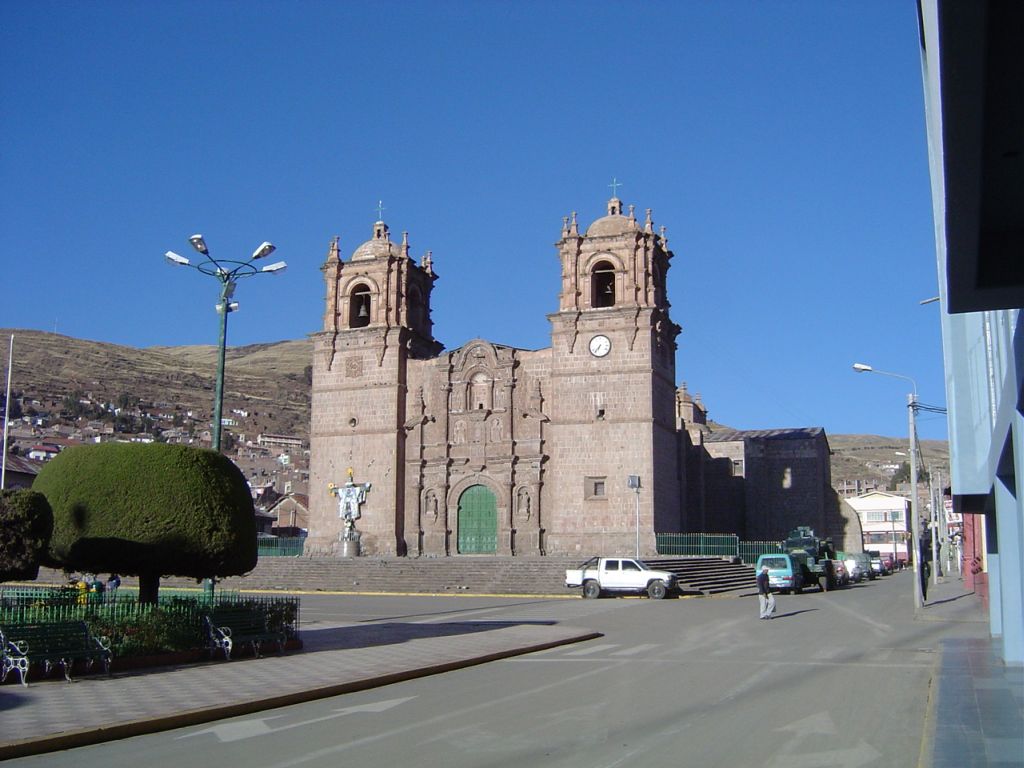
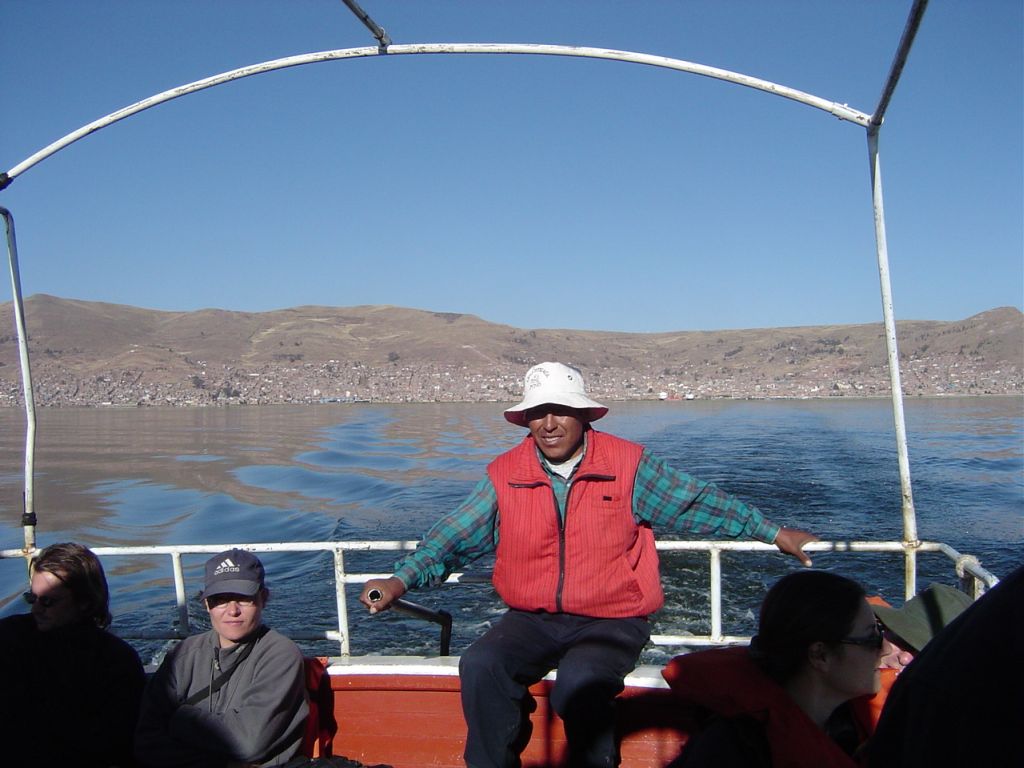
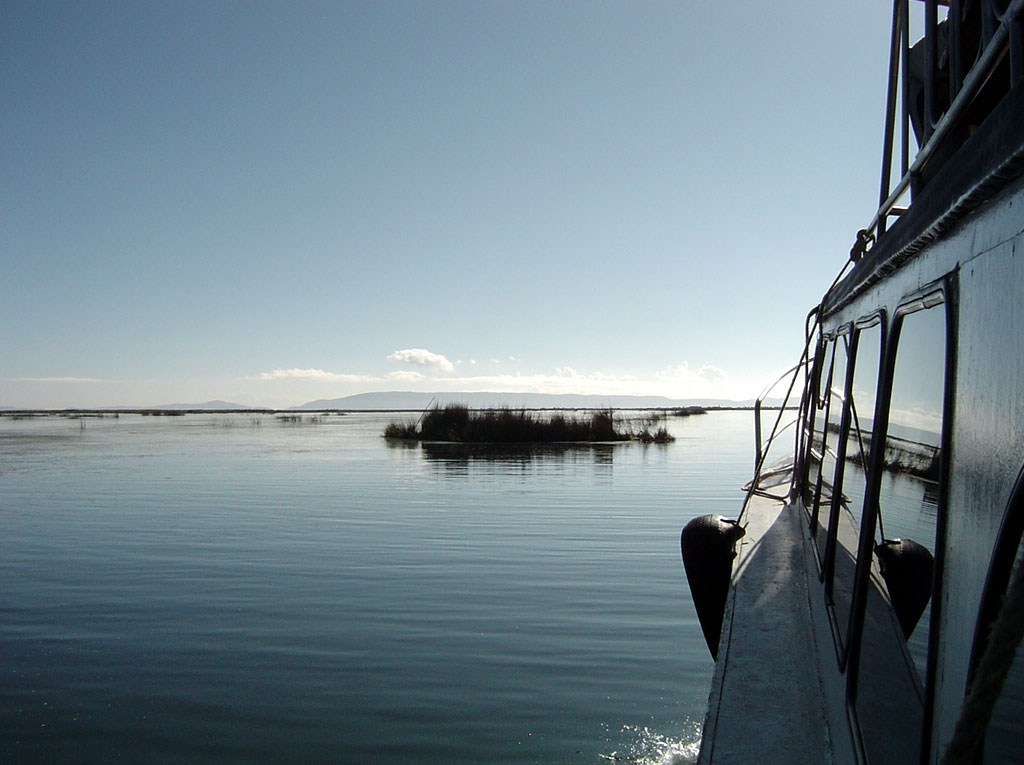
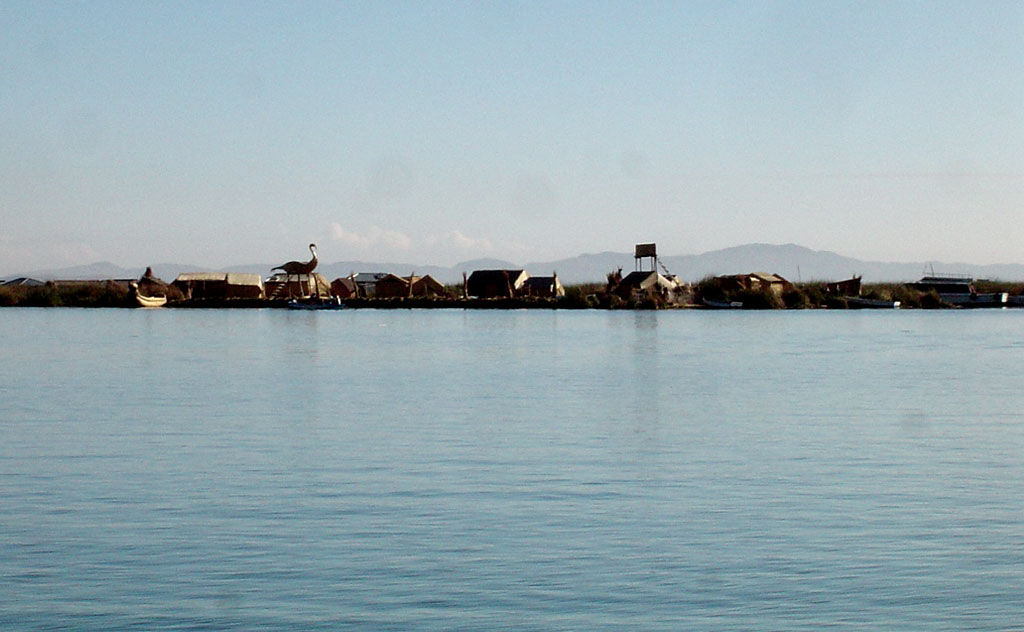
Approaching floating village made entirely of reeds
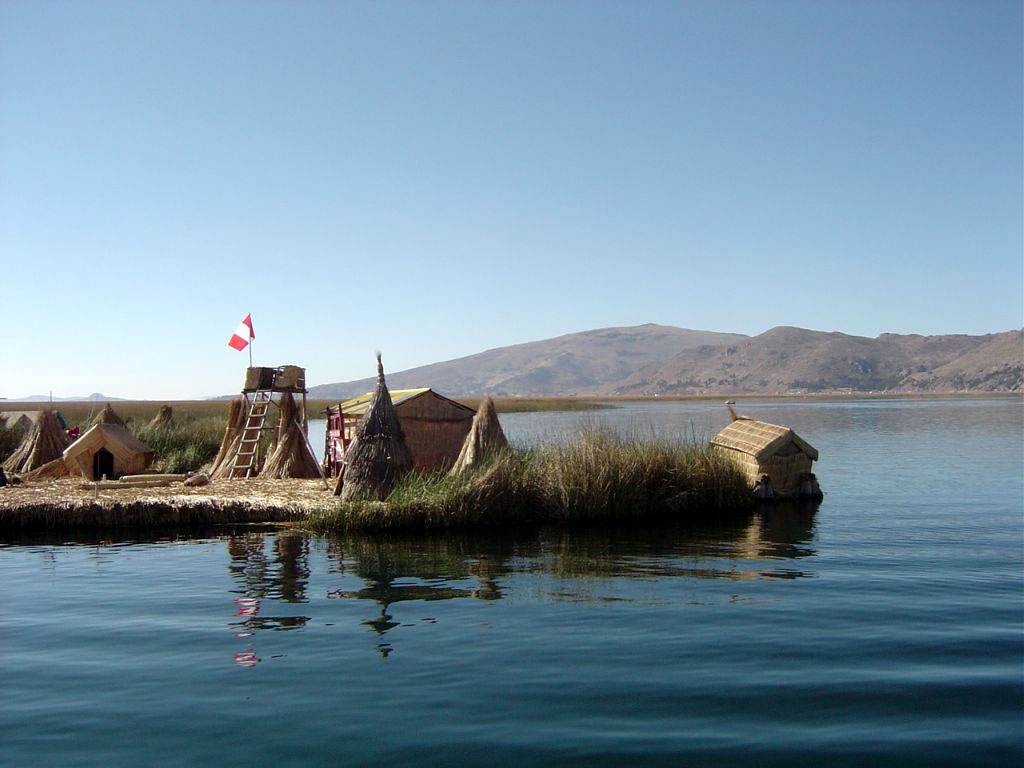
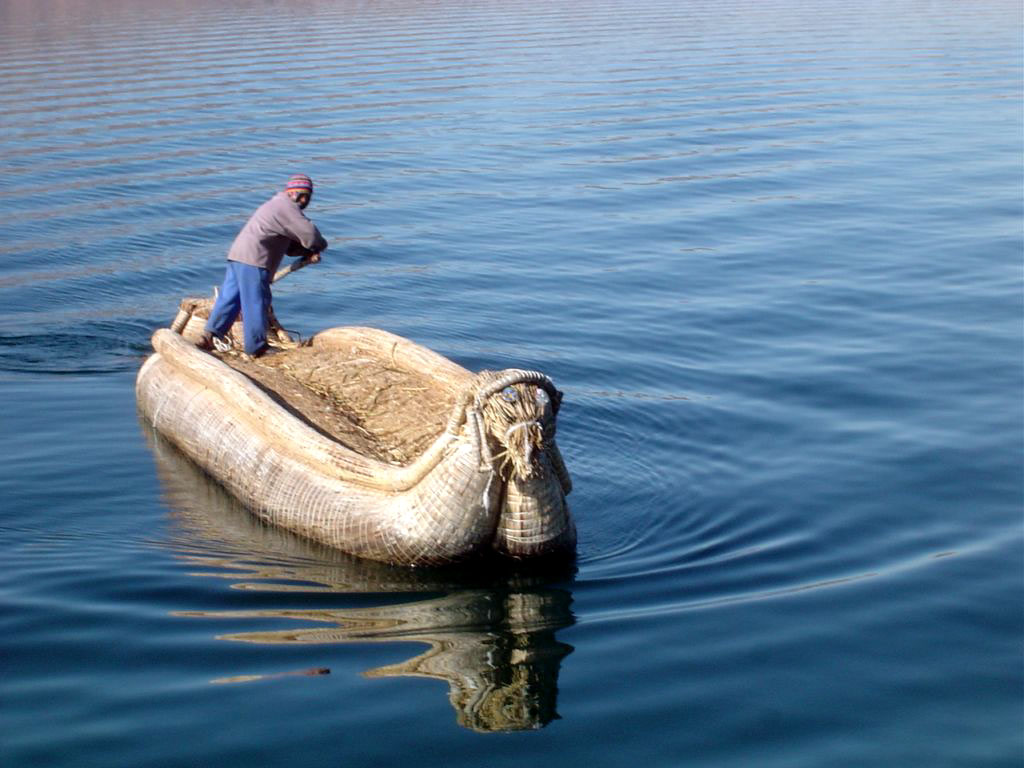
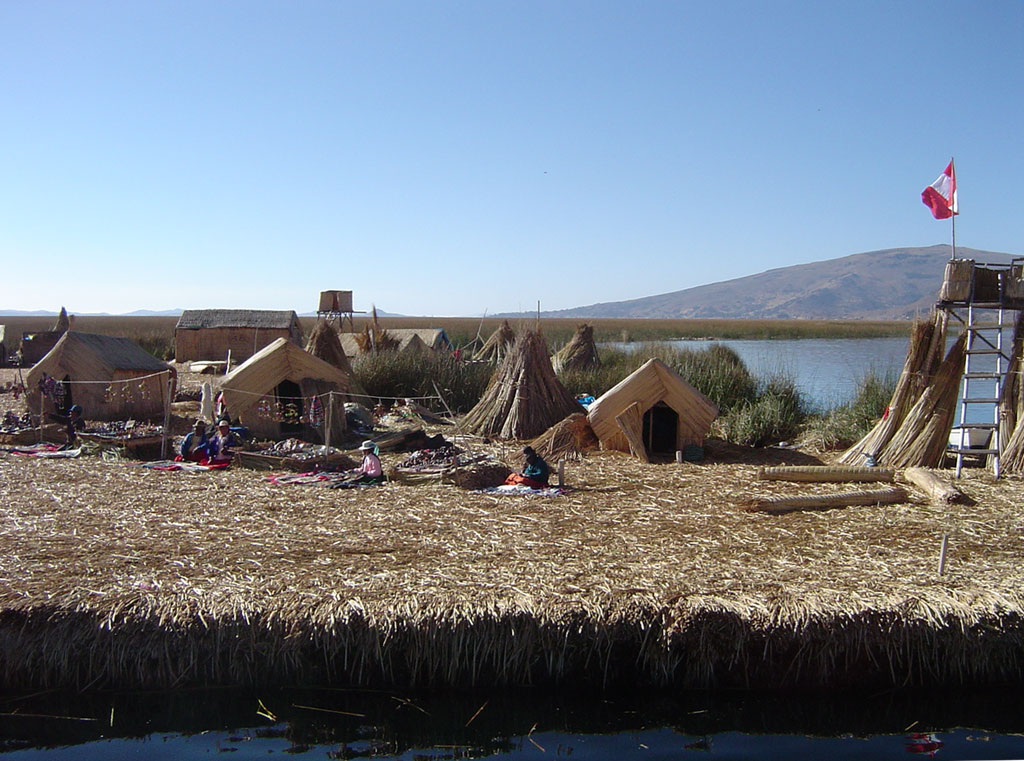
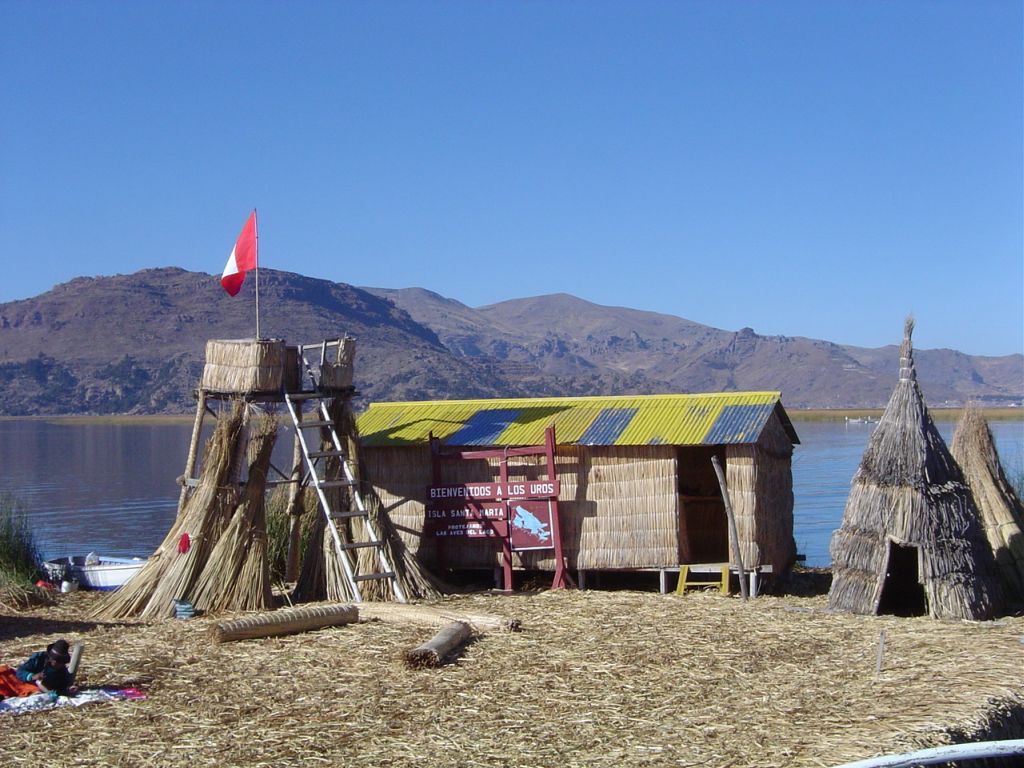
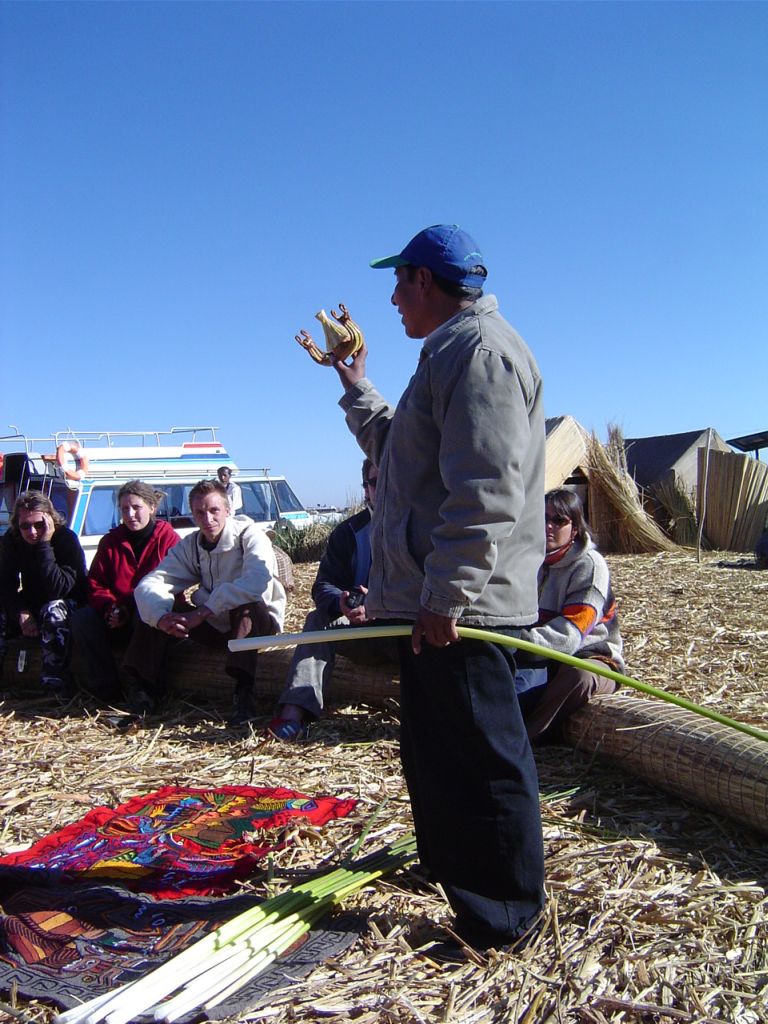
The little boat now lives at my house
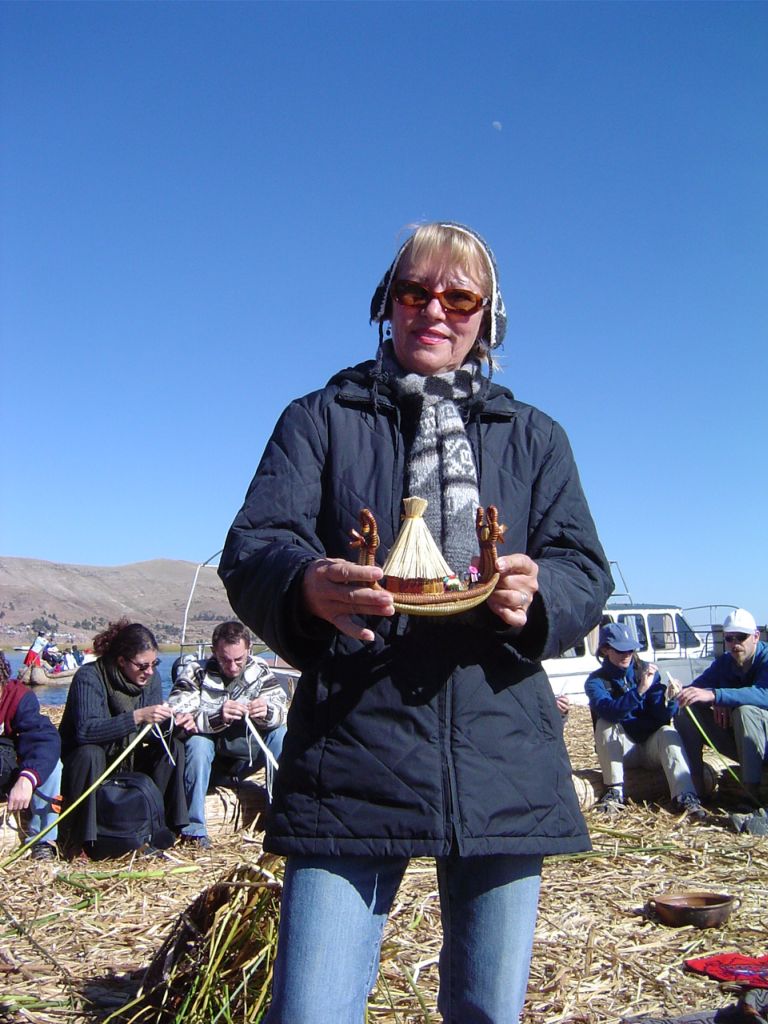
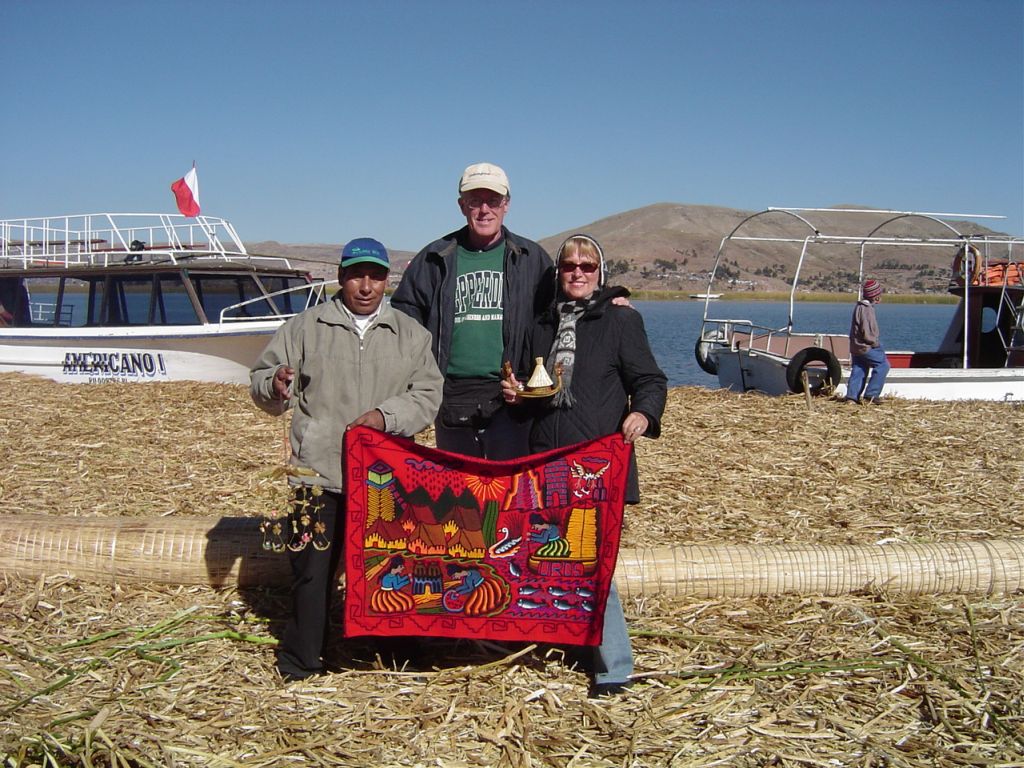
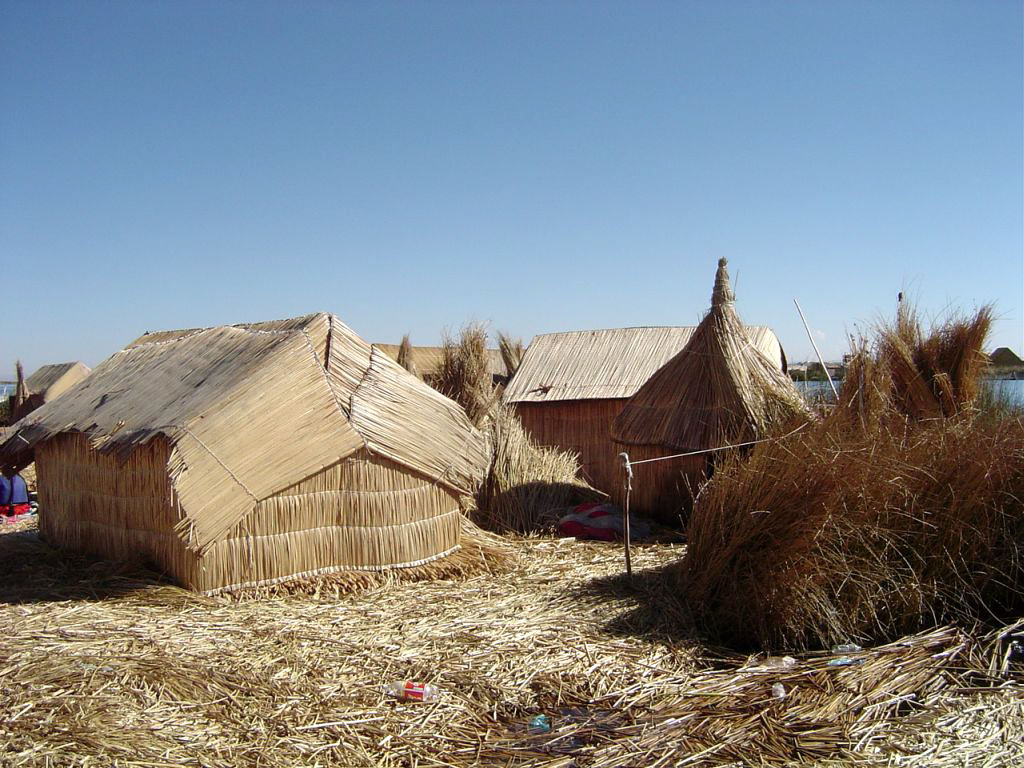
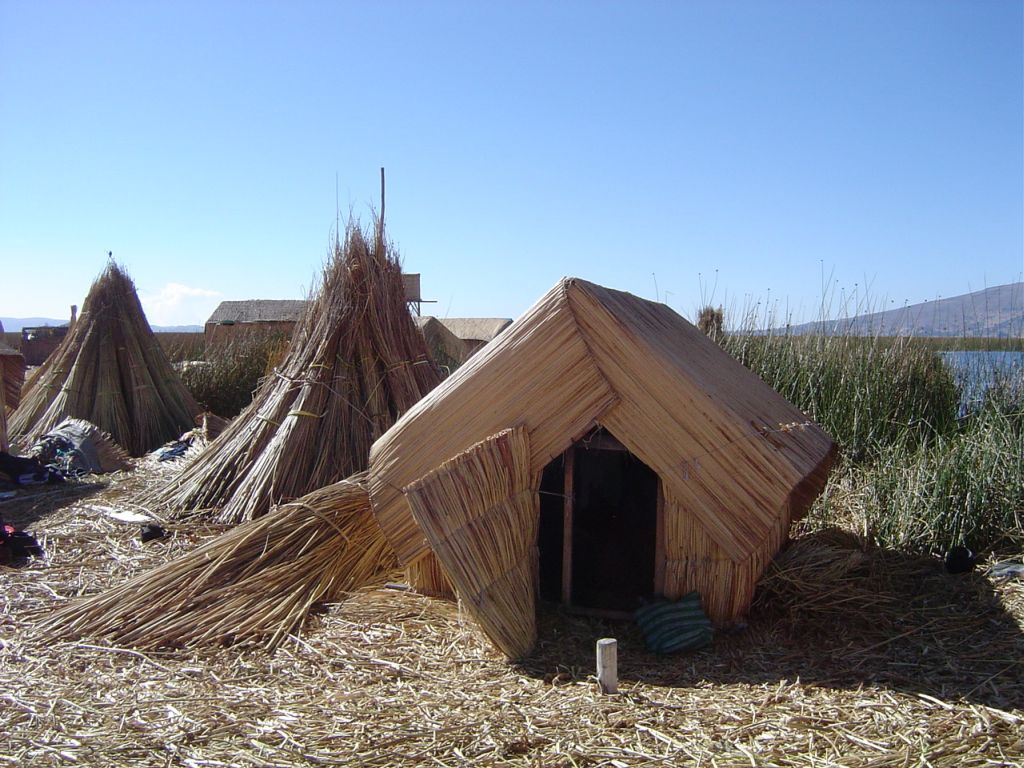
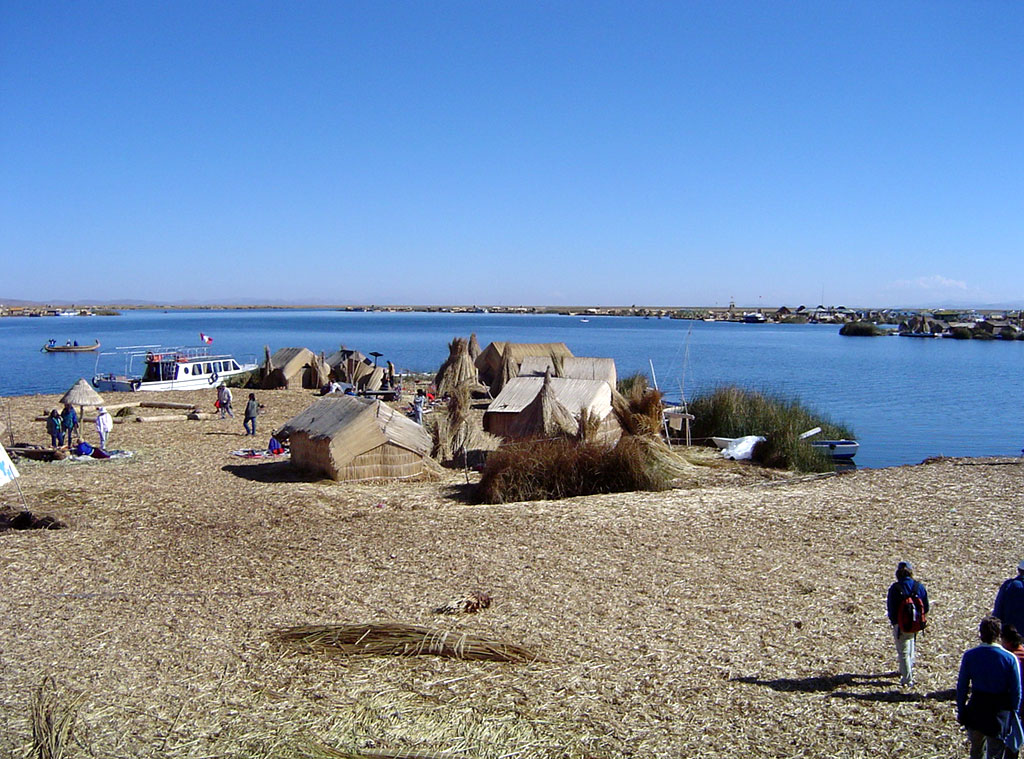
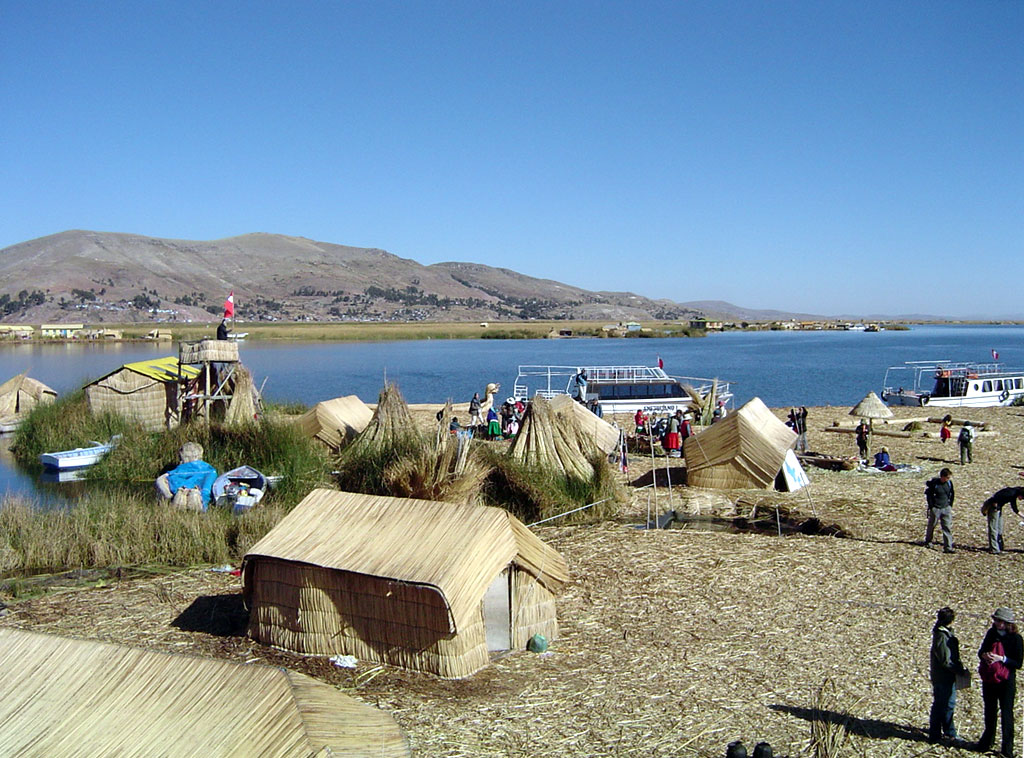
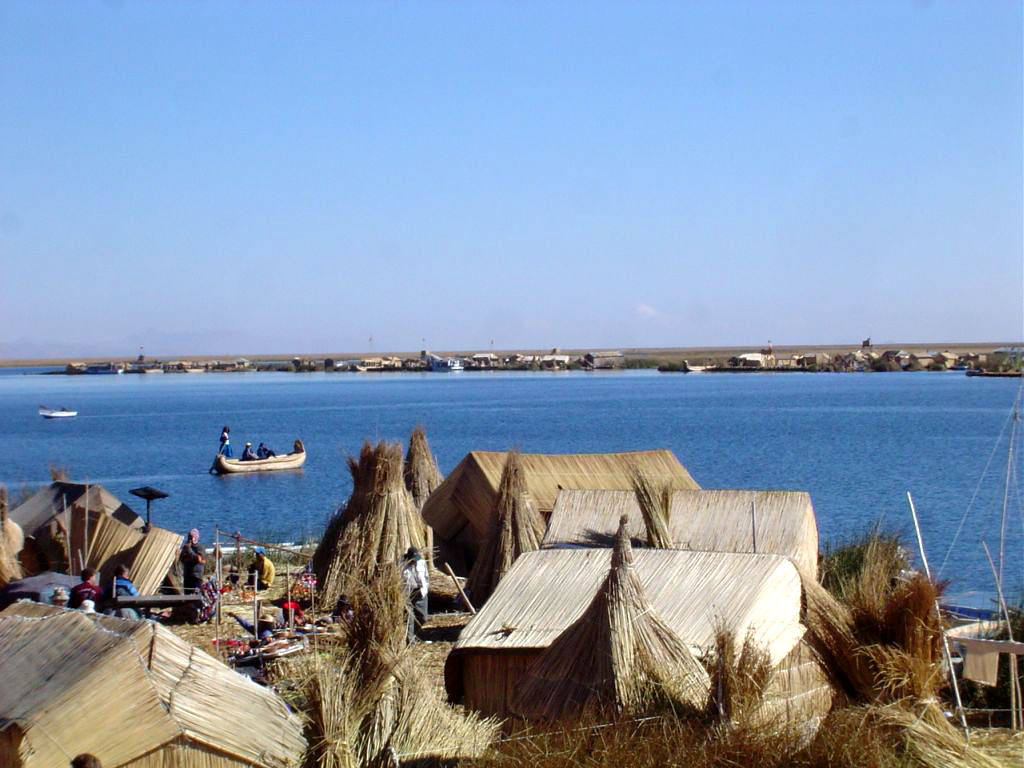
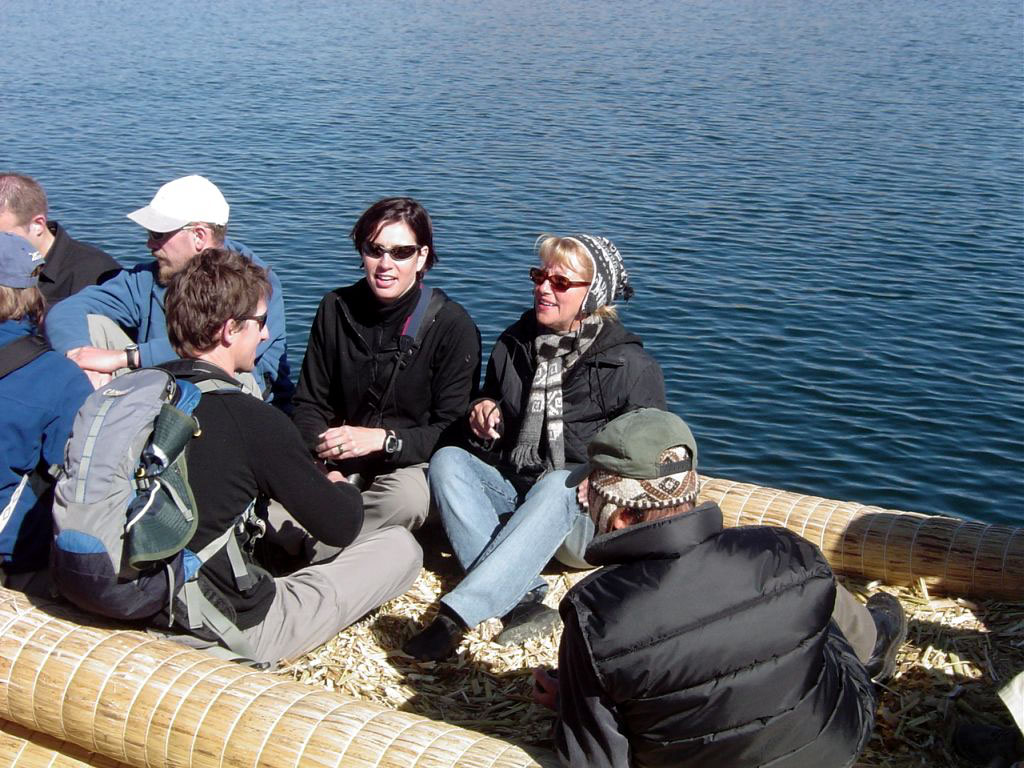
OK, who failed to make the "donation" of 3 Peruvian Soles?
We'll wait here until the guilty party comes up with it.. or one US$
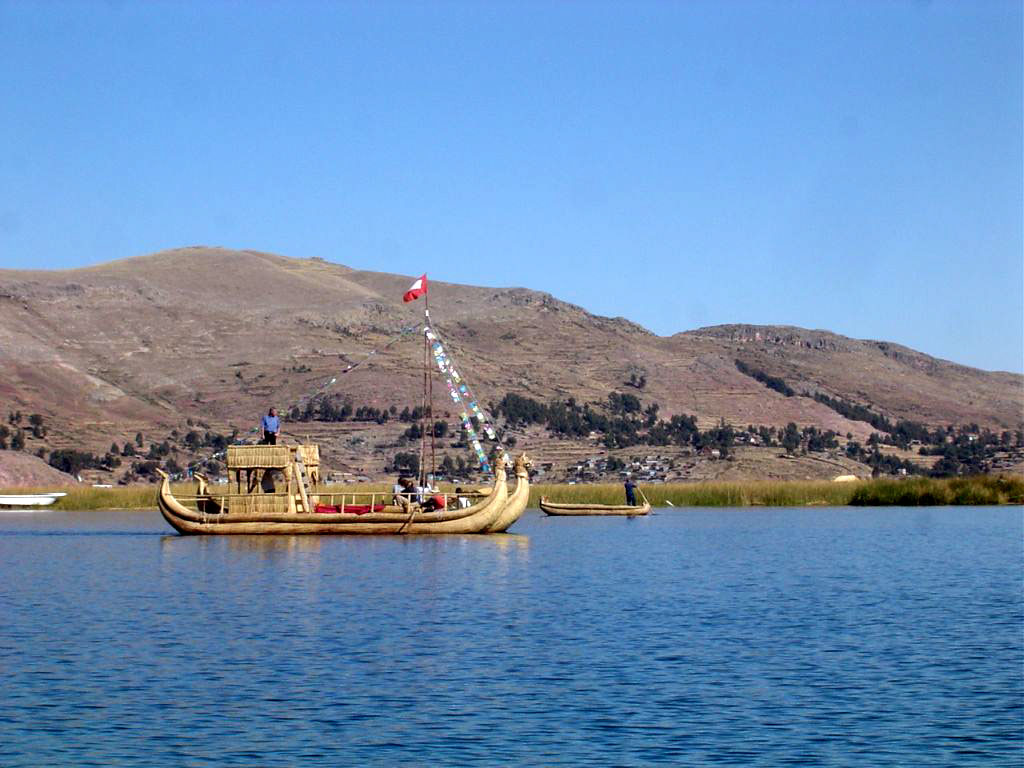
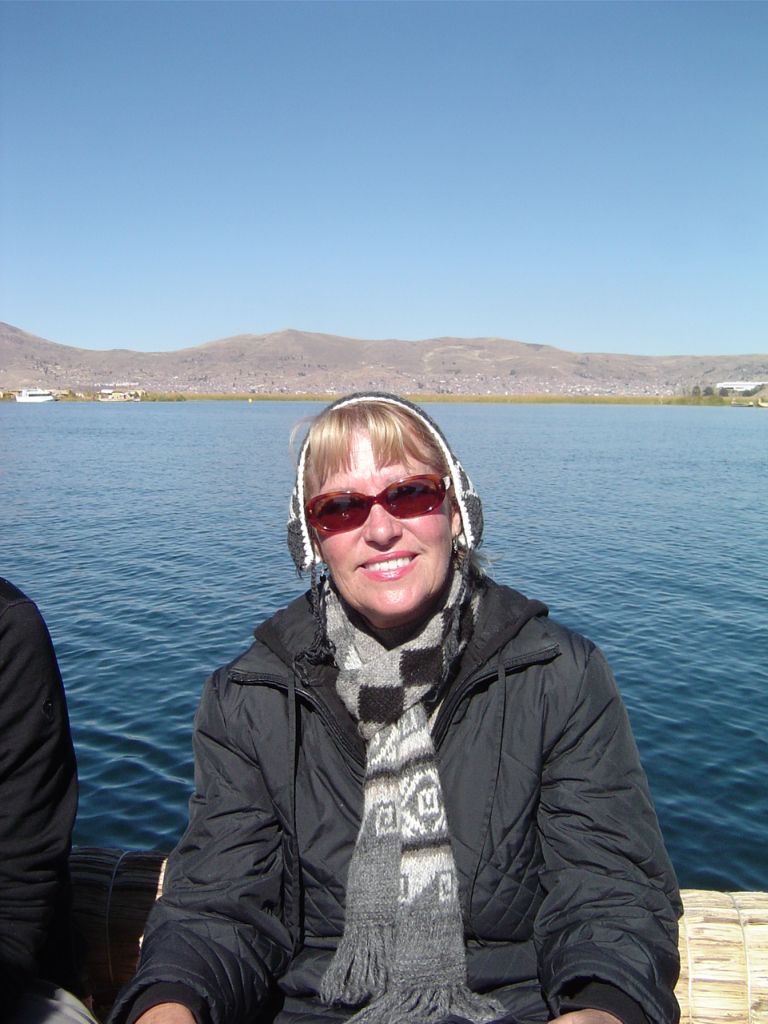
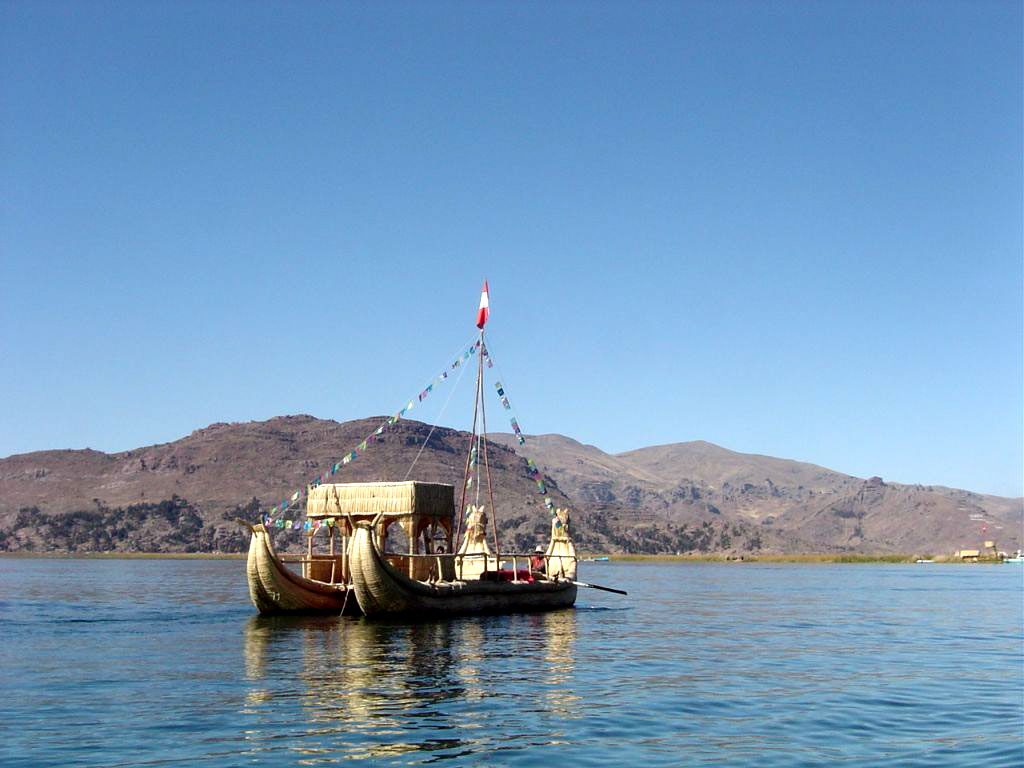
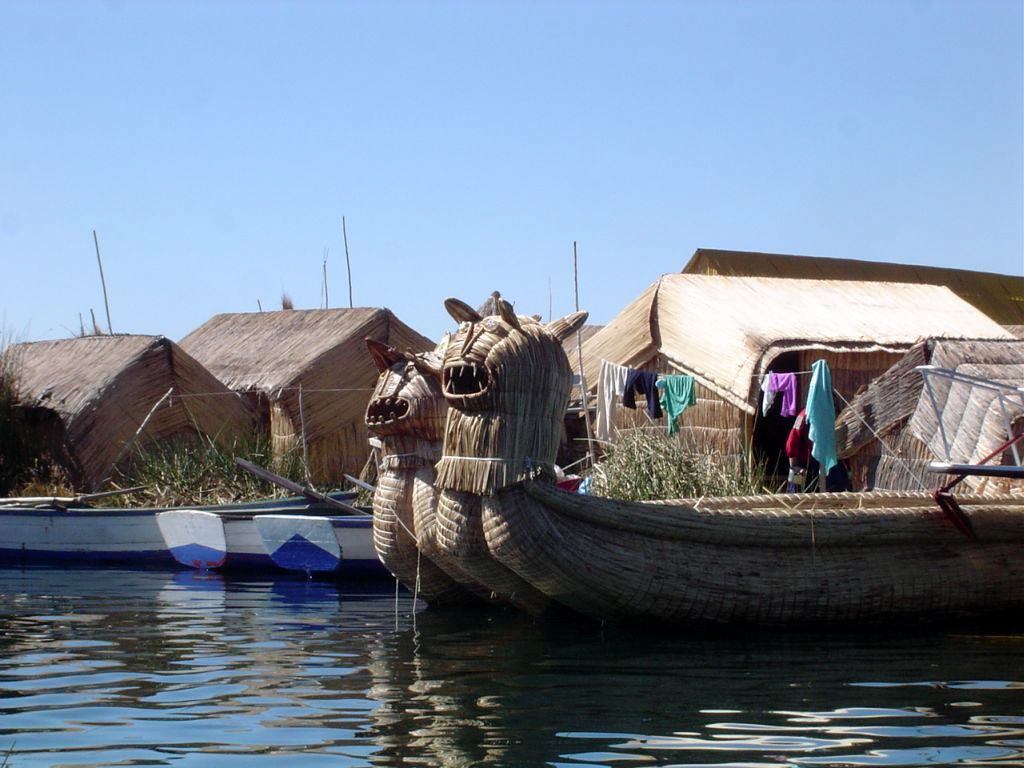
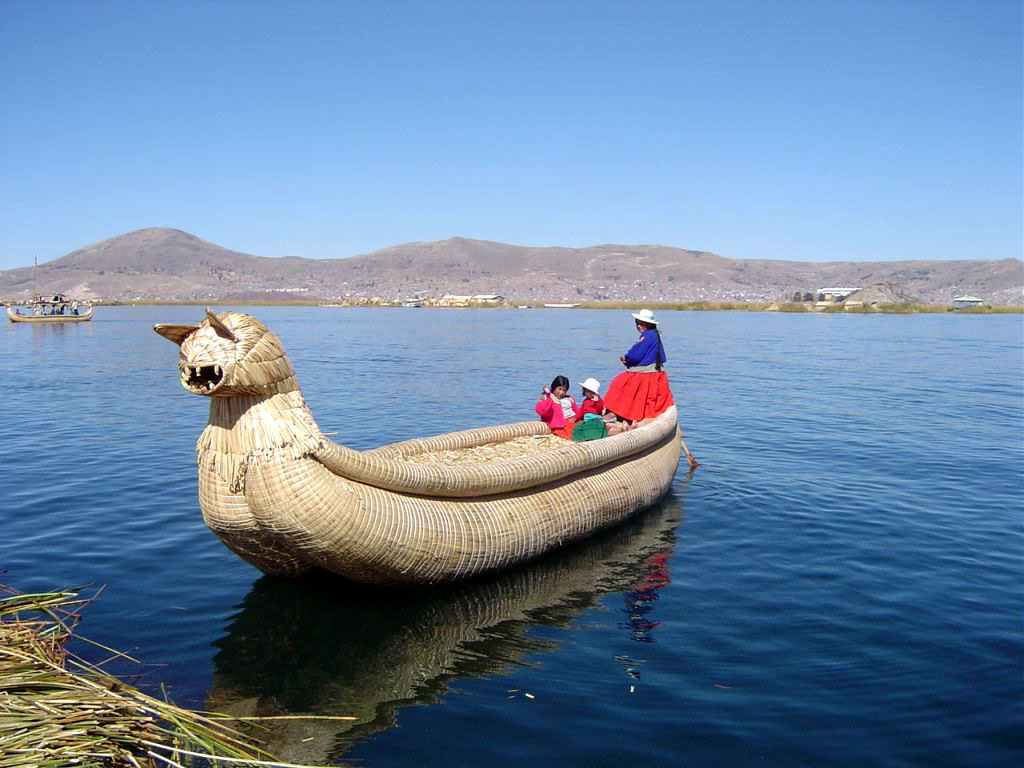
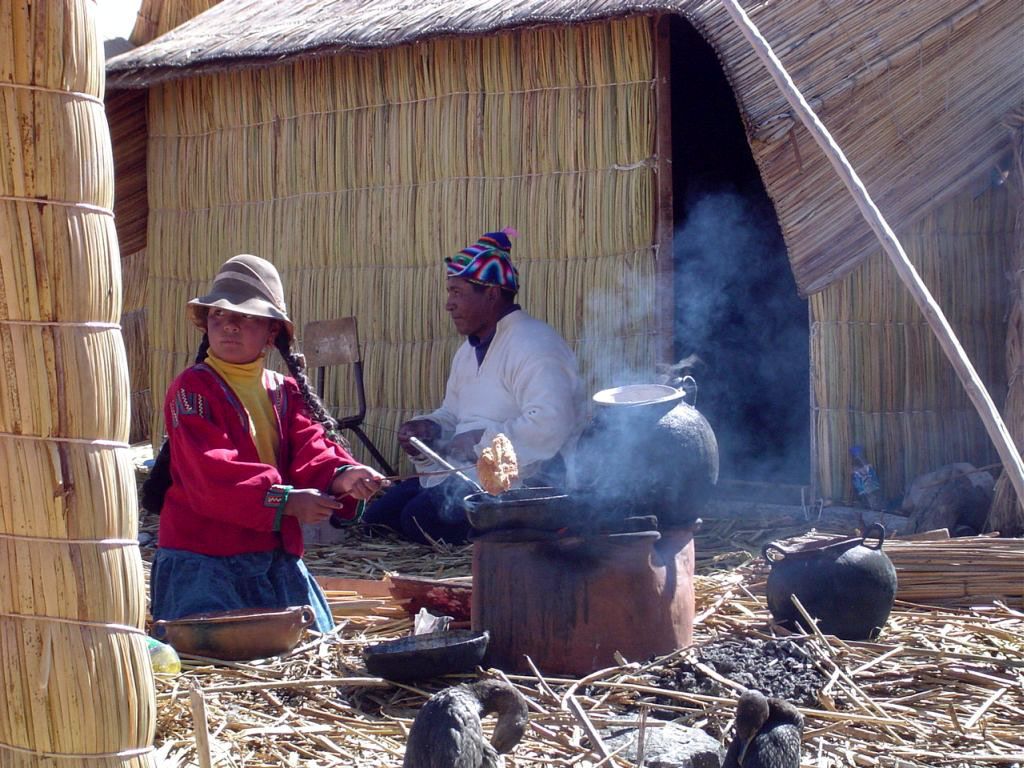
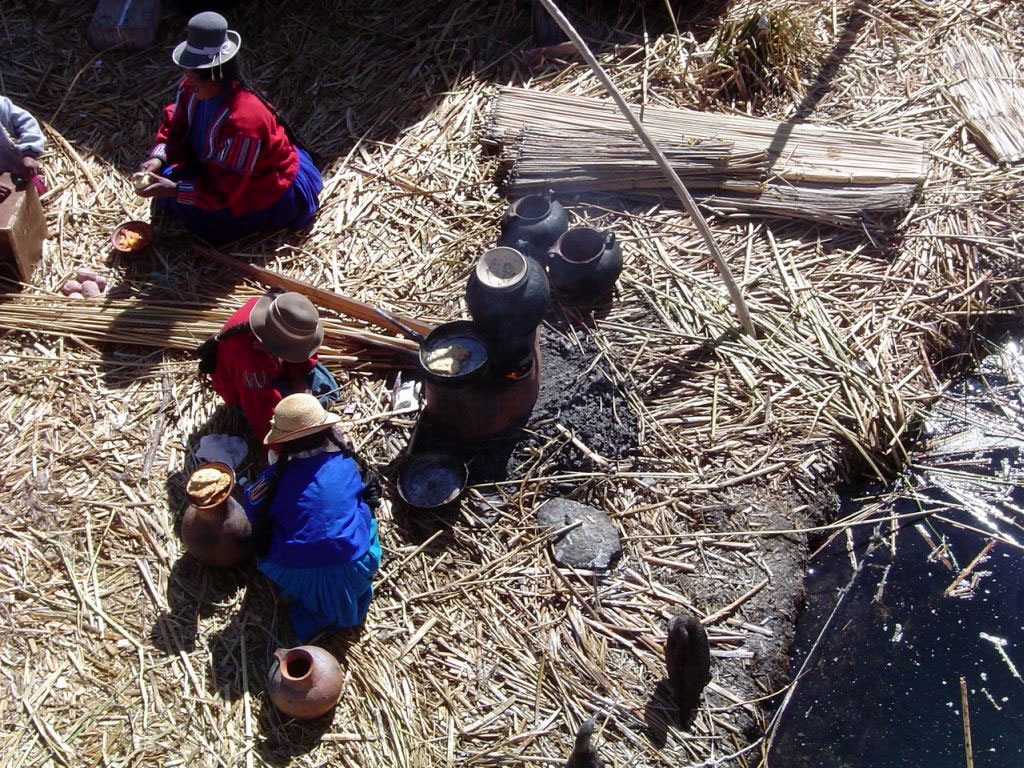
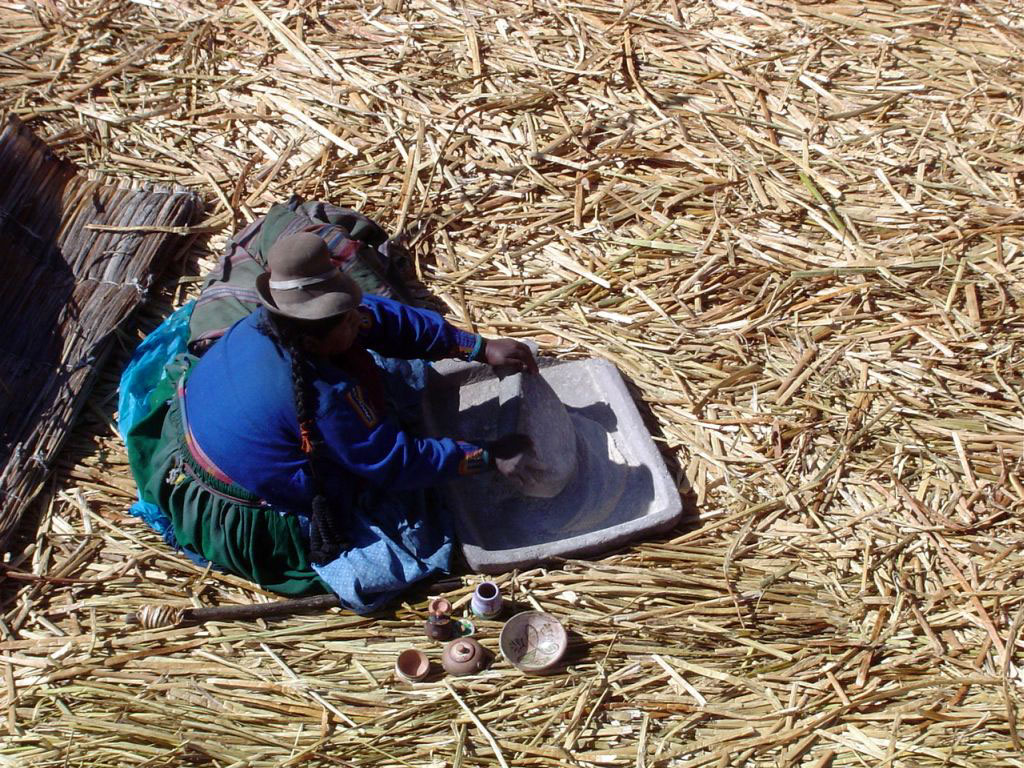
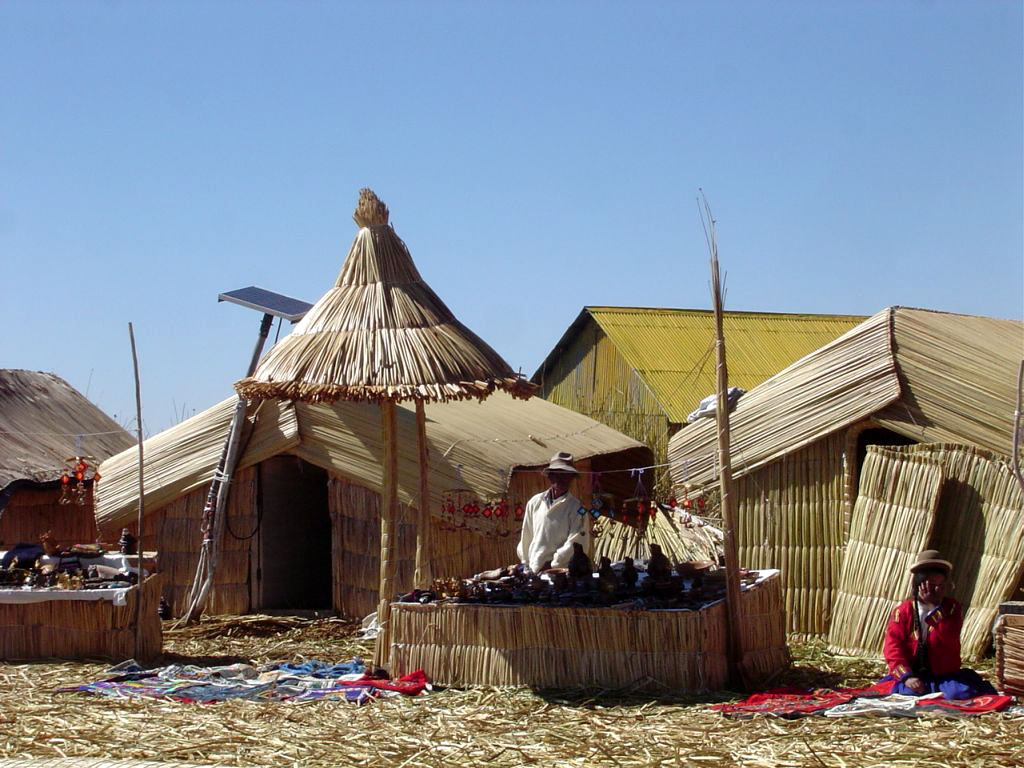
Ready for business. The solar panel is for the TV
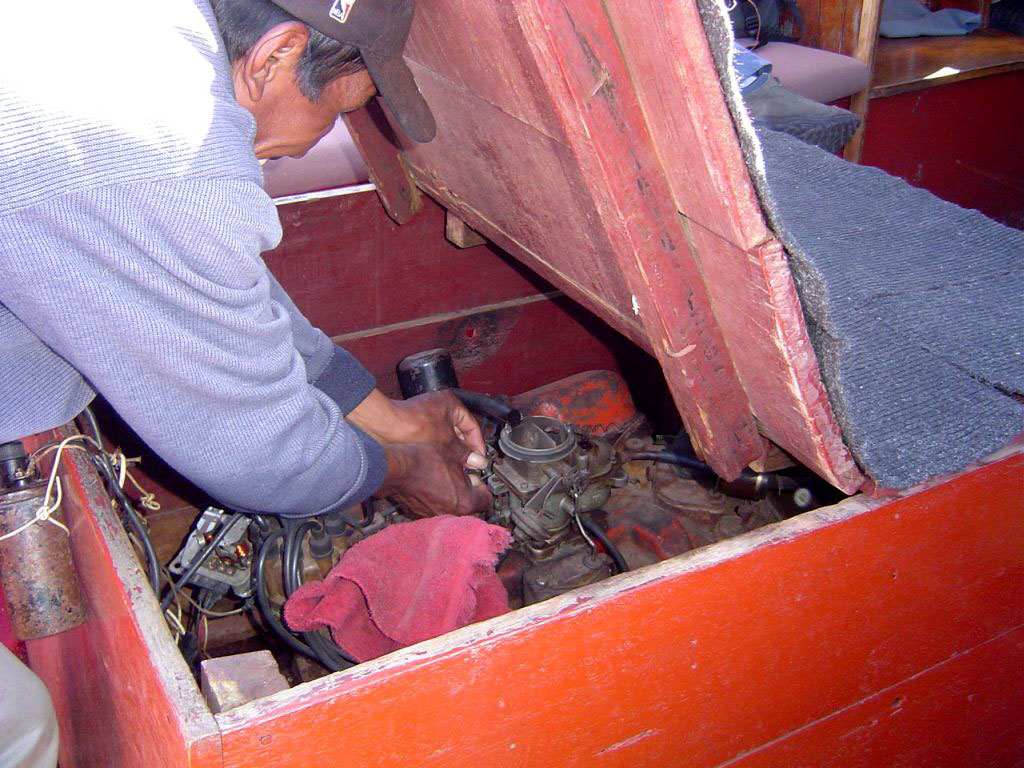
Into every life a little rain must fall
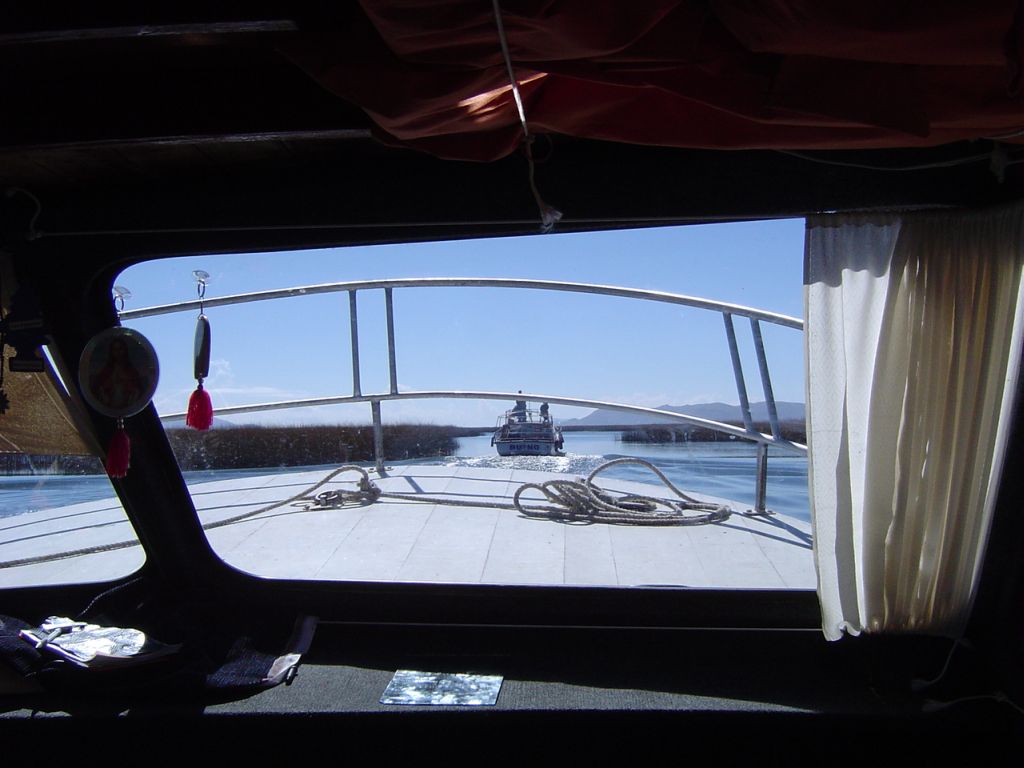
On the "road" again...
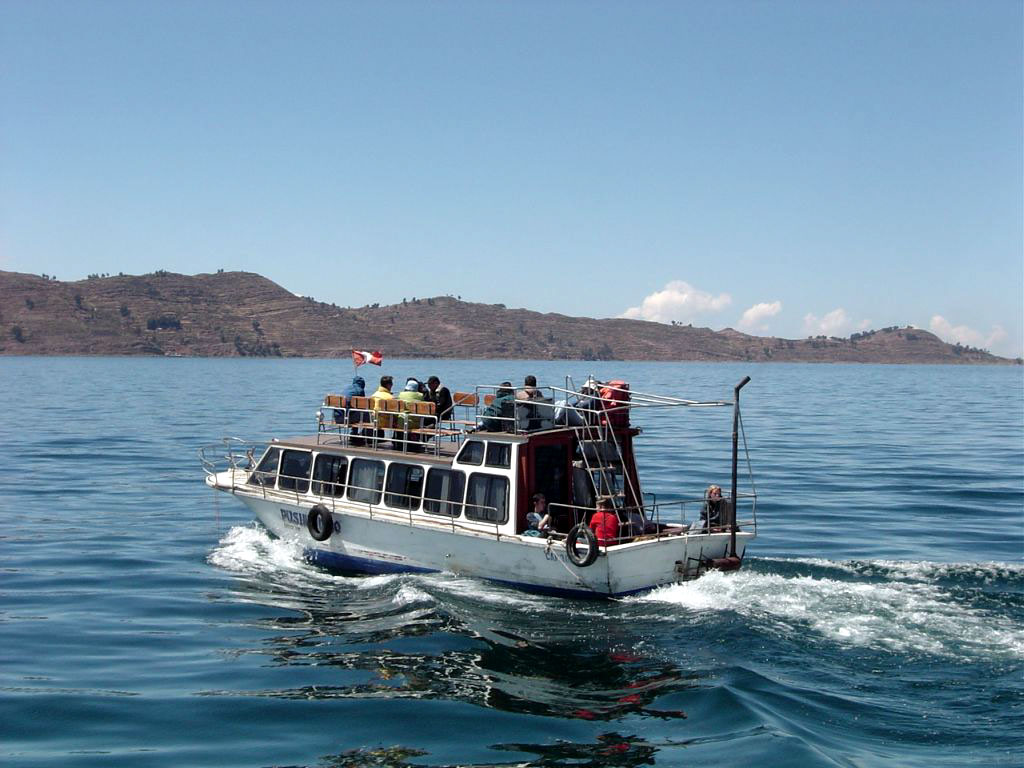
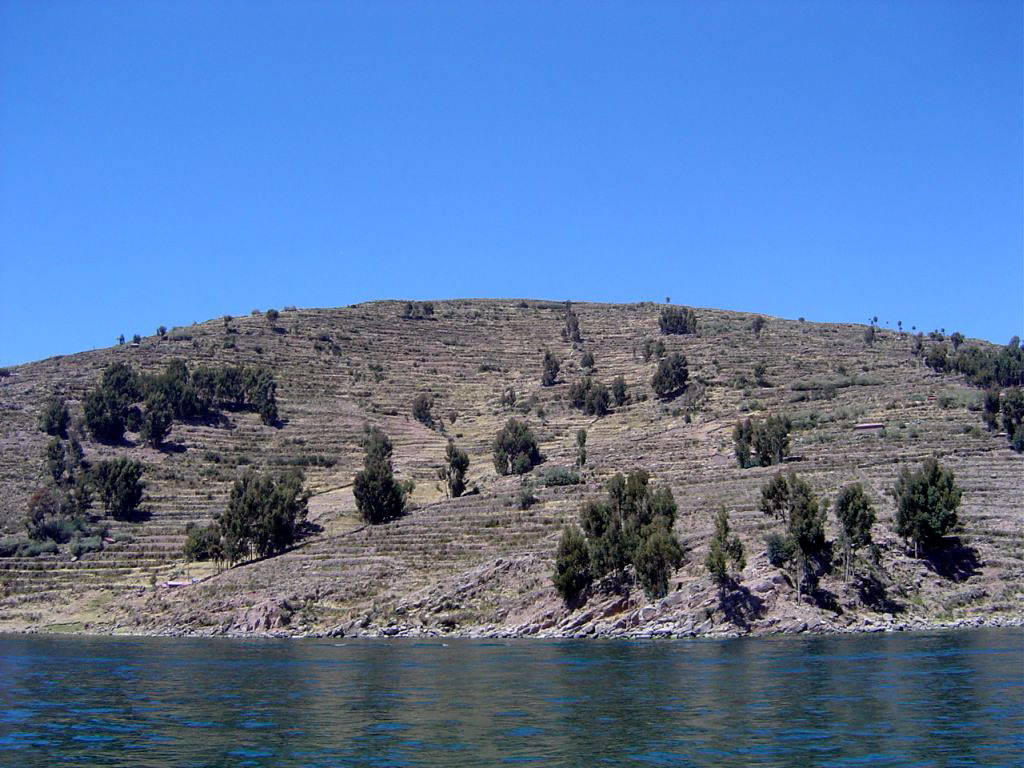
Lunch will be served at the restuarant at the top of this mountain
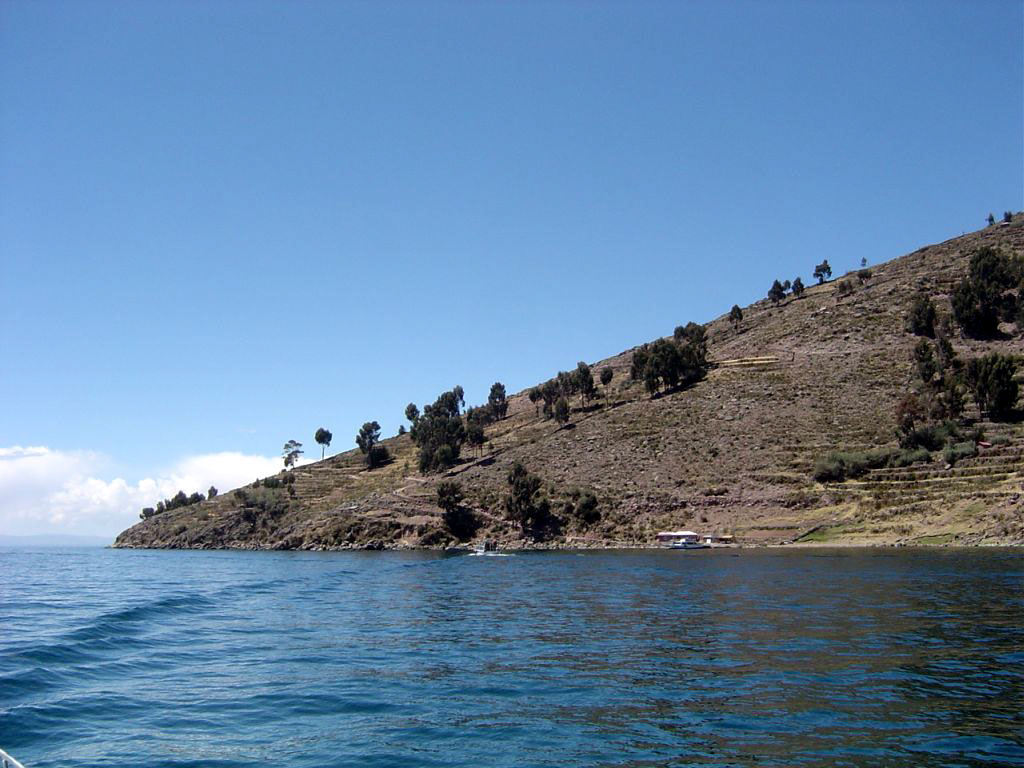
The walk up begins here
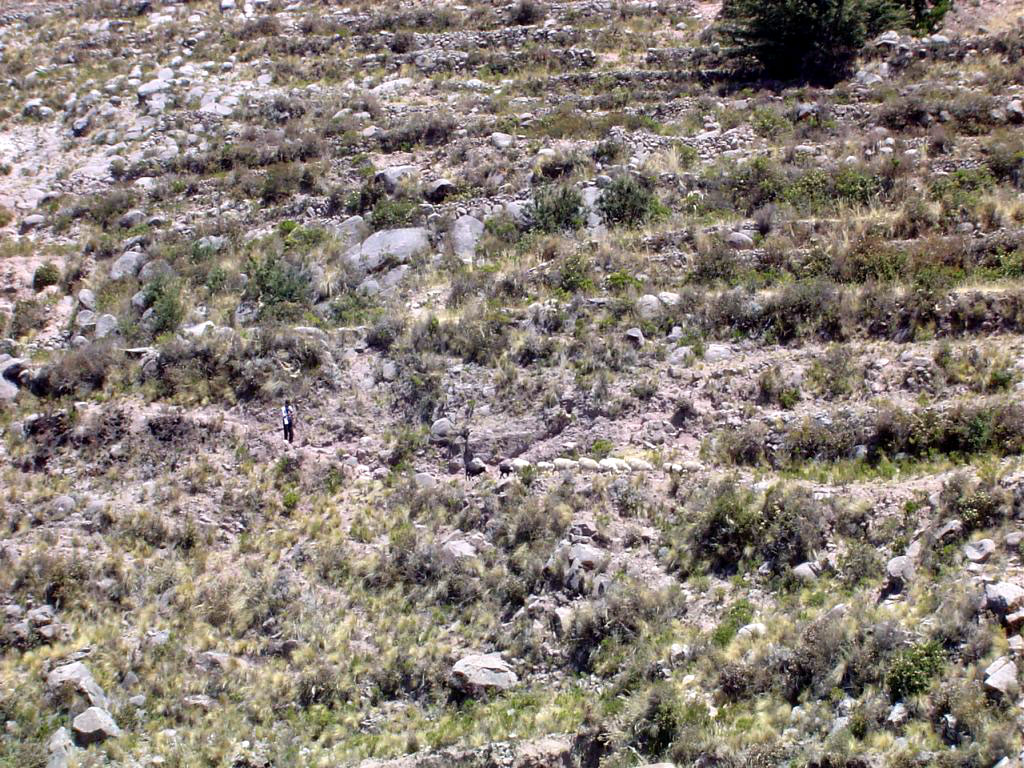
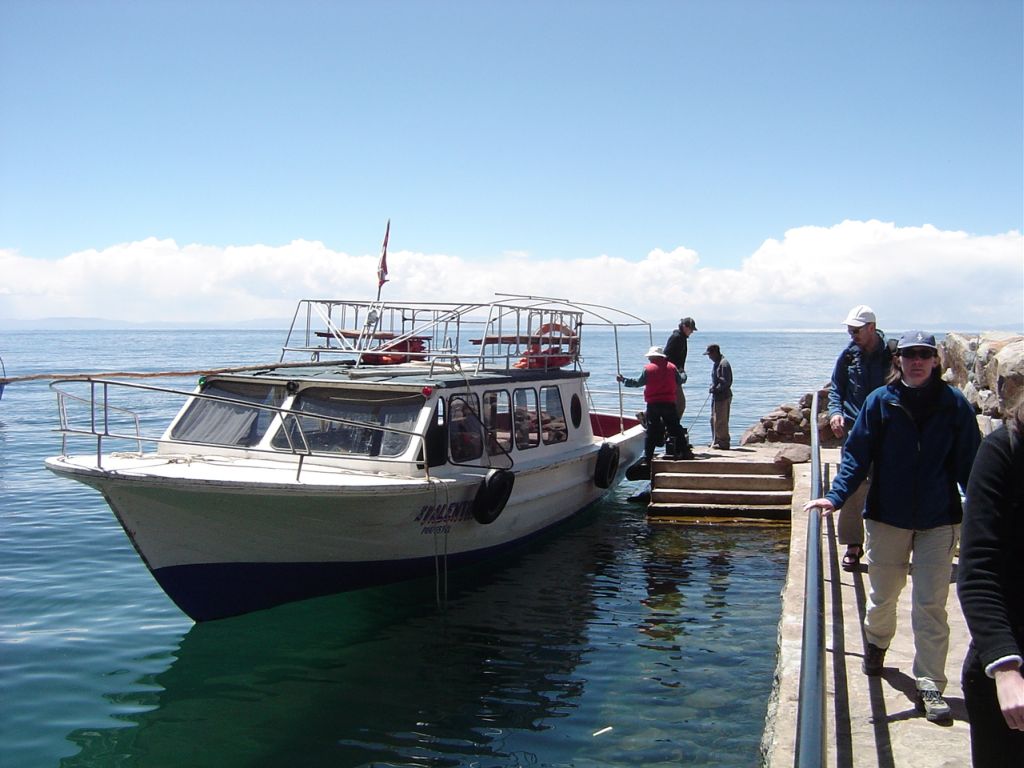
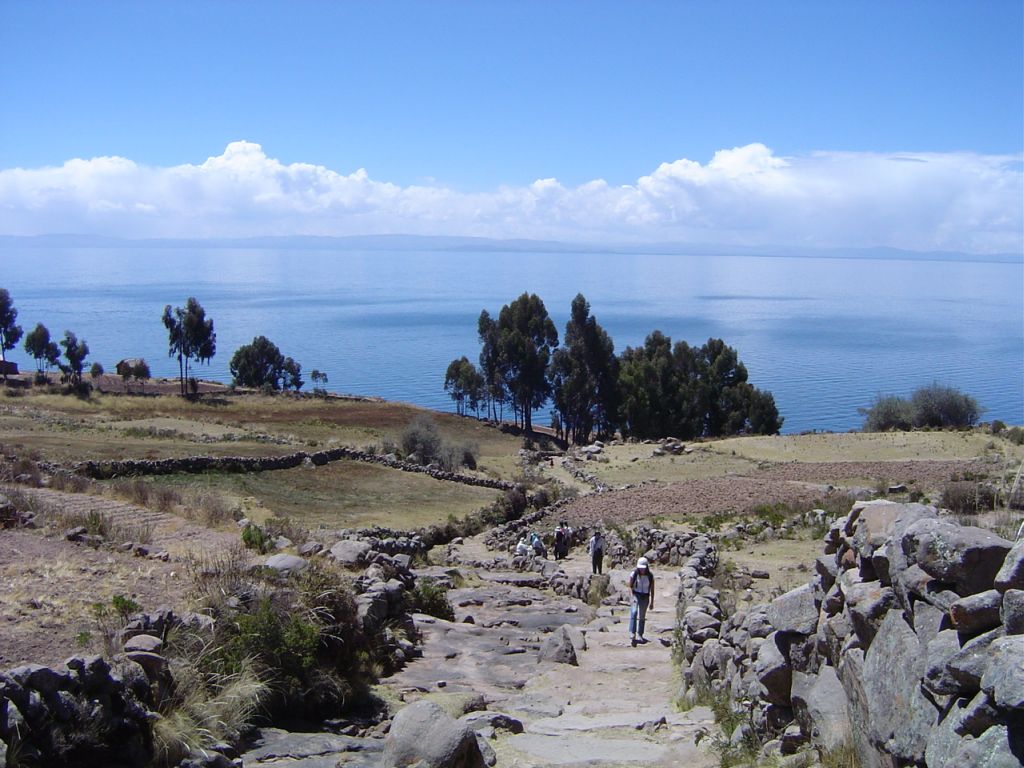
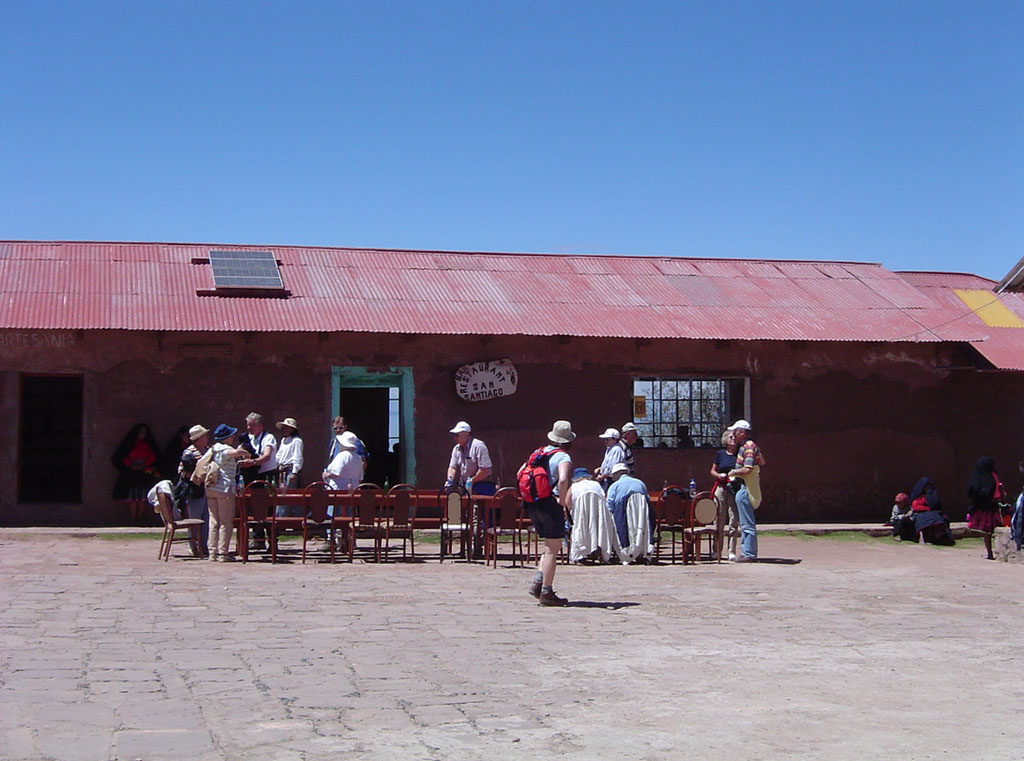
Lunch, at last !!
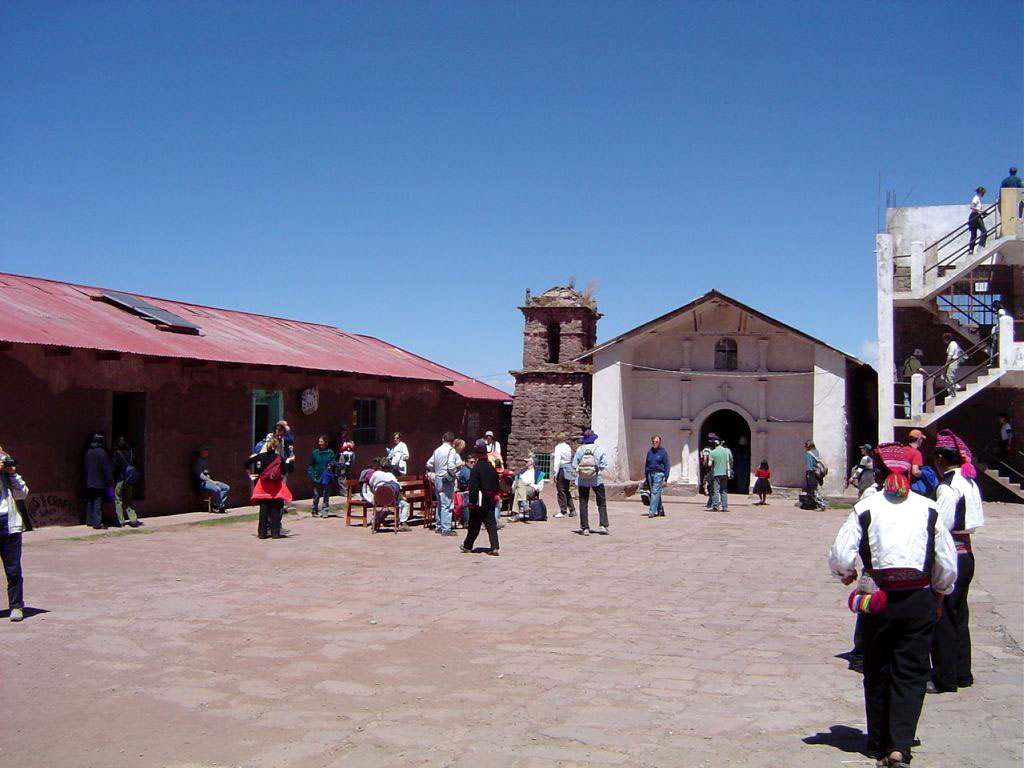
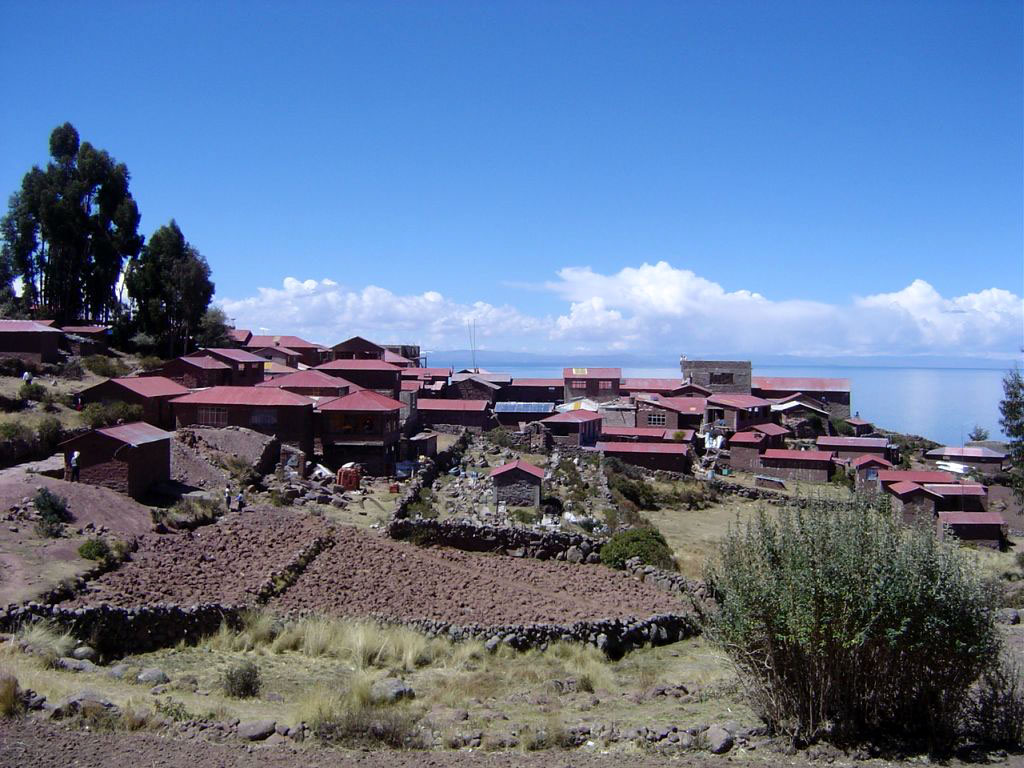
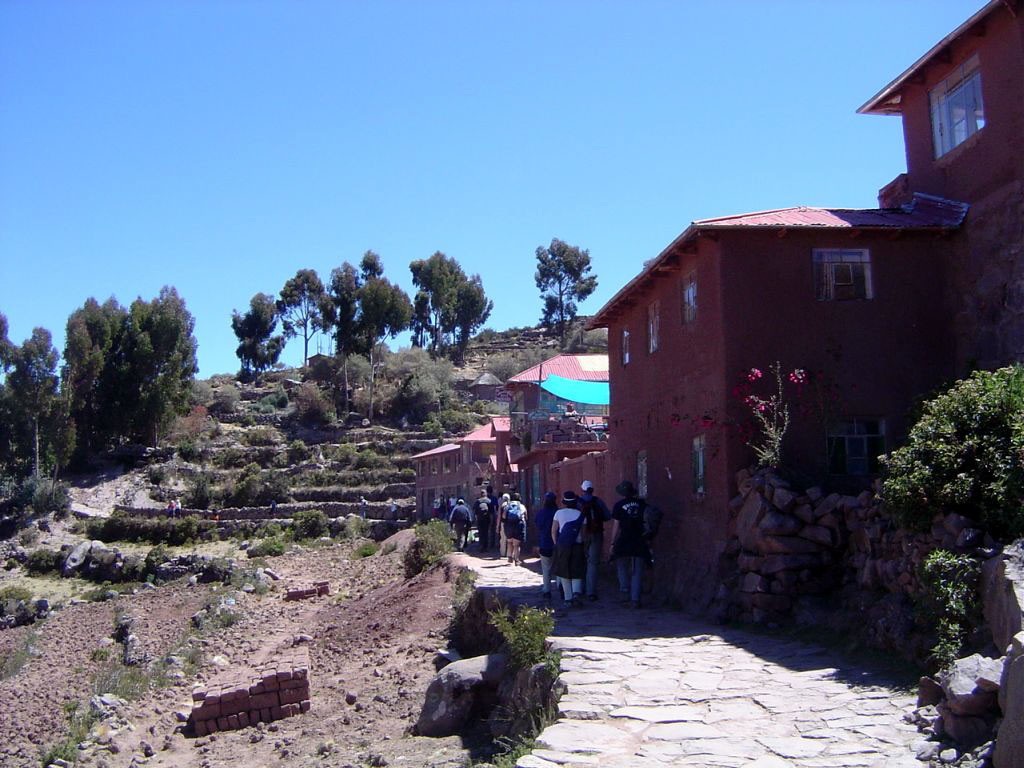
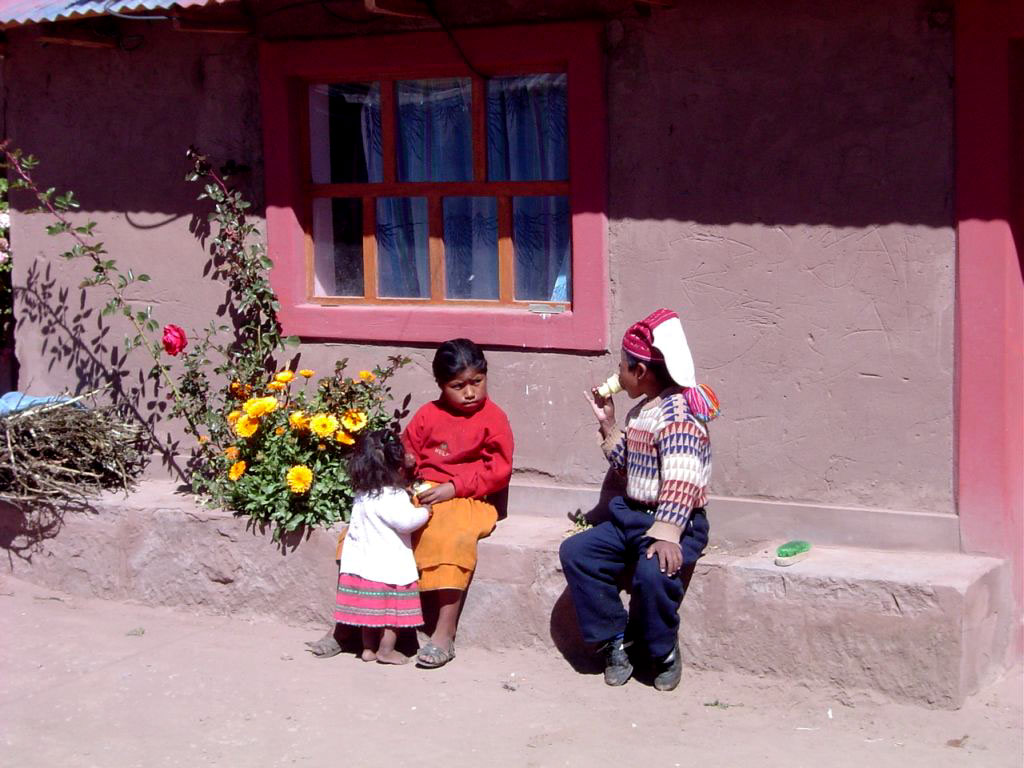
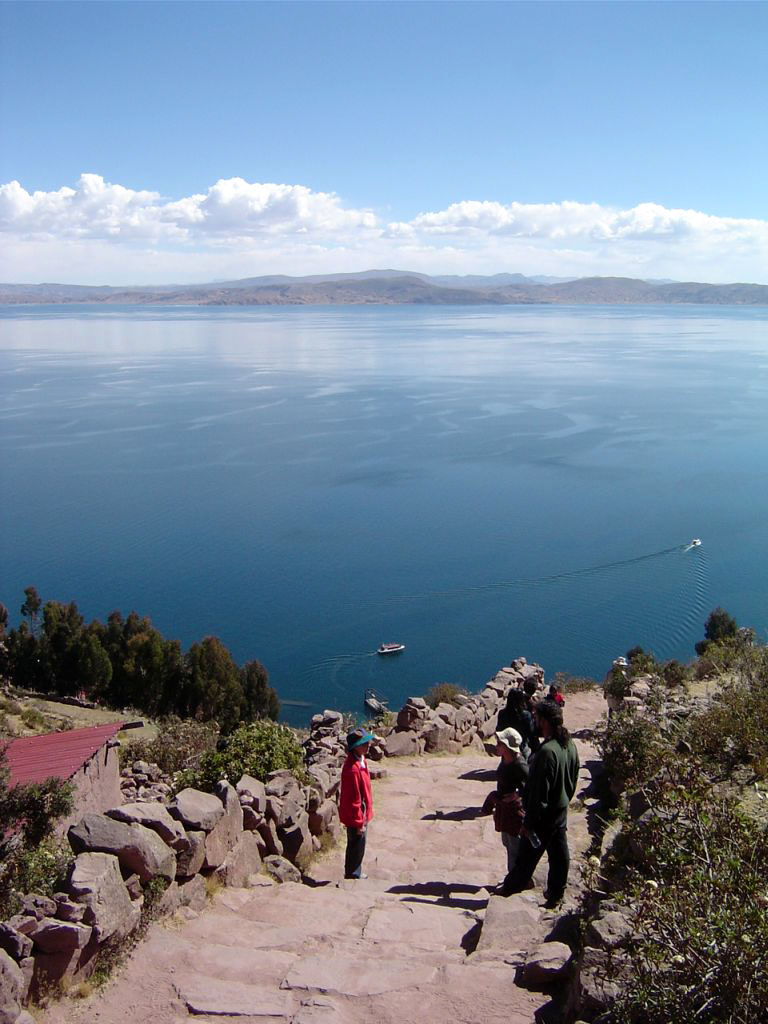
Now we get to walk all the way back down to the boat
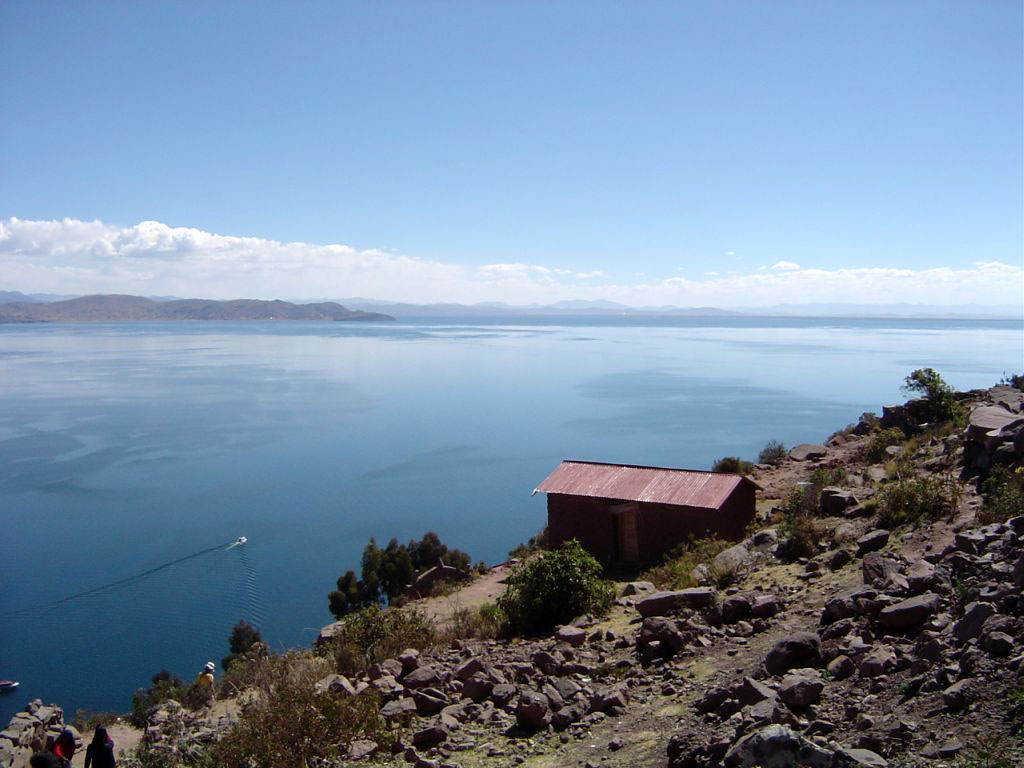
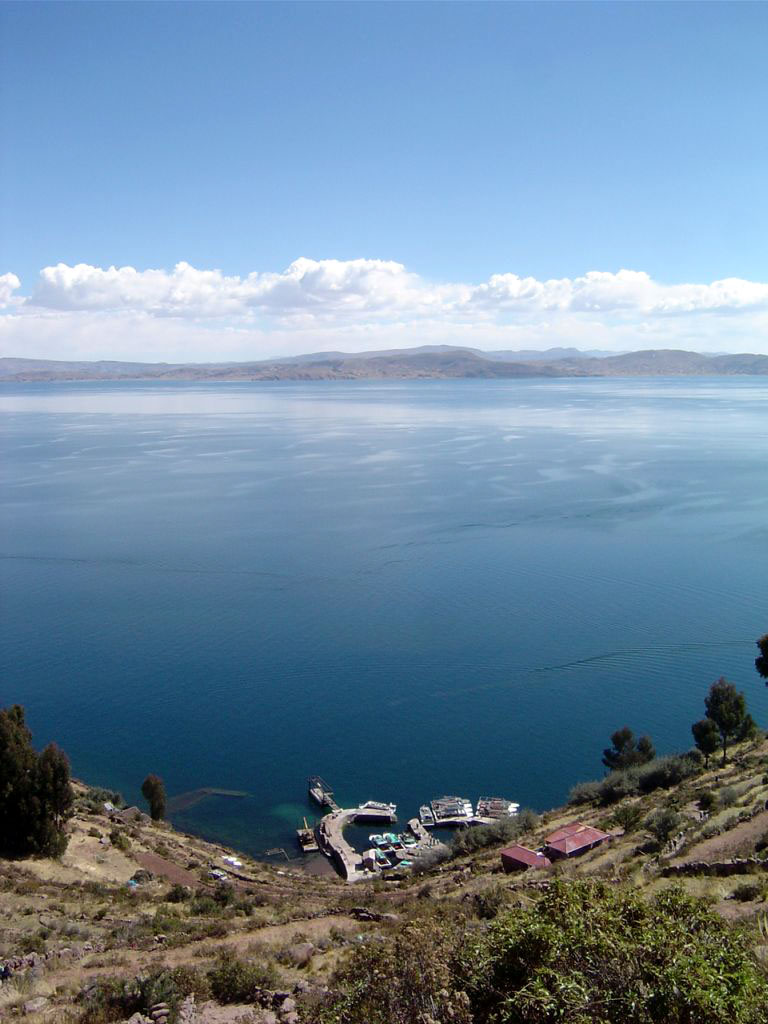
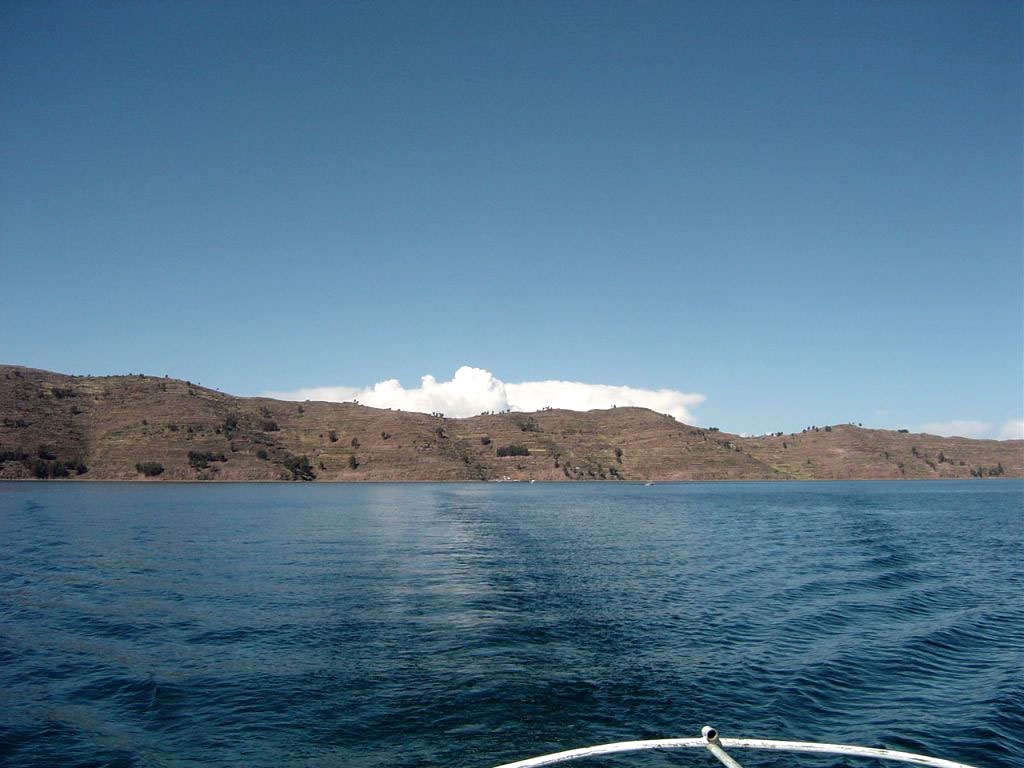
The toughest fight for lunch so far
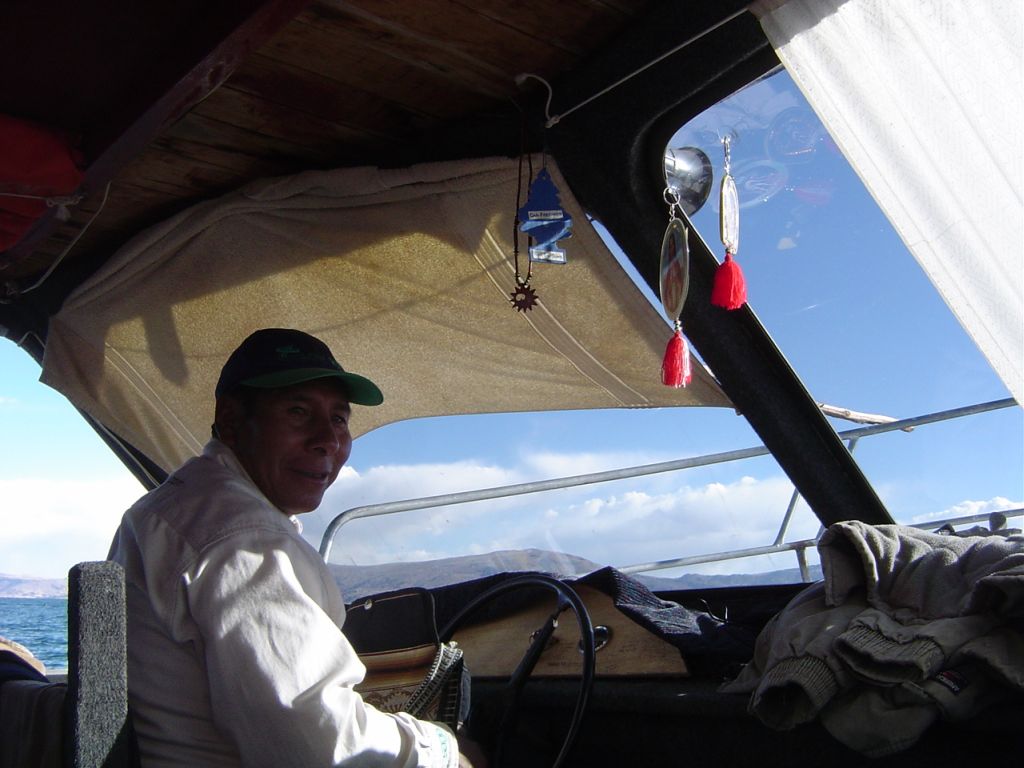
Heading home
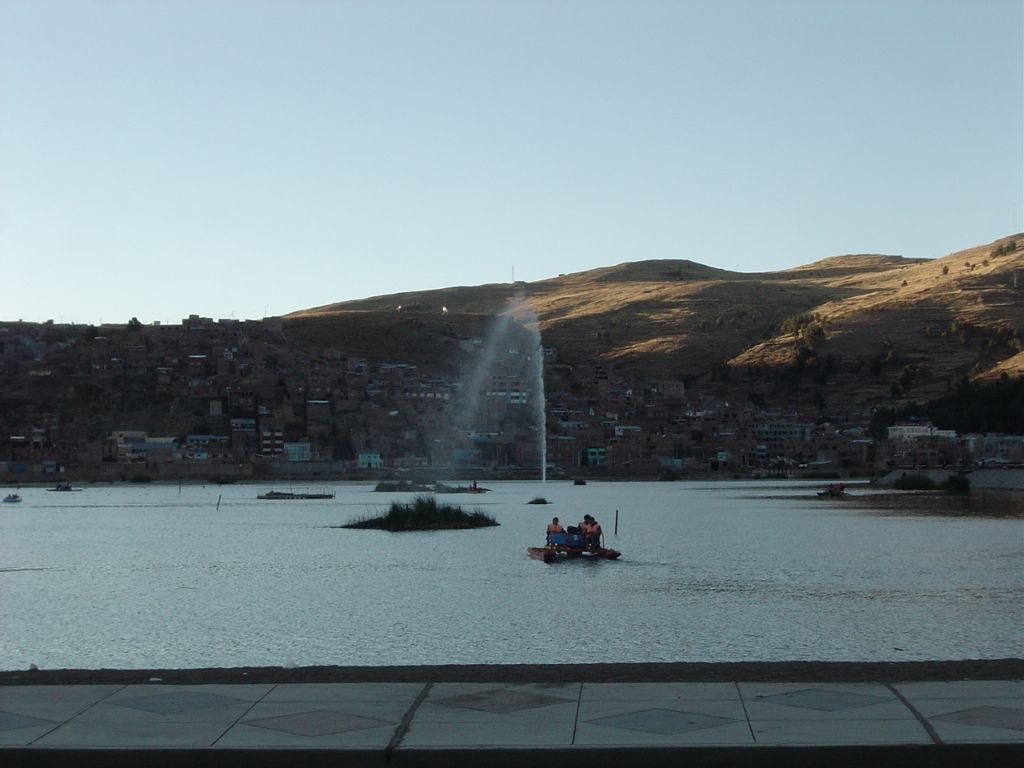
Back in Puno
September 6th
Puno, Peru to LaPaz, Bolivia
A taxi picked us up at 6:00 AM, taking us to the first of two buses to LaPaz, Bolivia. The first goes through the Bolivian border to Copacabana for a two-hour lunch break, after which a different bus picks up the group for the rest of the trip. Lake Titicaca must be crossed, so all passengers leave the bus which goes alone on a ferry across the lake, a distance of perhaps two kilometers. Passengers are forced to buy a ticket for one Boliviano, about 12 cents, on a small out-board powered launch. Rejoined on the far shore, the bus got us into LaPaz at 5:00 PM.
Taxis in LaPaz are 4 and 6 passenger mini-busses, holding 8 to 12 people. One seat is reserved for a person who sticks his head out the window, yelling the bus's destination. After 20 or 30 of these vehicles arrive at a city square, the noise becomes intense
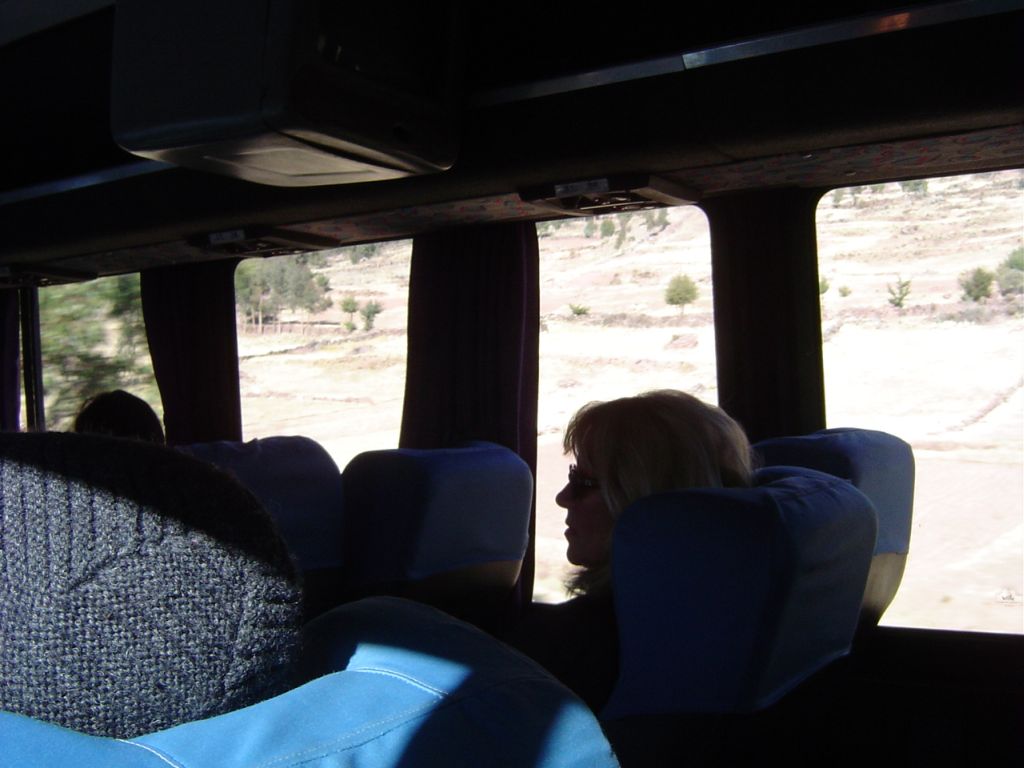
On the bus to Bolivia
We choose not to drive to save the effort of taking the
Jeep across the border twice... in and out
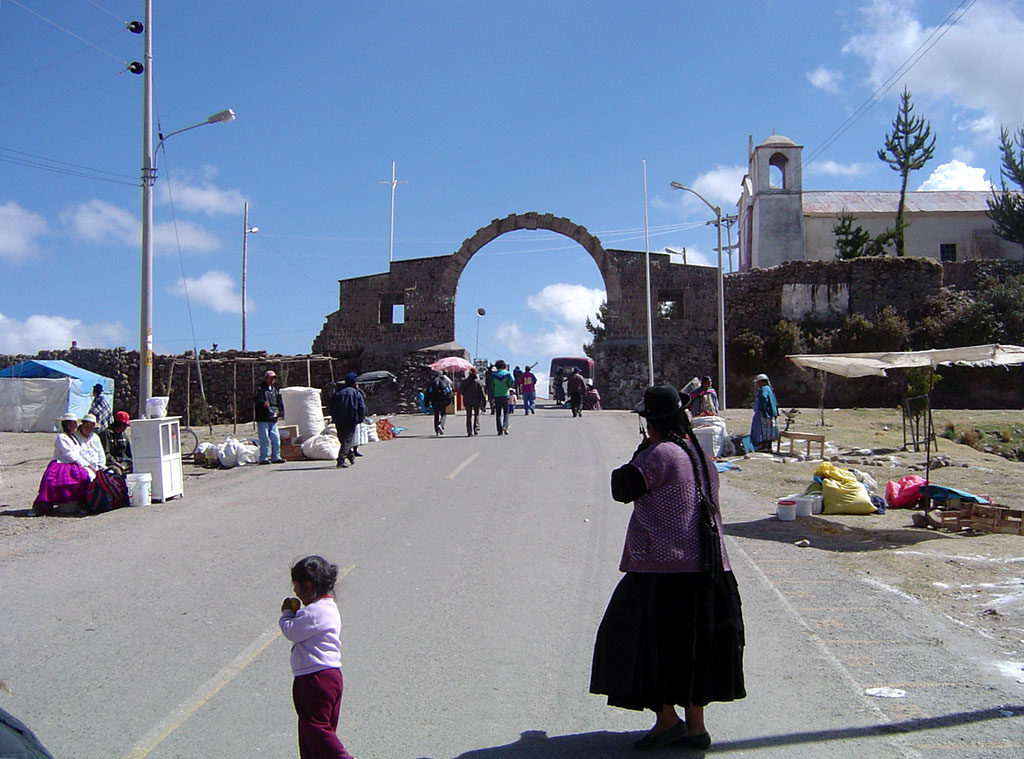
The Peru border with Bolivia
Our bus awaits just beyond the arch
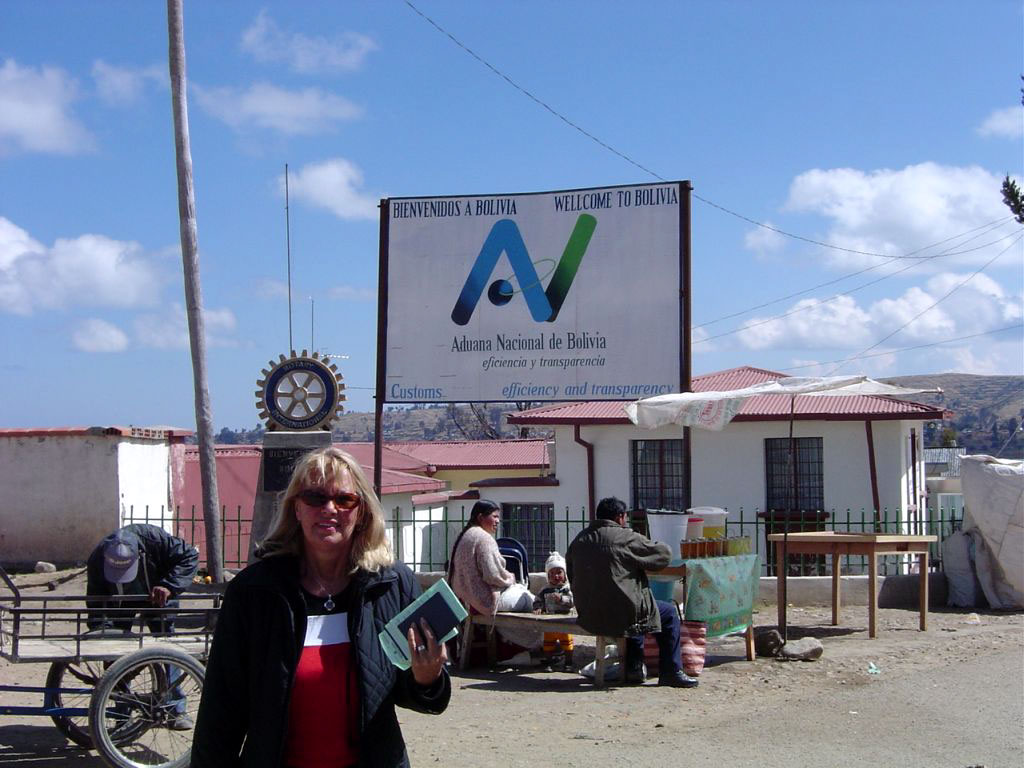
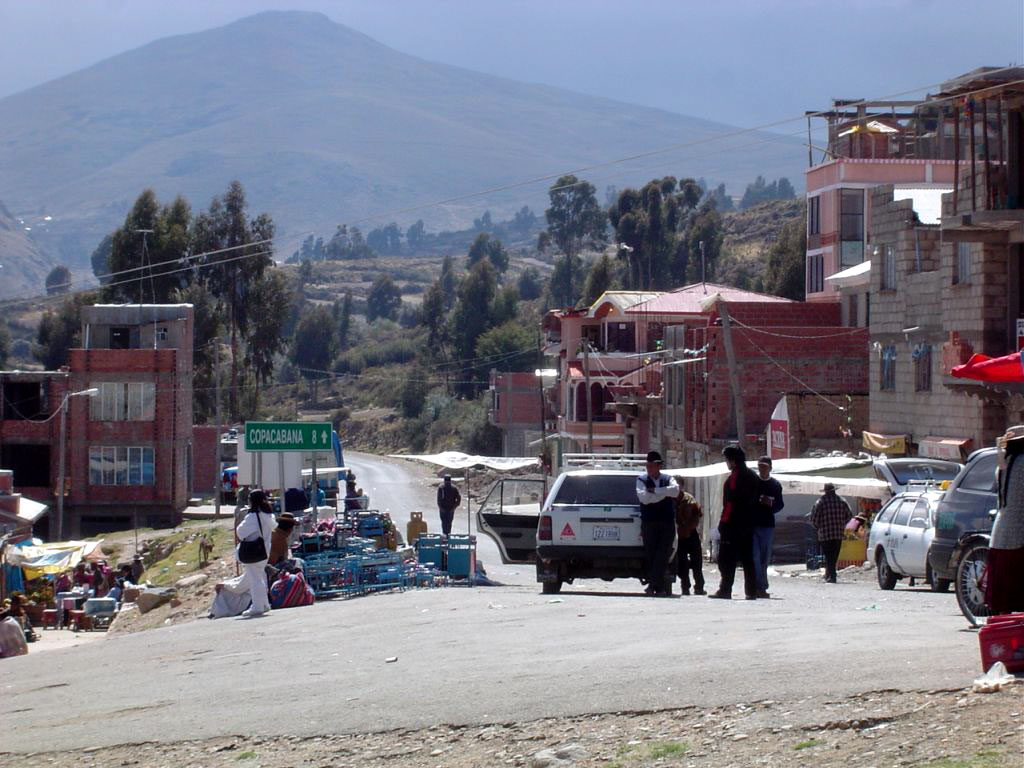
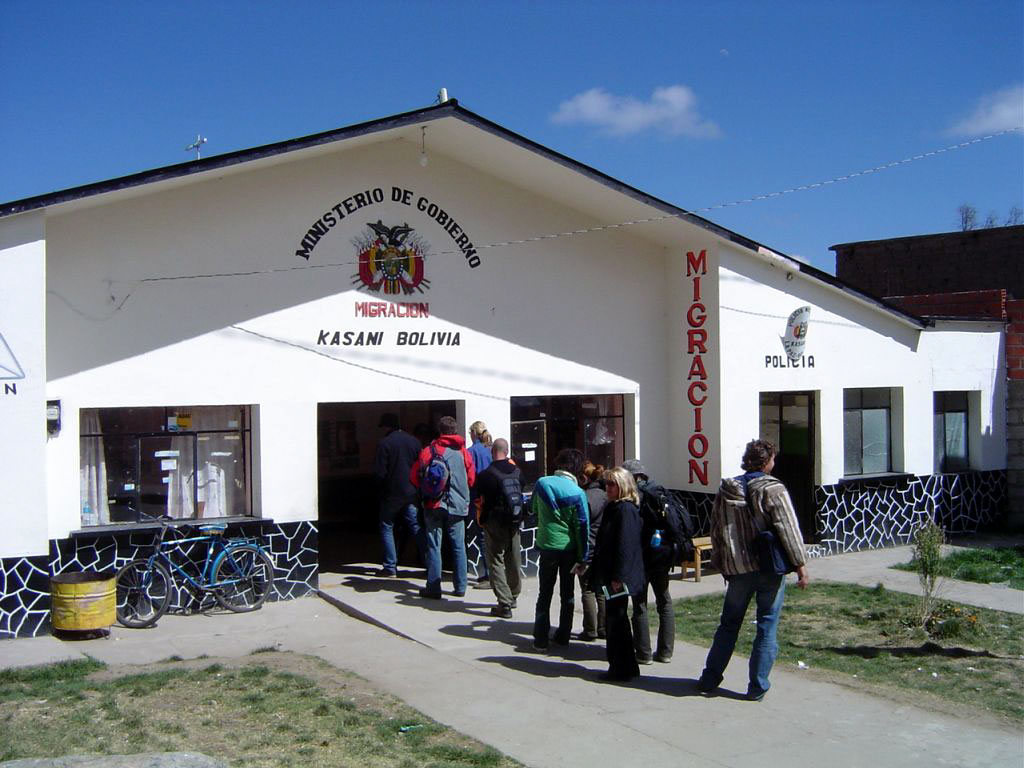
Crossing the border with a passport takes minutes
Crossing with a car can take hours
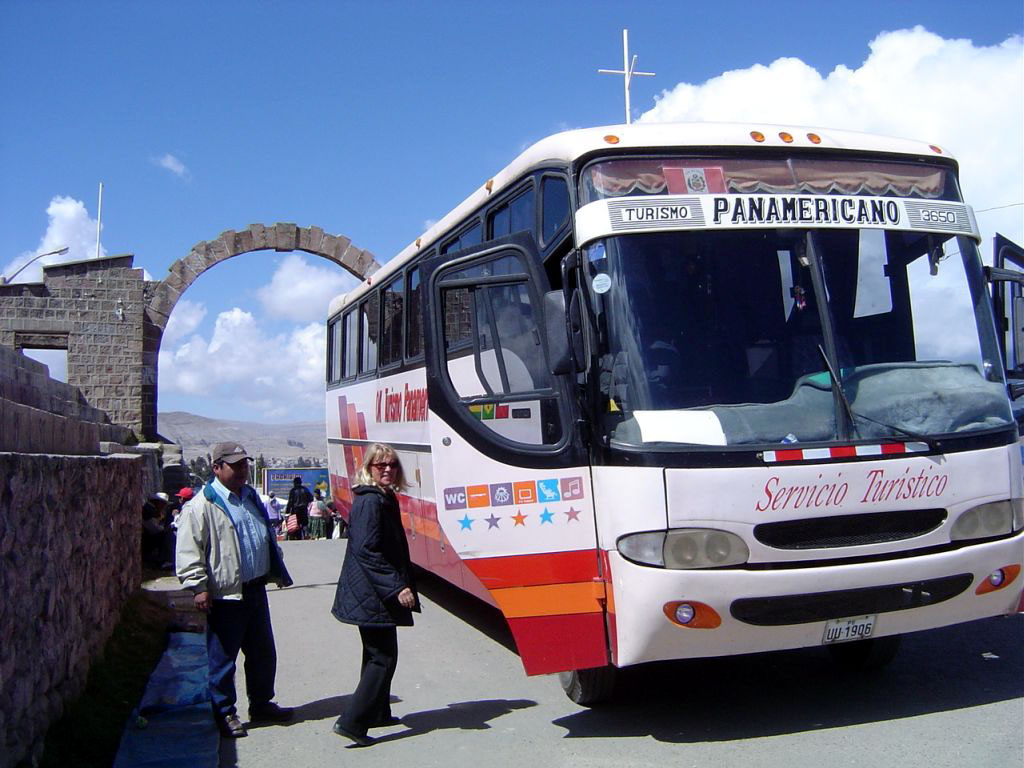
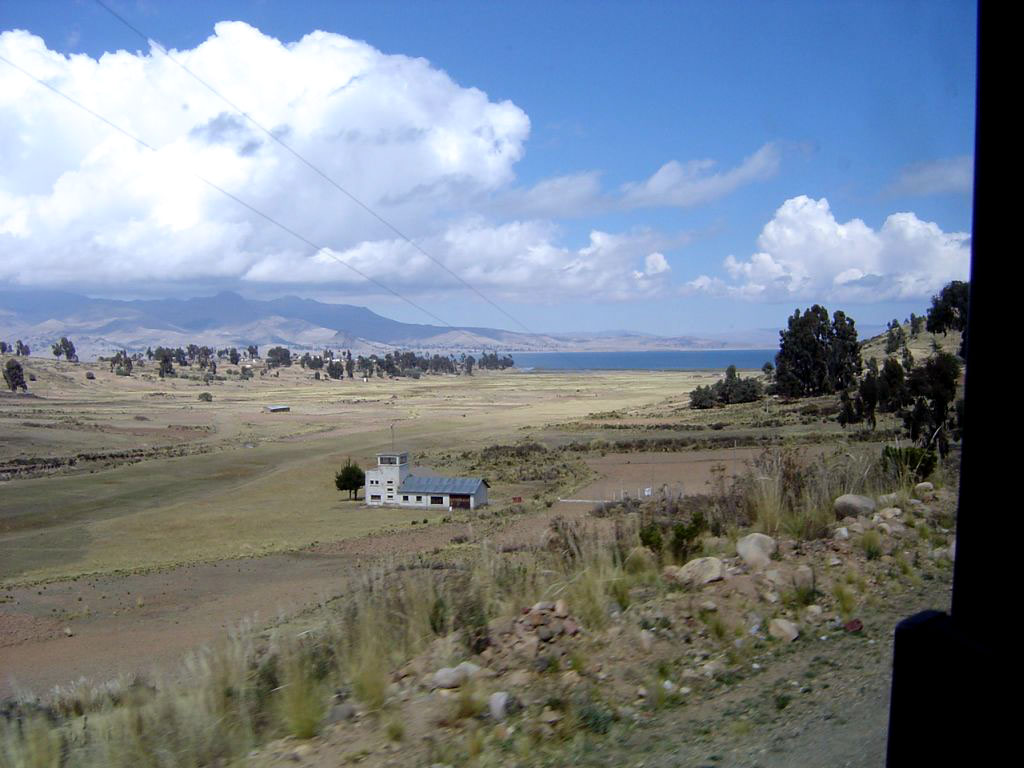
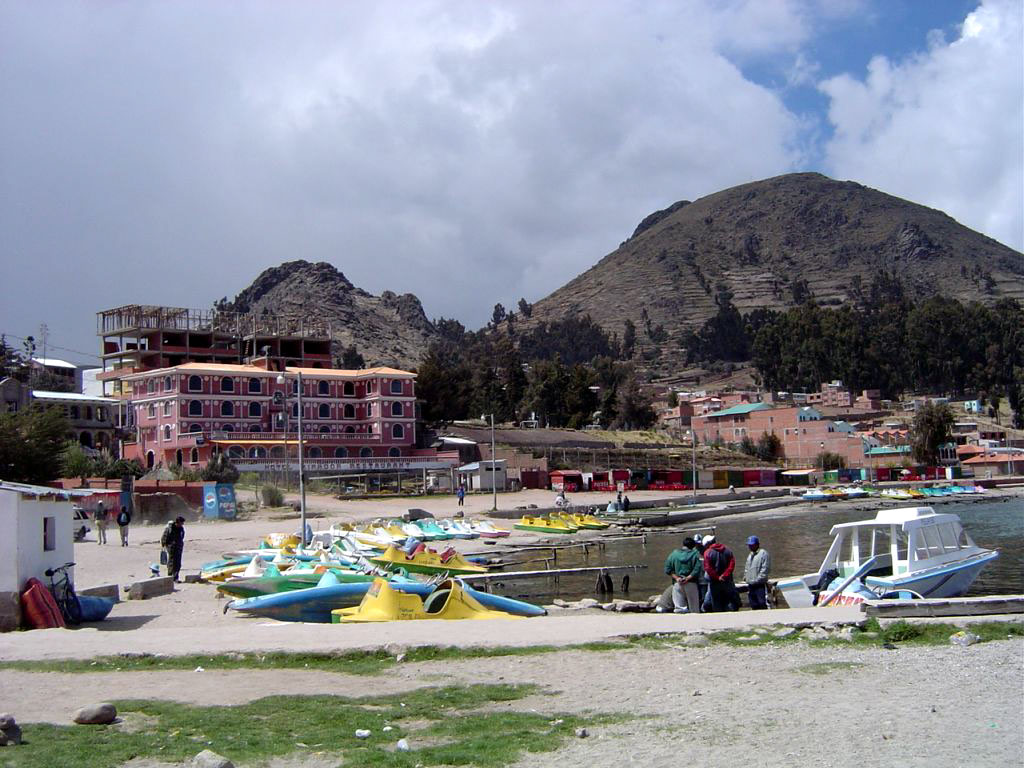
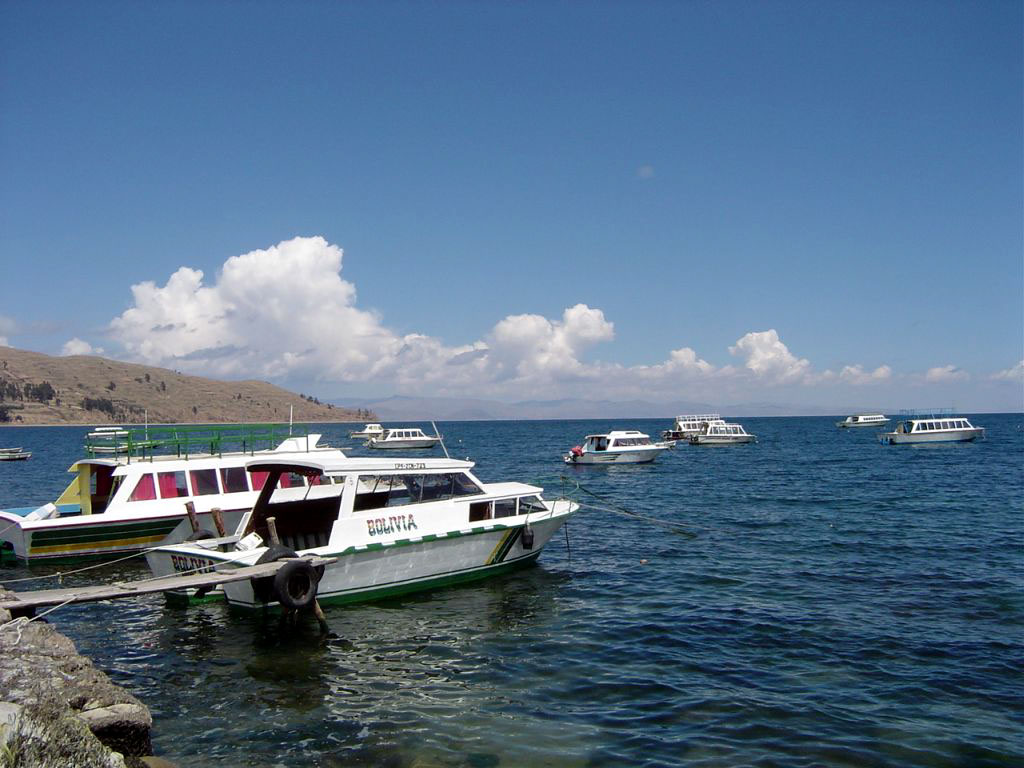
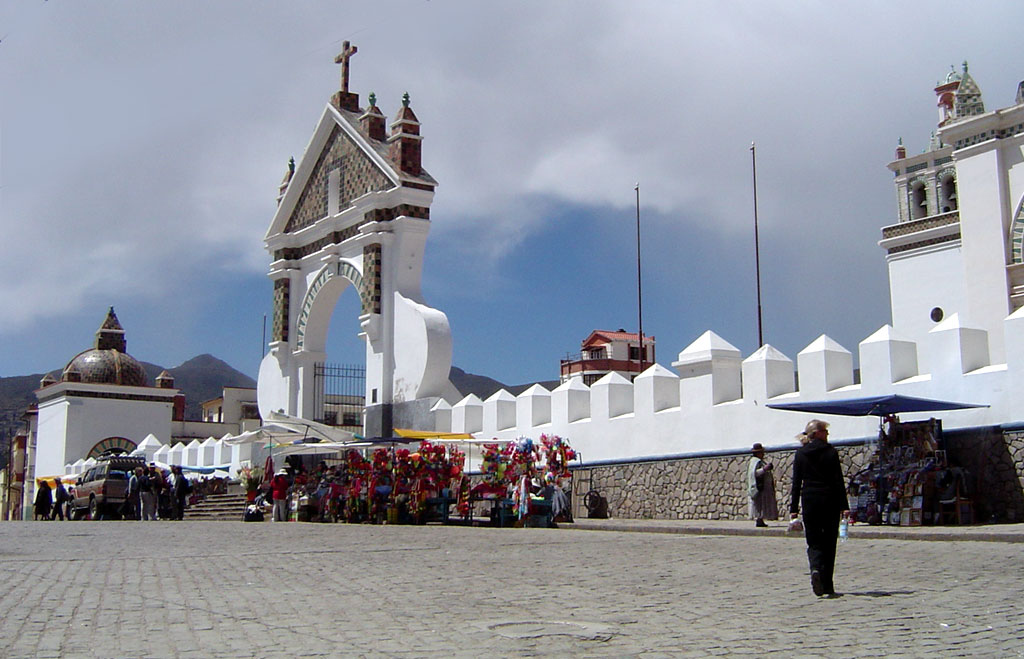
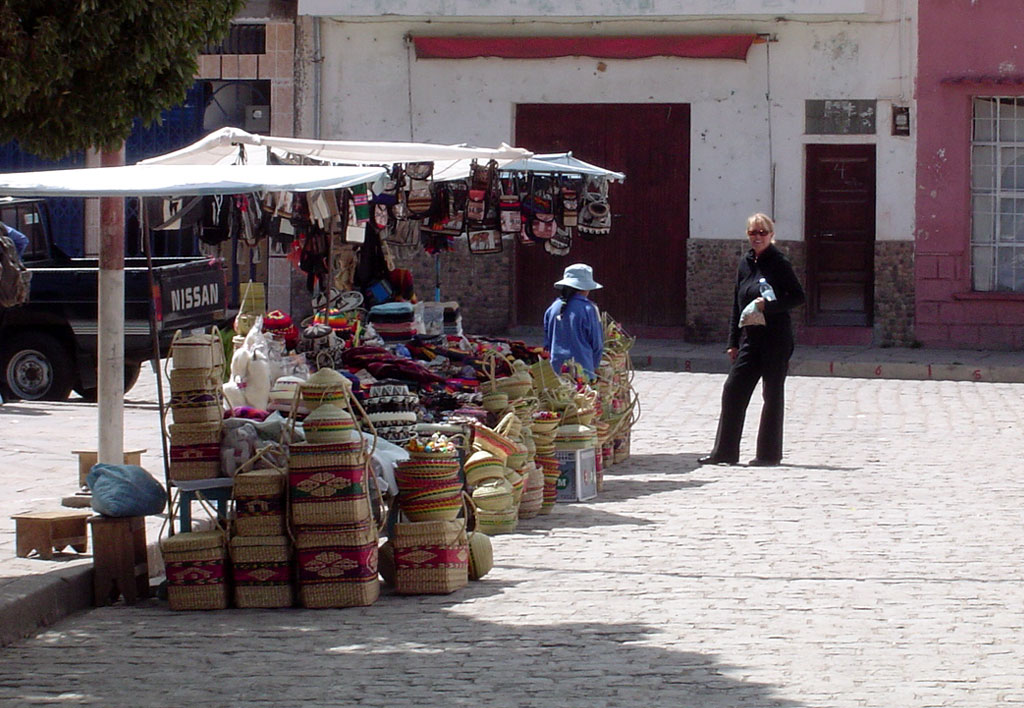
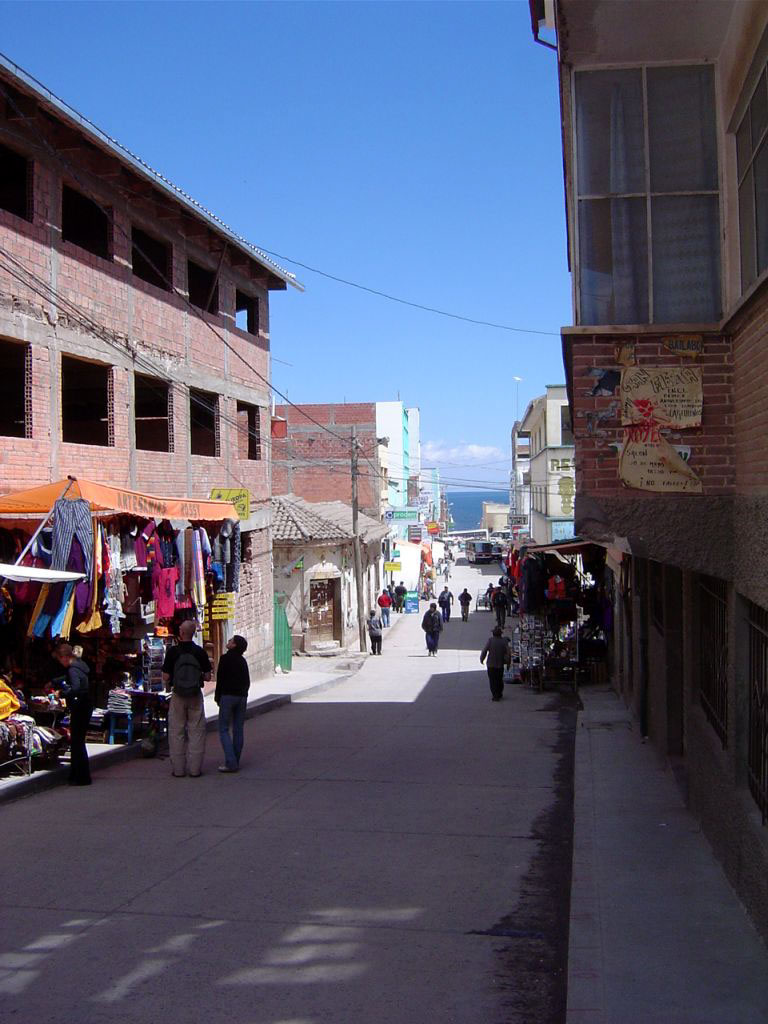

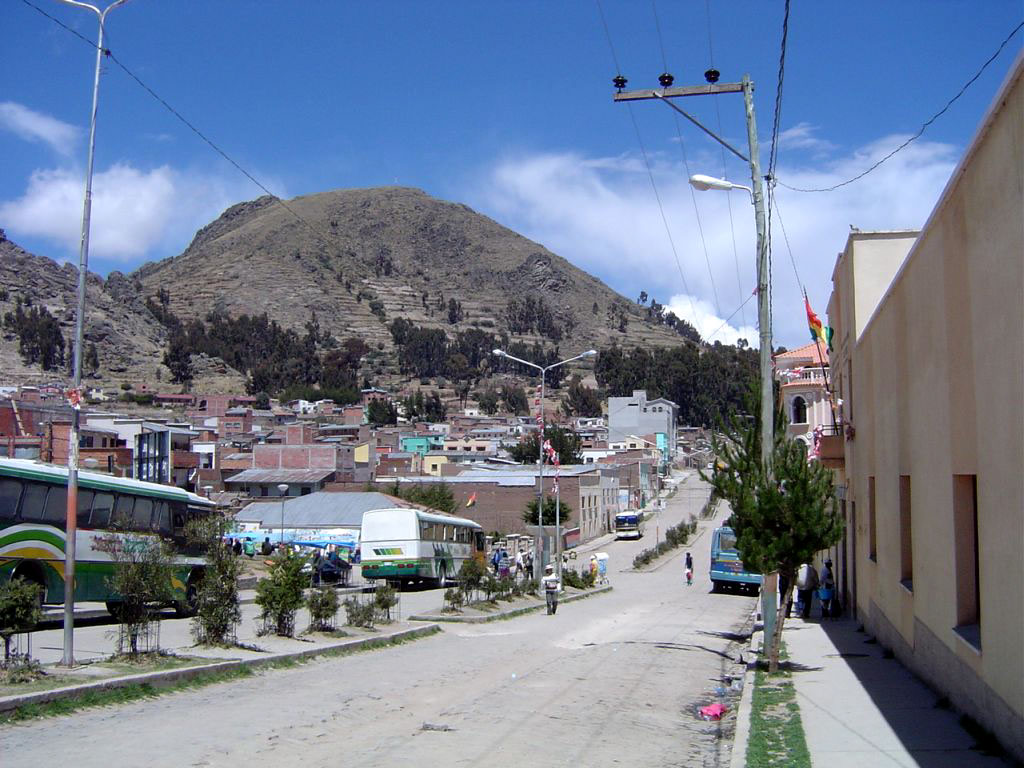
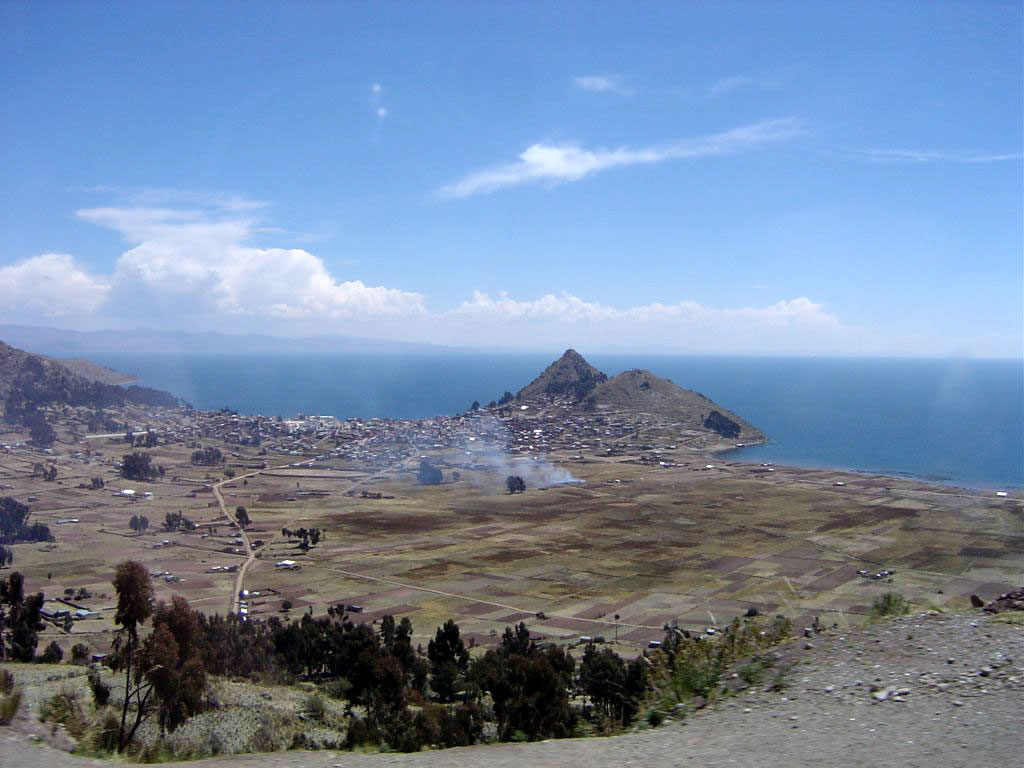
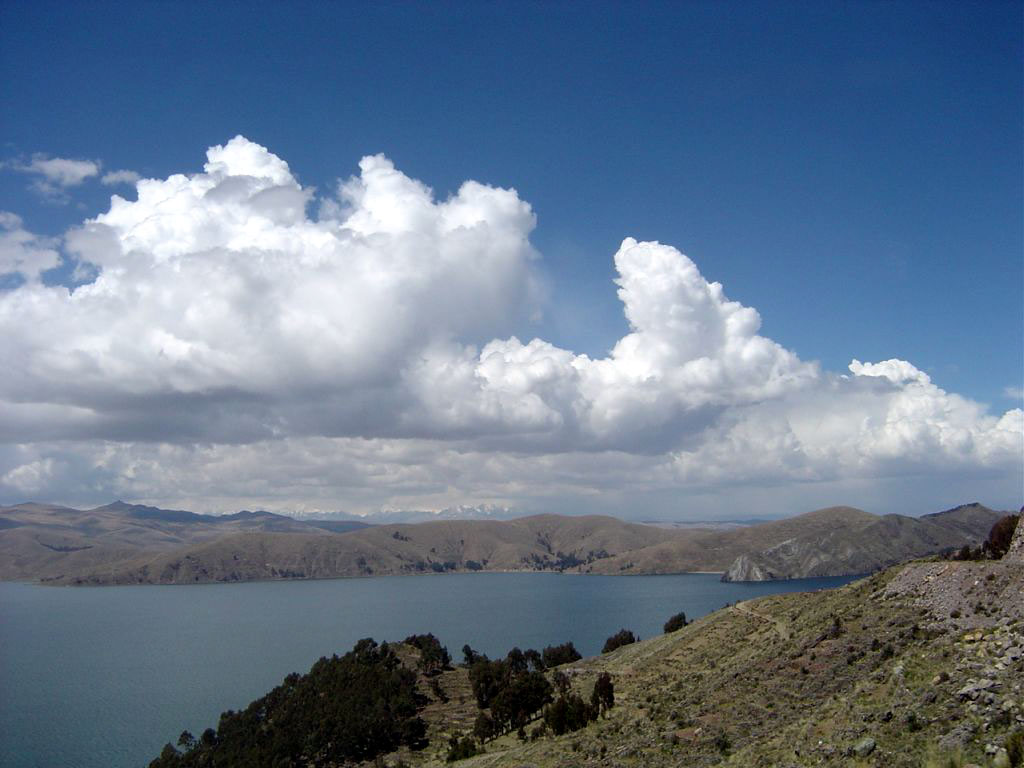
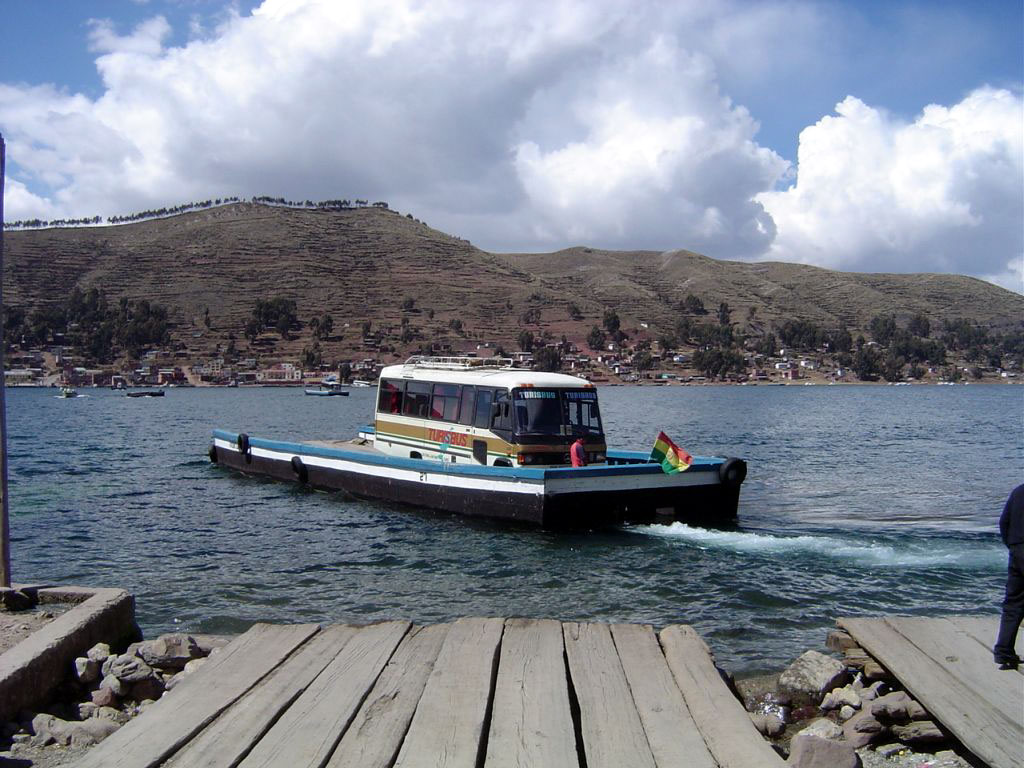
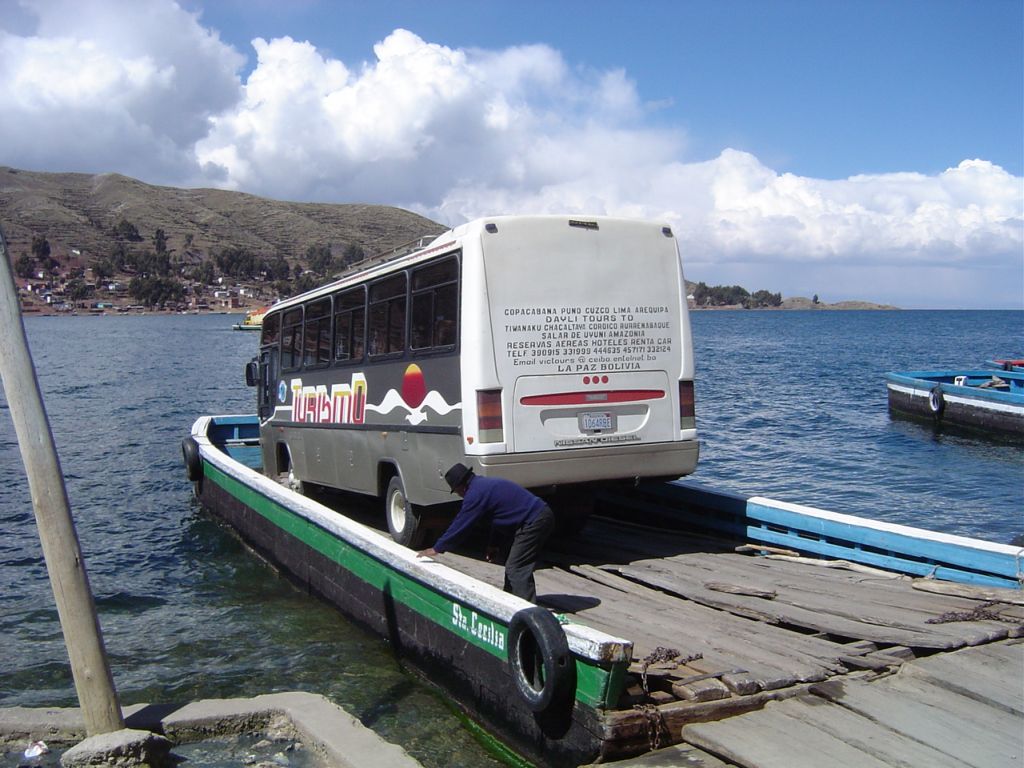
How many more buses will these boards support?
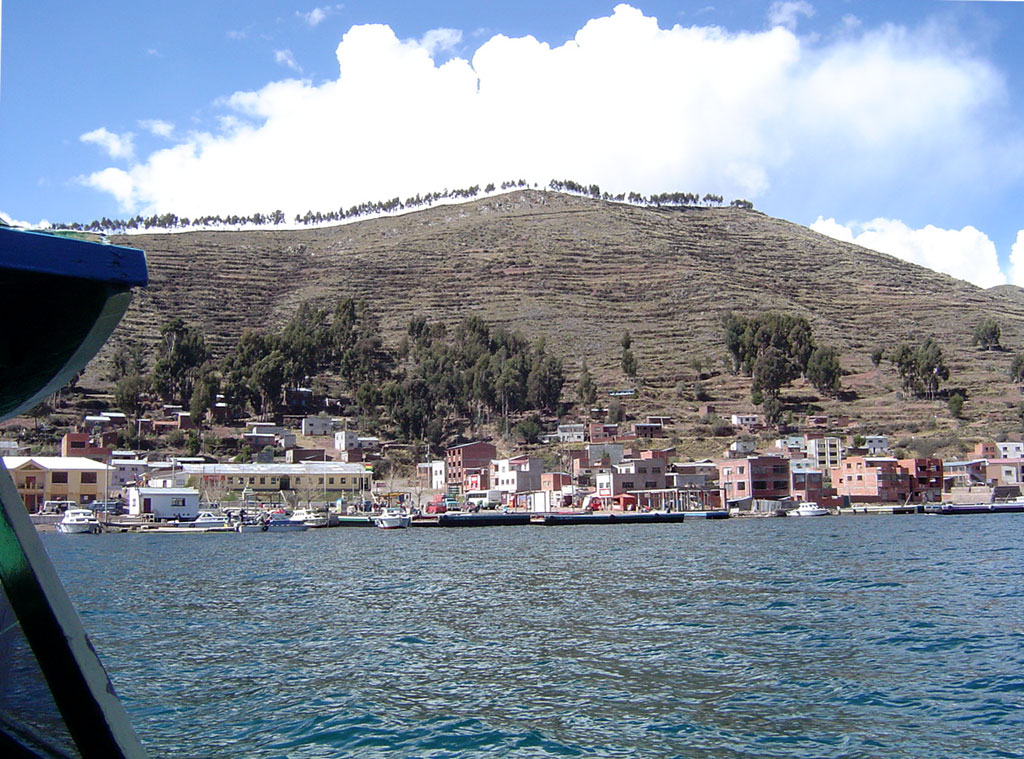
Crossing the Strait of Tiquina
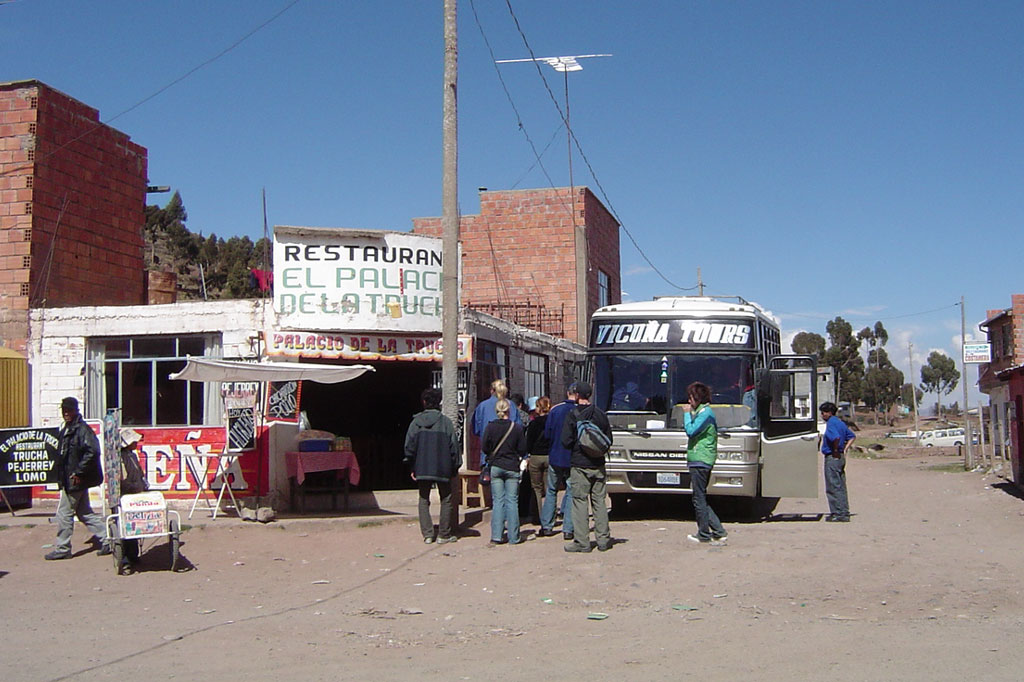
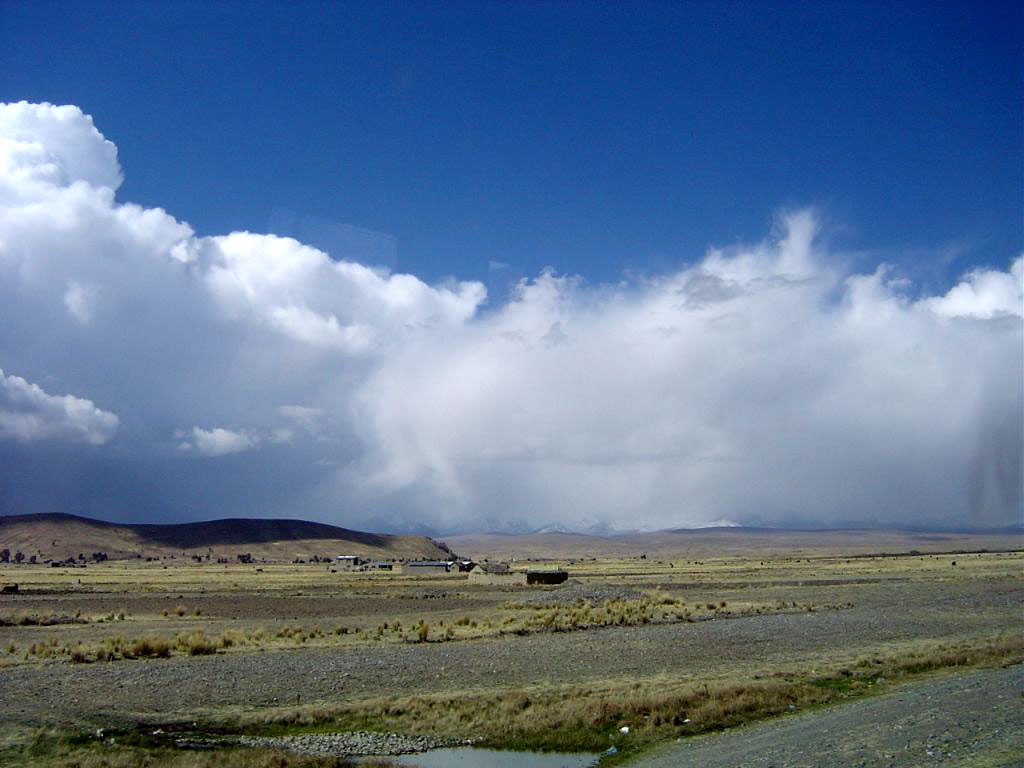
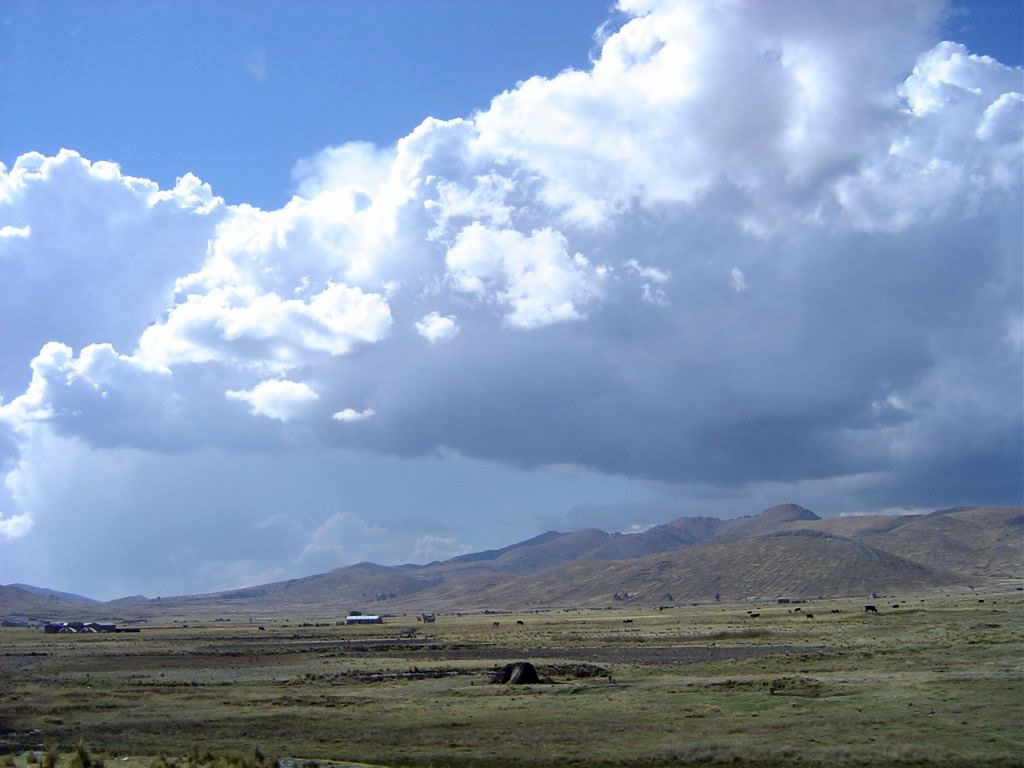
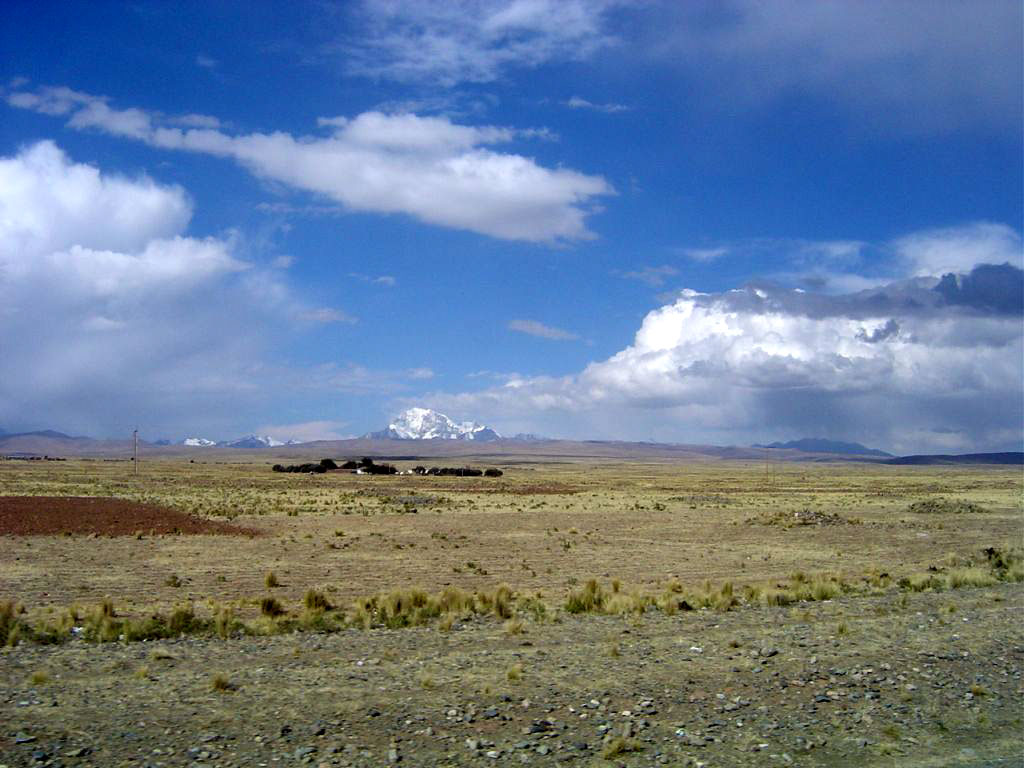
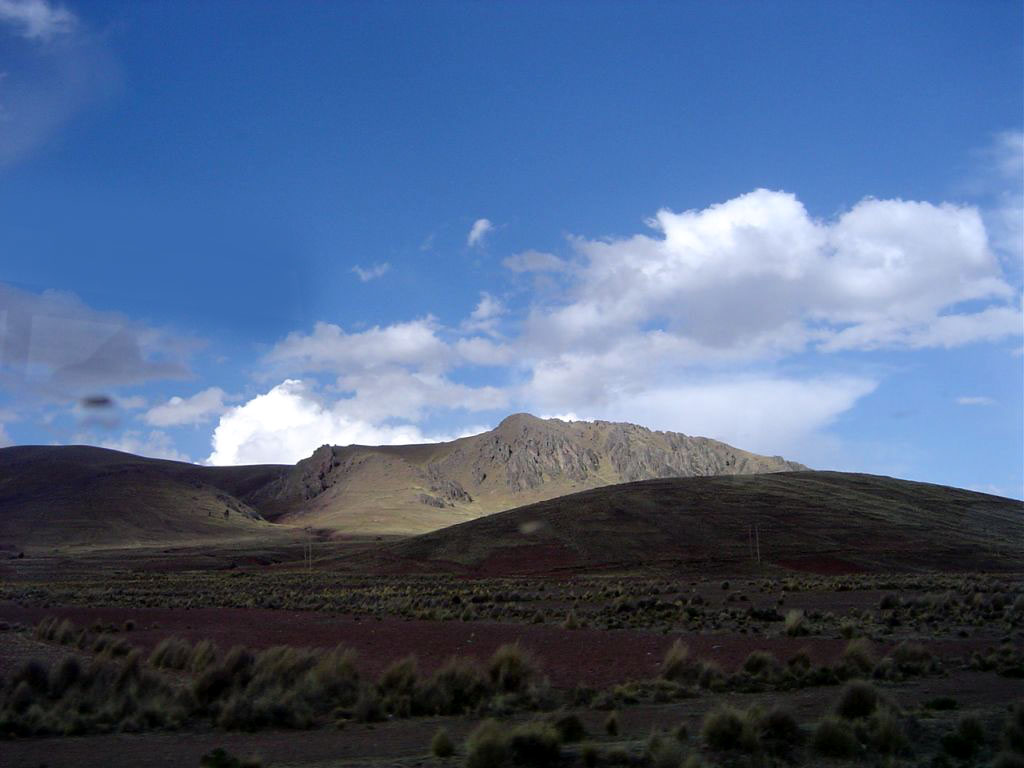
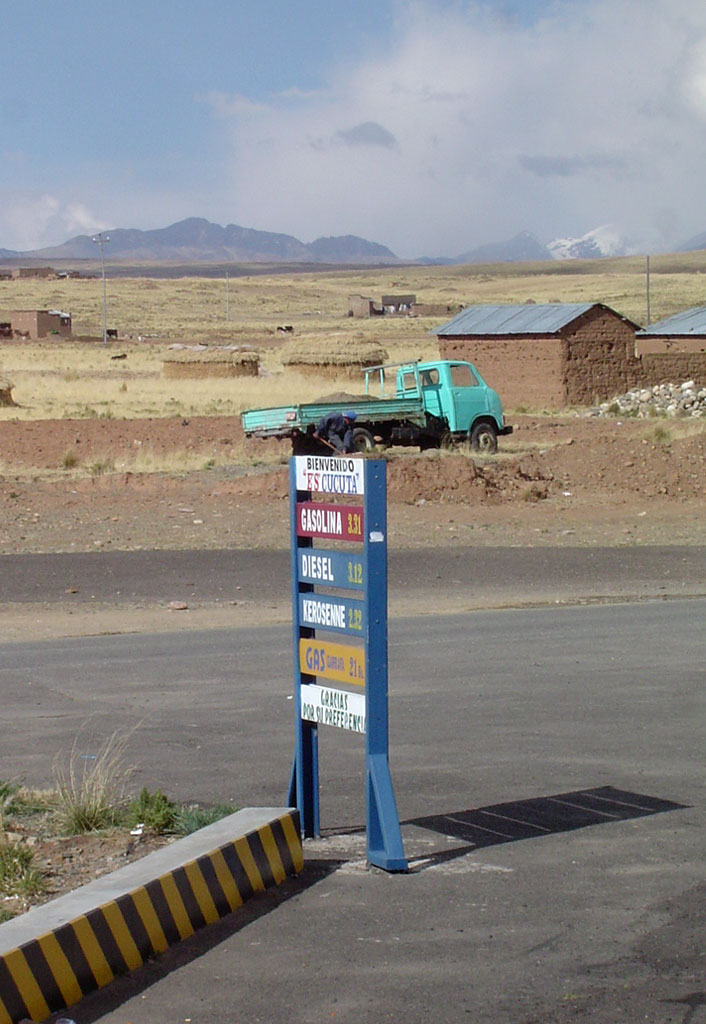
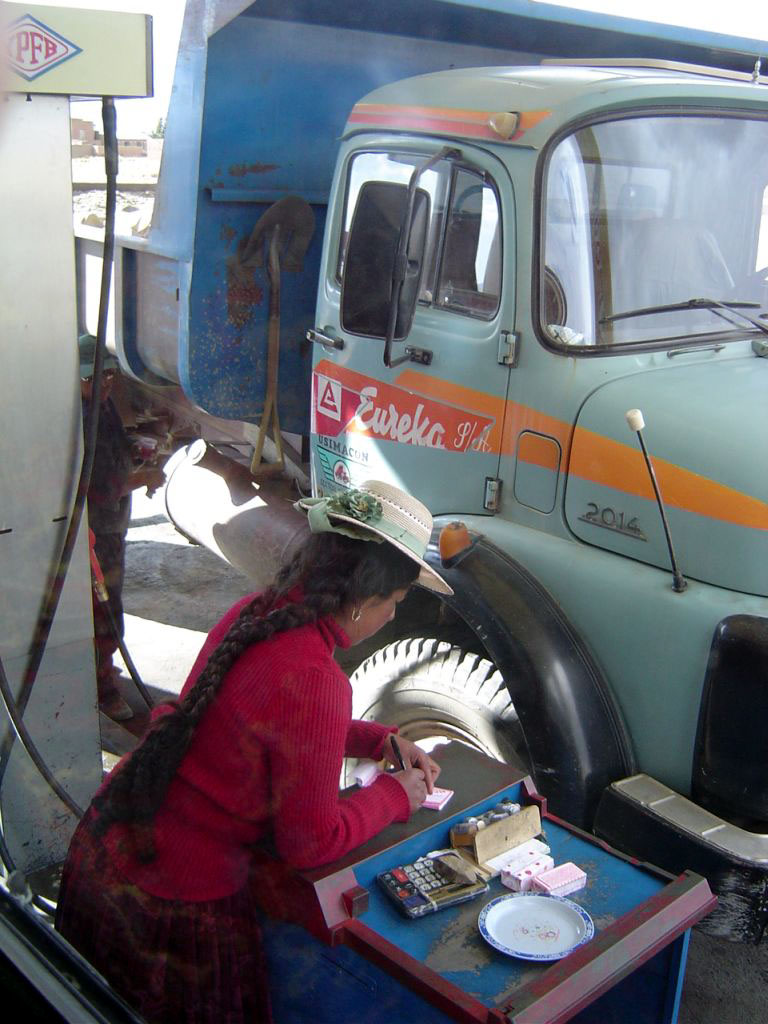
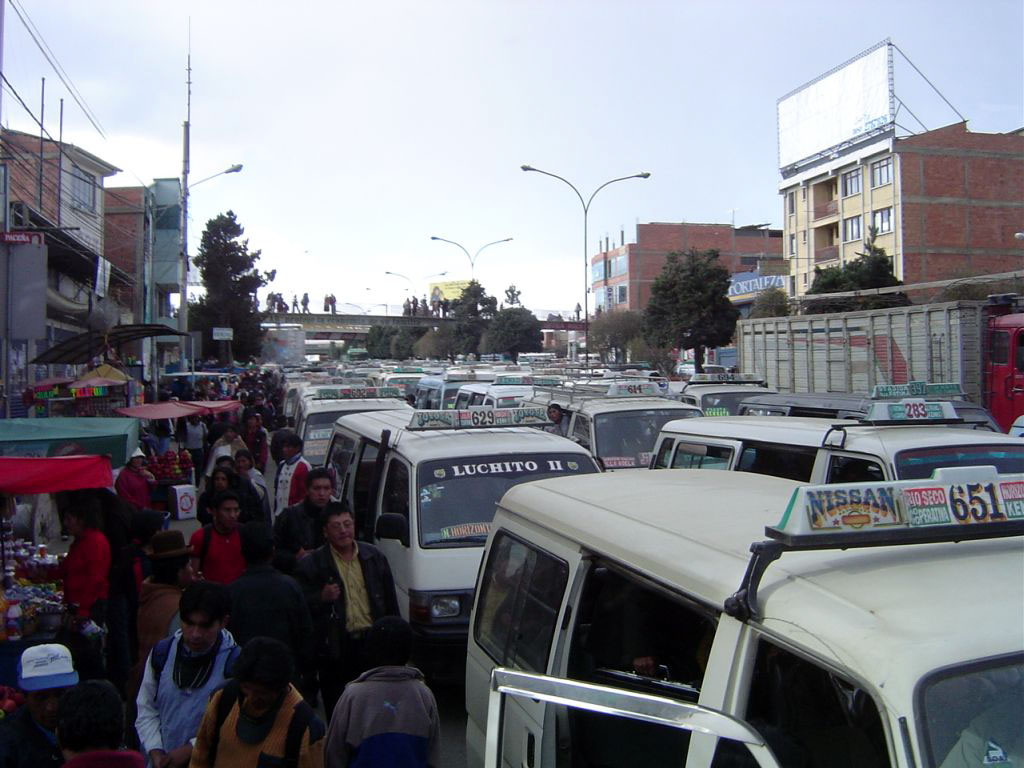
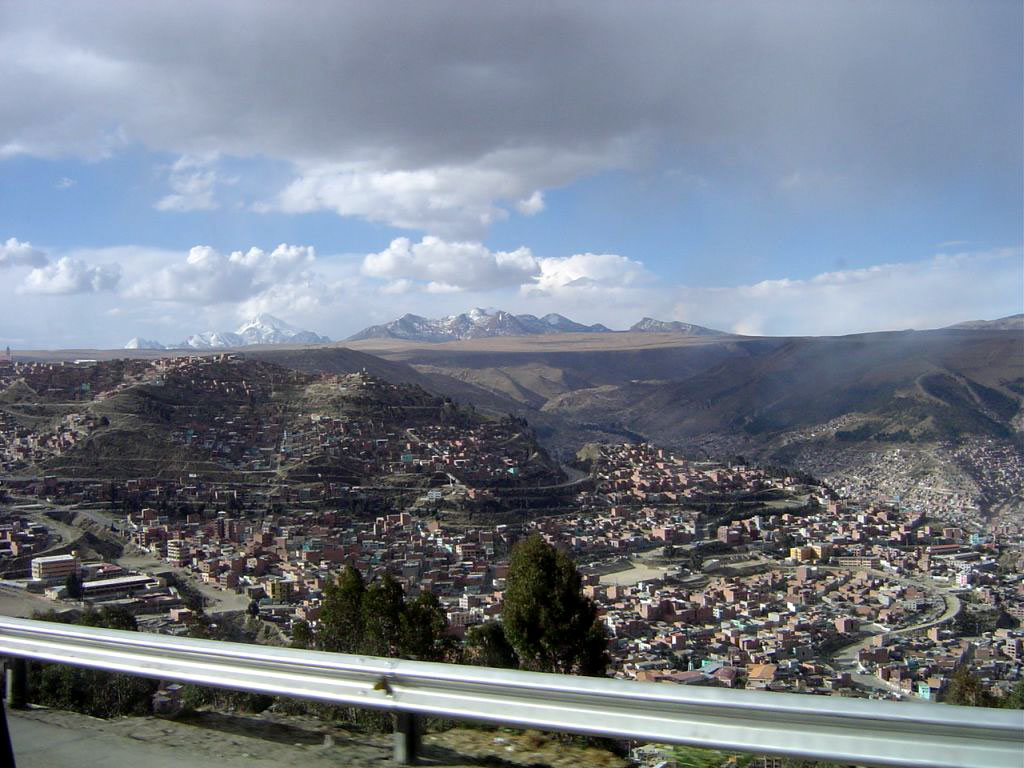
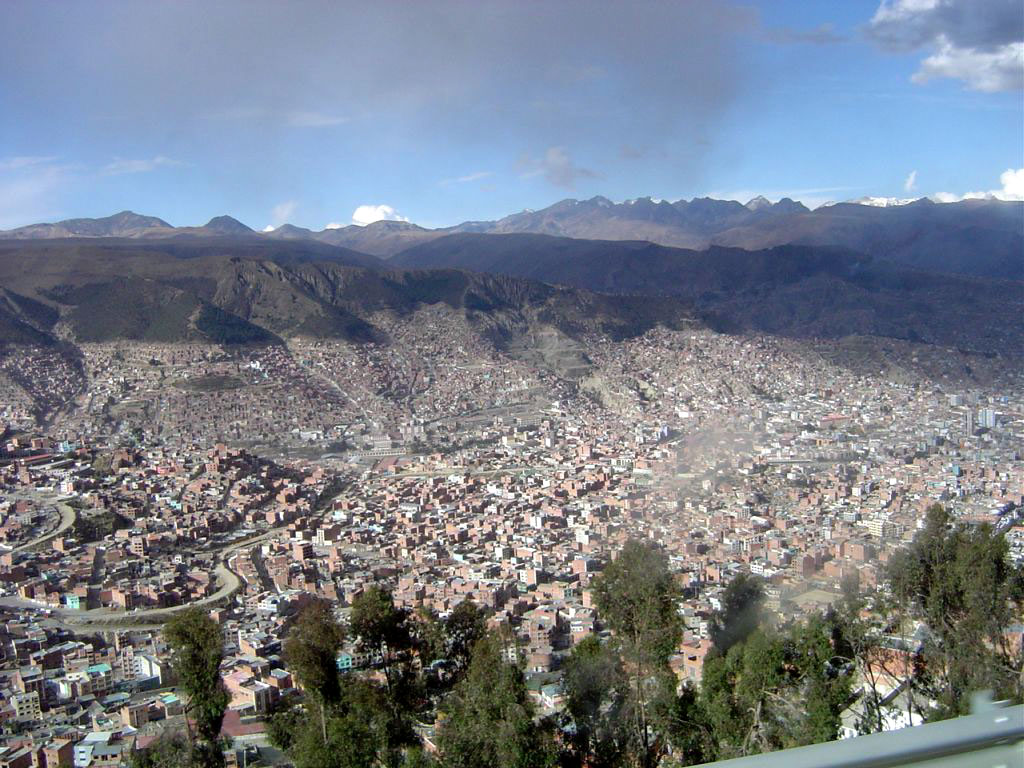
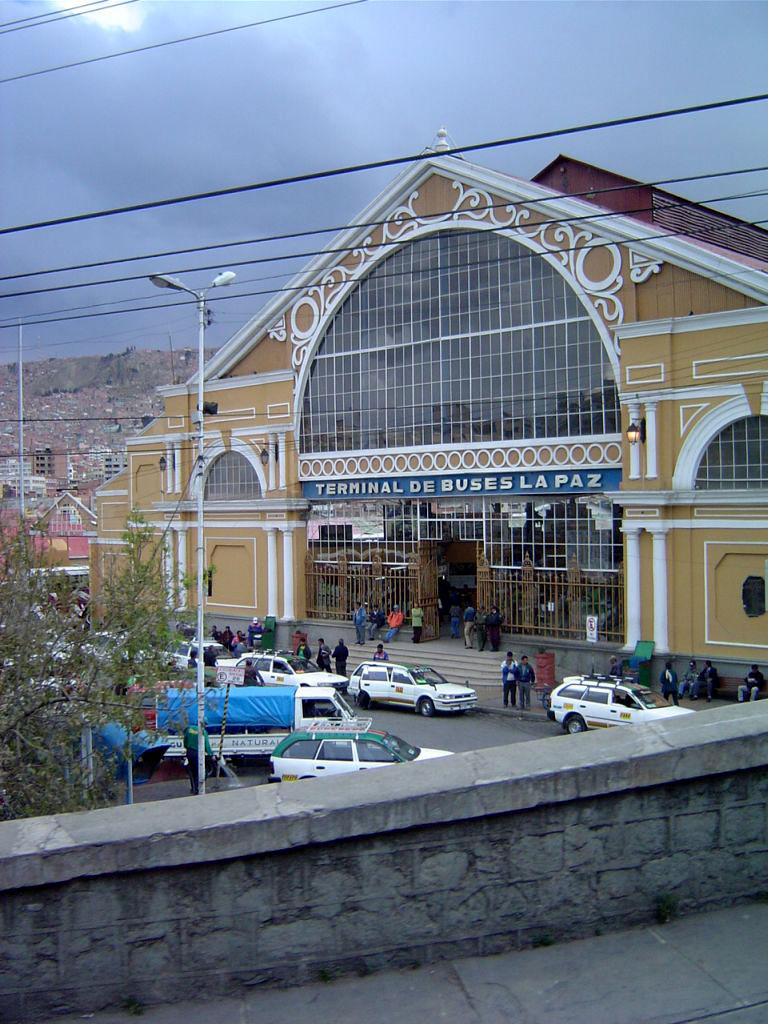
September 7th
LaPaz city tours use a 2-story bus with an open top; it gathers passengers as it passes through the streets of Lapaz. A description of the passing sights is provided through head-phones which are plugged into a non-functional jack marked with the language of your choice. The narrow streets provided a challenge for the driver while low-hanging power and telephone wires, stretched across the street, provided a challenge for the exposed passengers. The second half of the tour took the bus to the southern reaches of the city, a thousand feet lower and considerably warmer, where the rich people live in an area that exactly duplicates Irvine, California.
Don't go to the Bolivian Folklorico show at the Pena Restaurant. The performance which was supposed to begin at 8:00 PM sharp, didn't get started until 8:45. The first group to perform played songs from countries represented by audience members. "Oh, Susana" is clearly an American favorite. The dancers which followed traipsed in with their CD player and speakers which were set on a chair at the back of the stage. We were treated to a view of their set-up during the warm-up act. Half-way through the dance number, the CD player's plug was kicked out of the wall socket, bringing the music, but not the dancers, to a halt. They continued unabated. Meanwhile, the waiters struggled to get the music going again. Much to the credit of the dancers, they figured out where they were in their sequence when the music resumed and got off the stage as the music ended. They left for their next performance, leaving the stage empty, except for the now undisturbed CD player which everyone enjoyed more than the performers. The last group we could bring ourselves to endure showed up a half hour later and played off-key. Asking for the check, I was given a very small piece of paper with a number written on it. I sent the waiter back for a complete tally, which we paid before walking out.
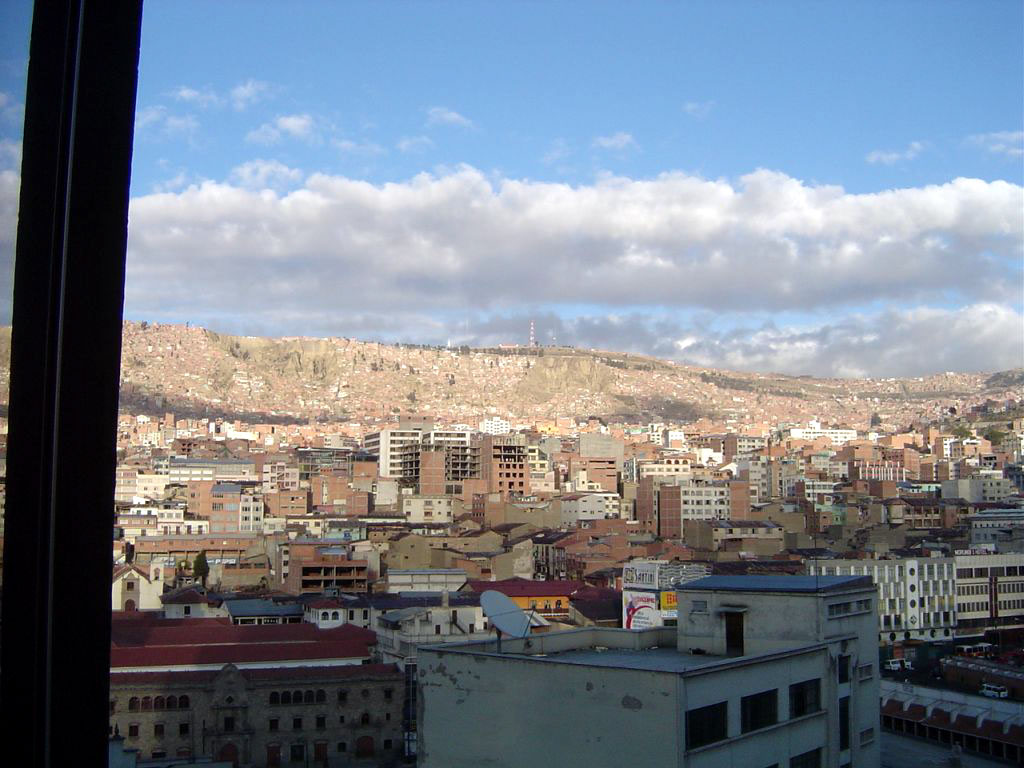
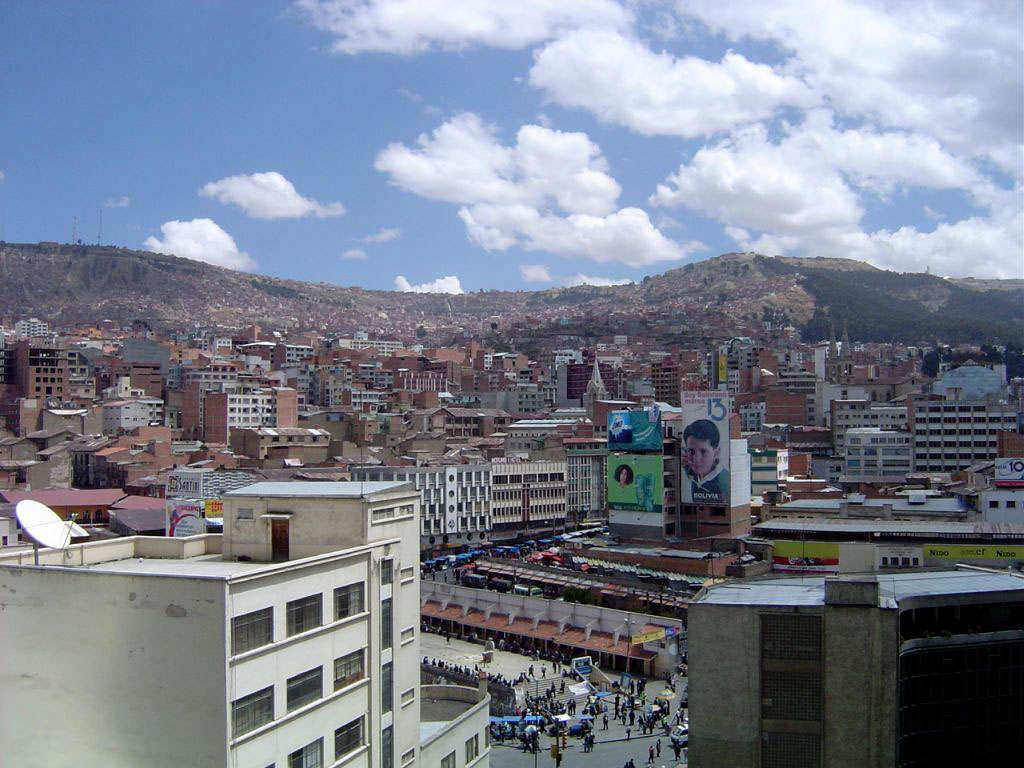
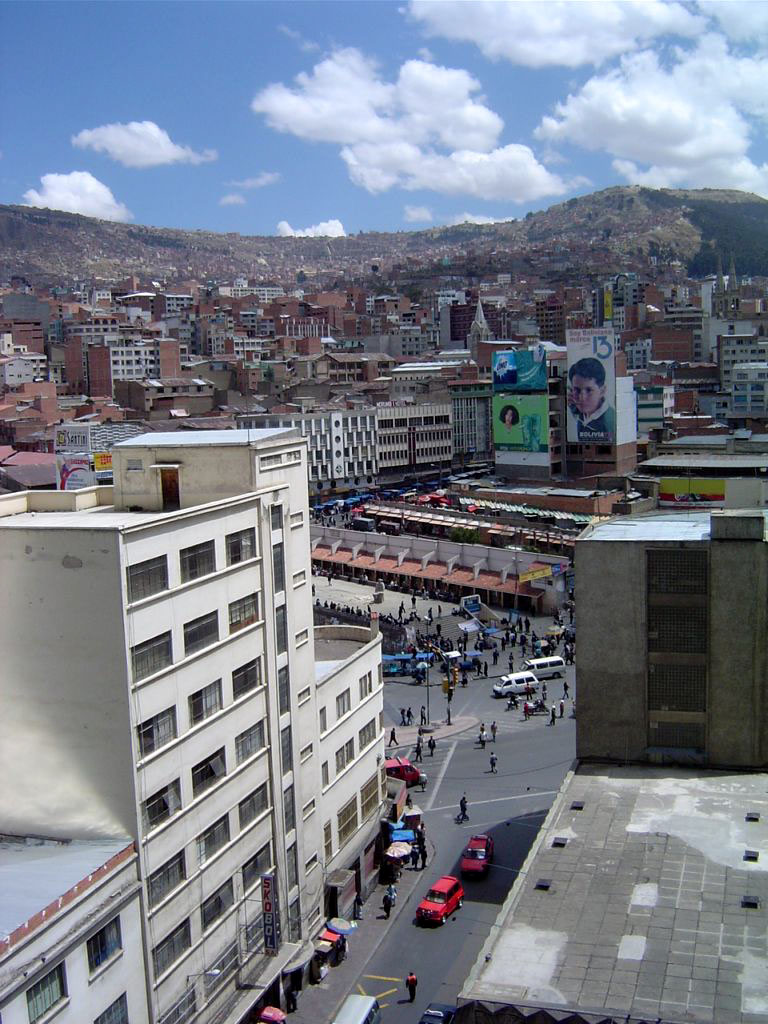
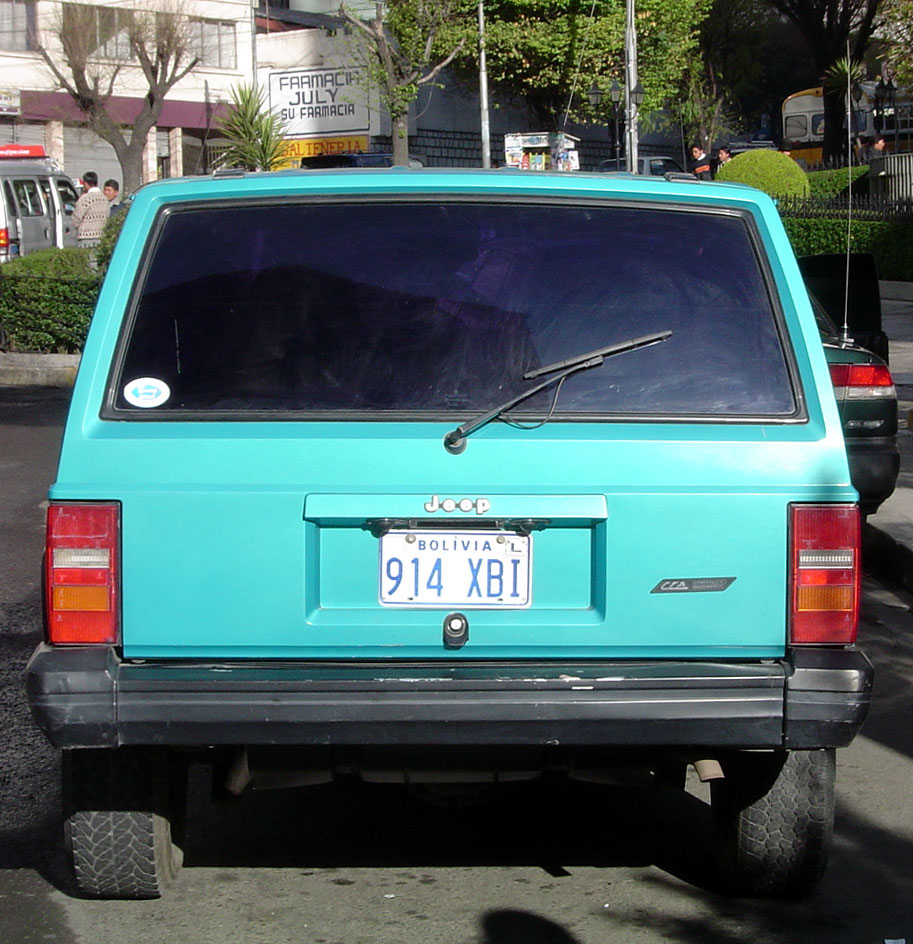
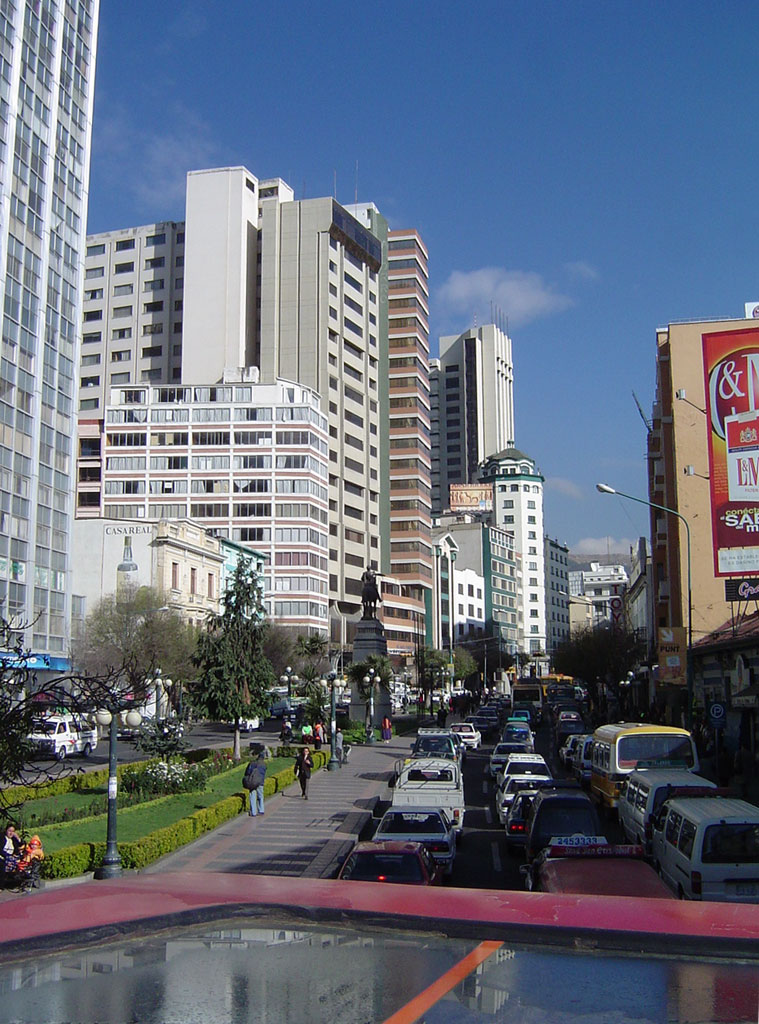
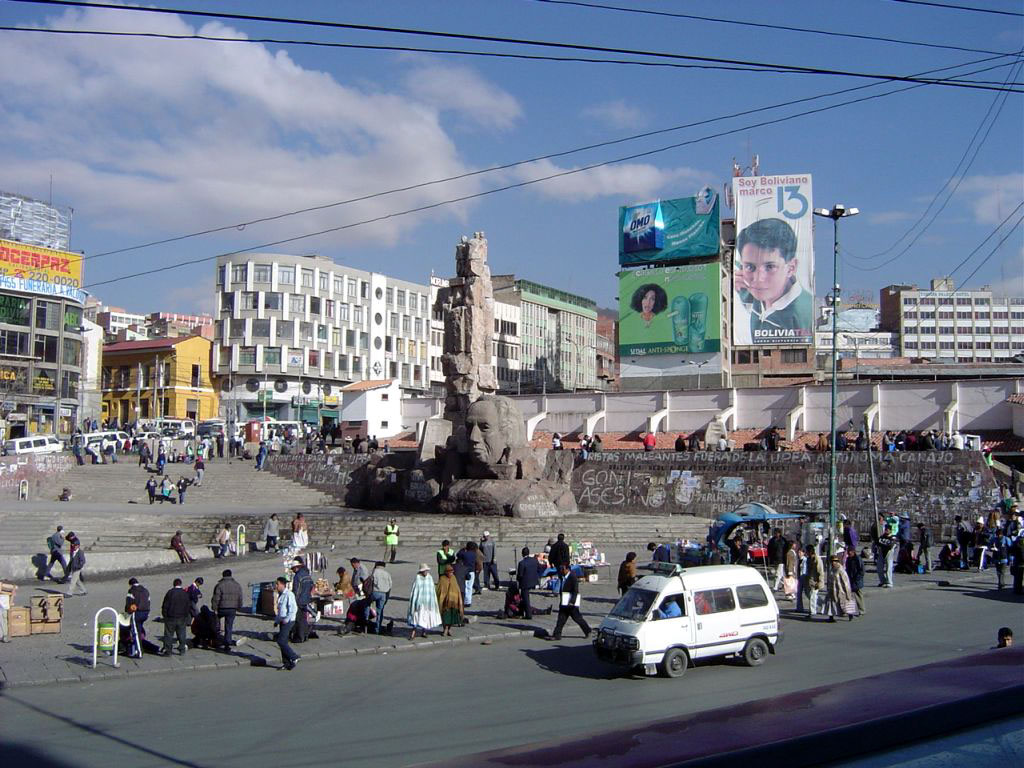
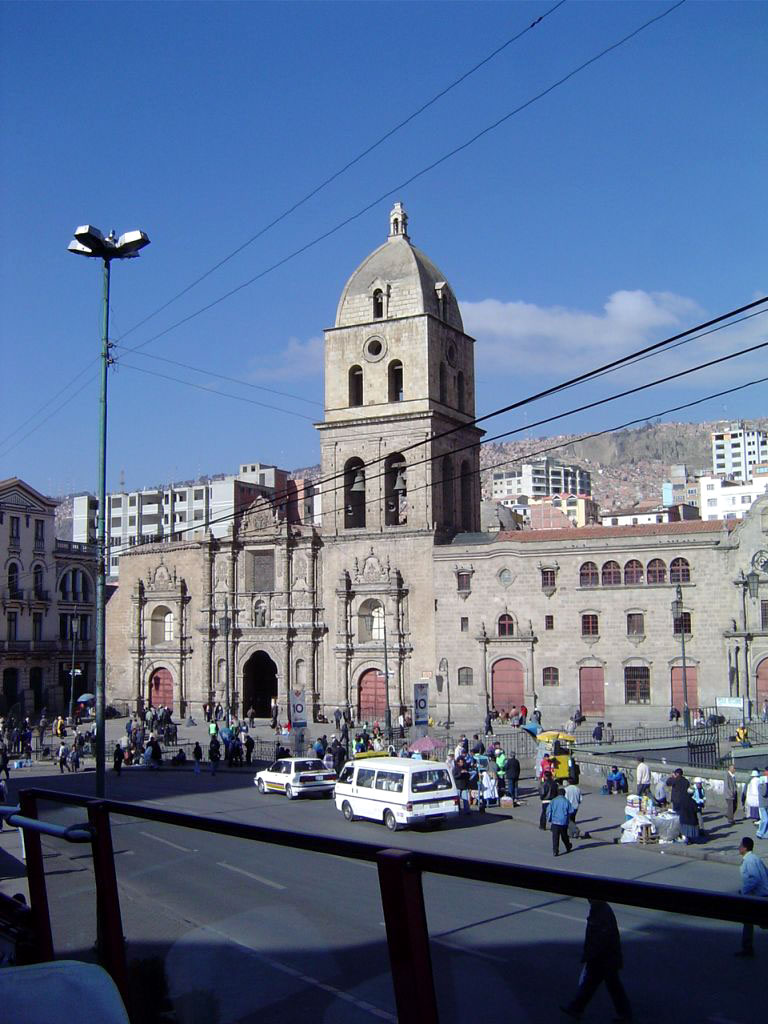
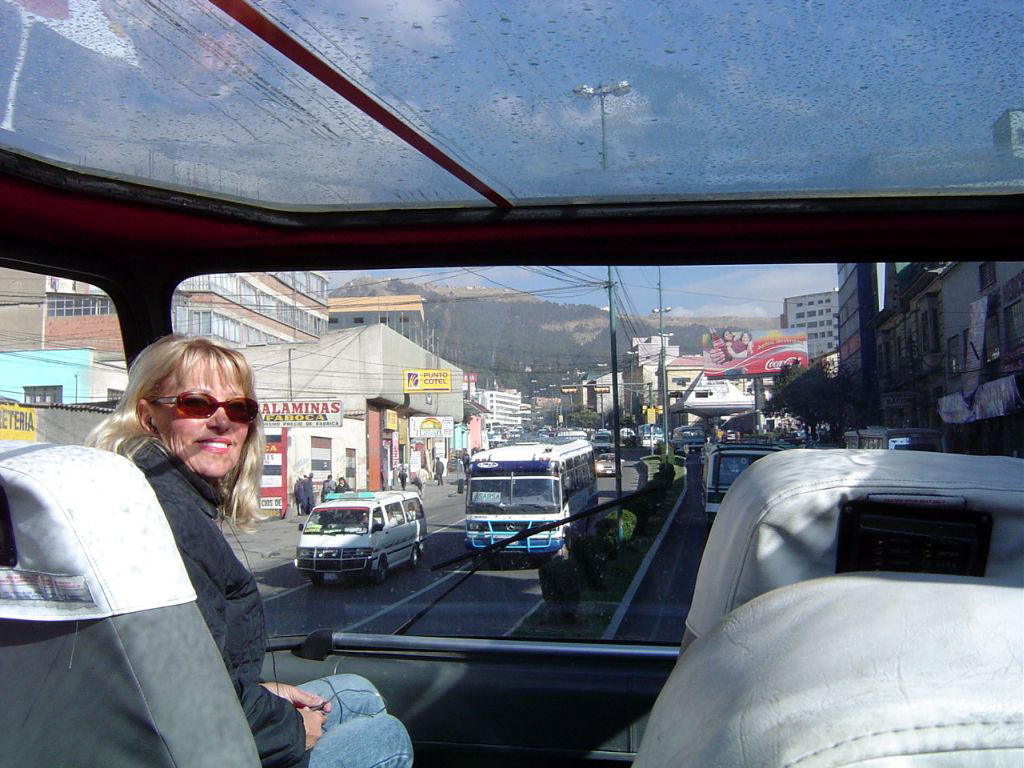
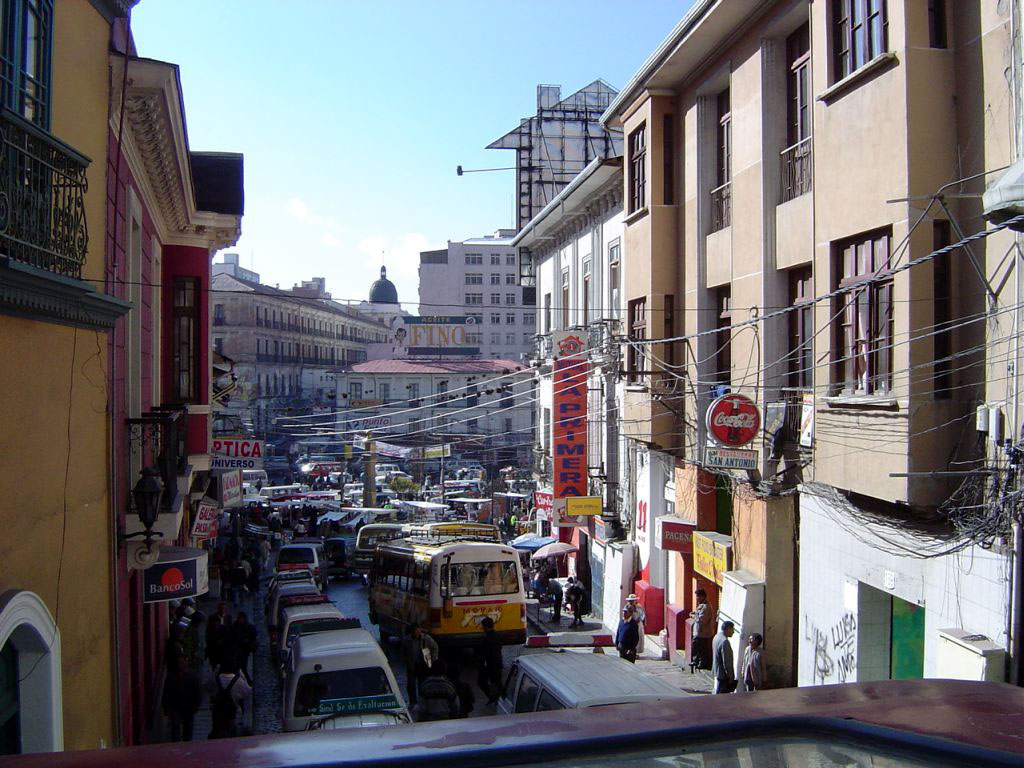
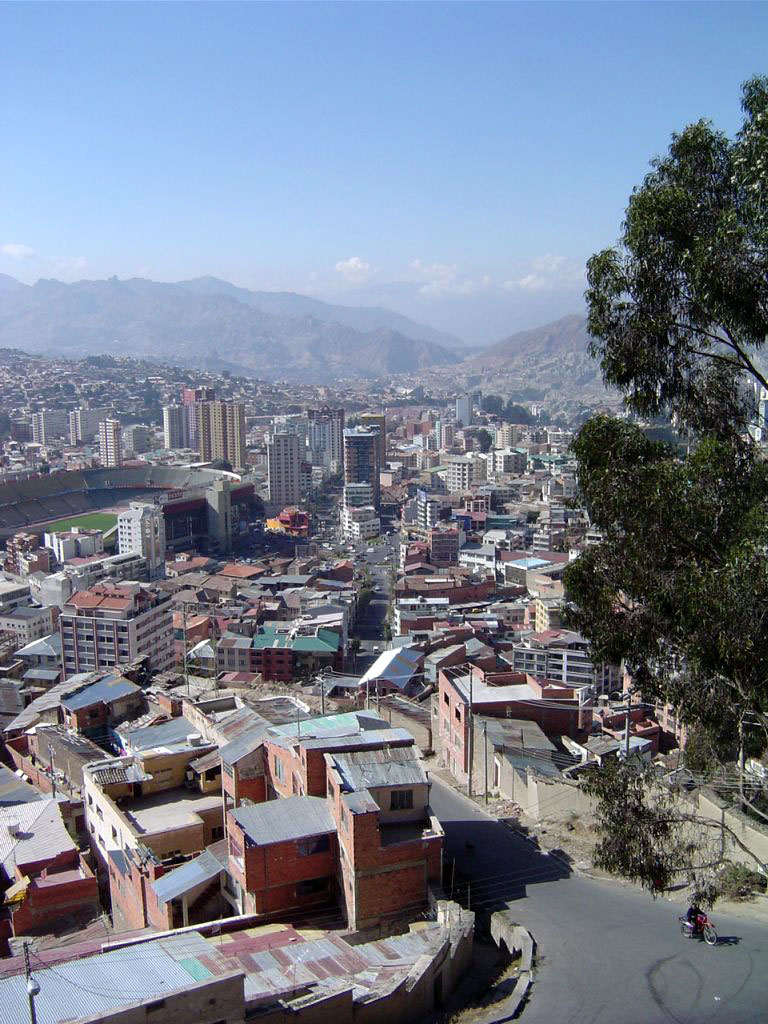
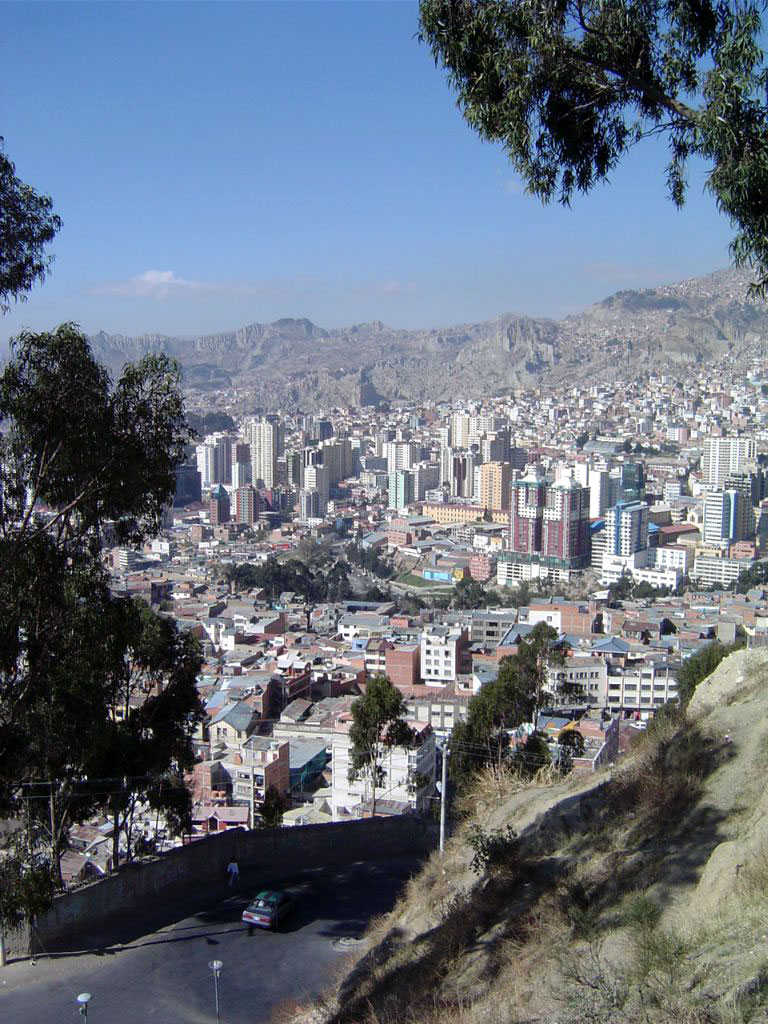
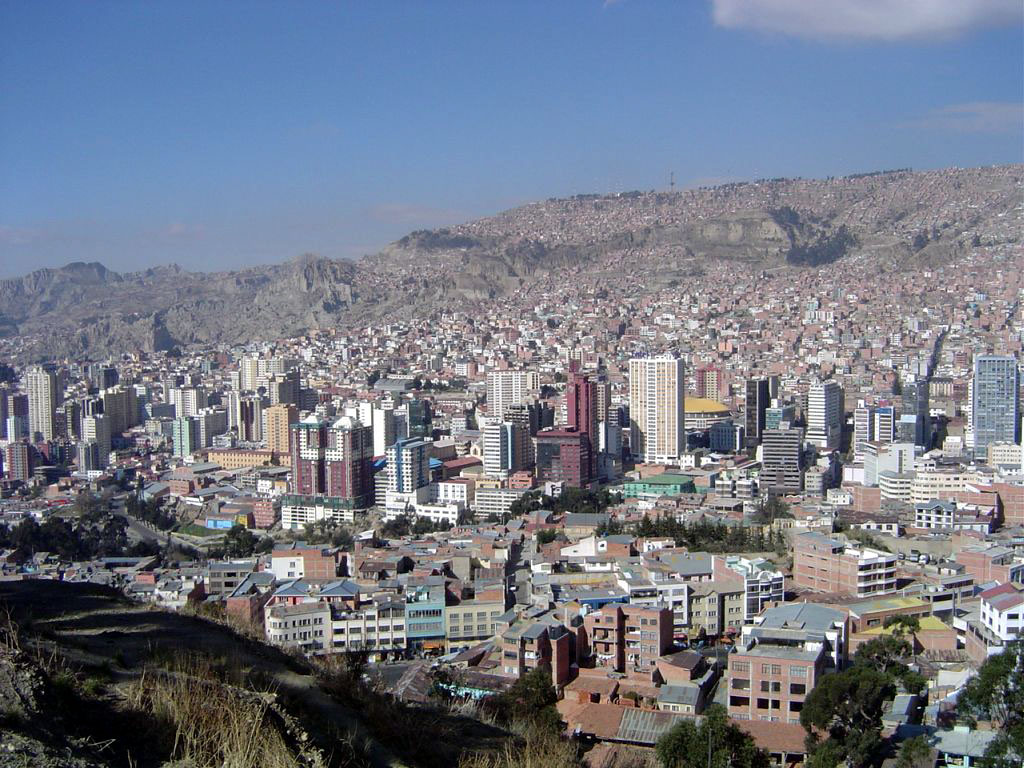
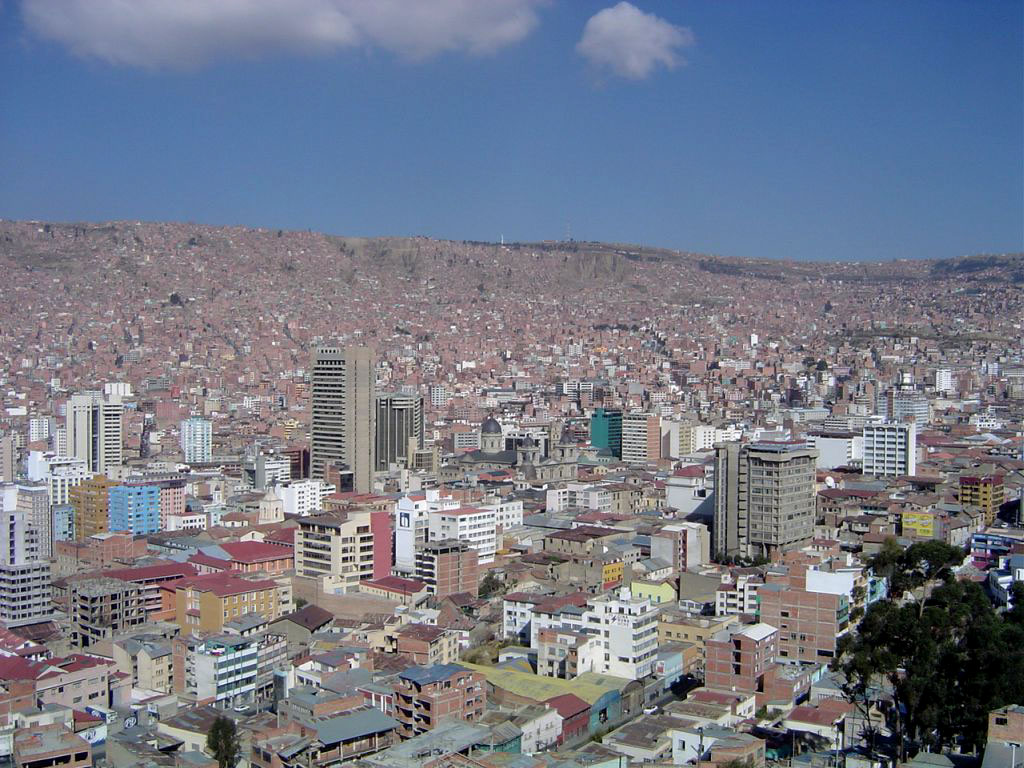
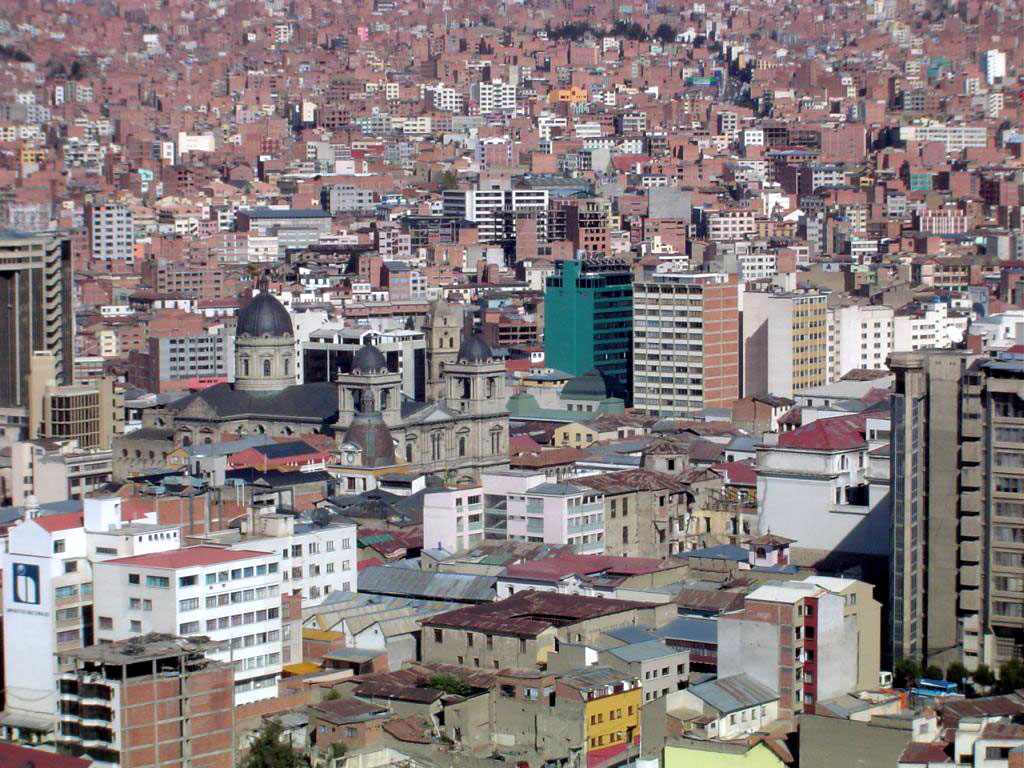
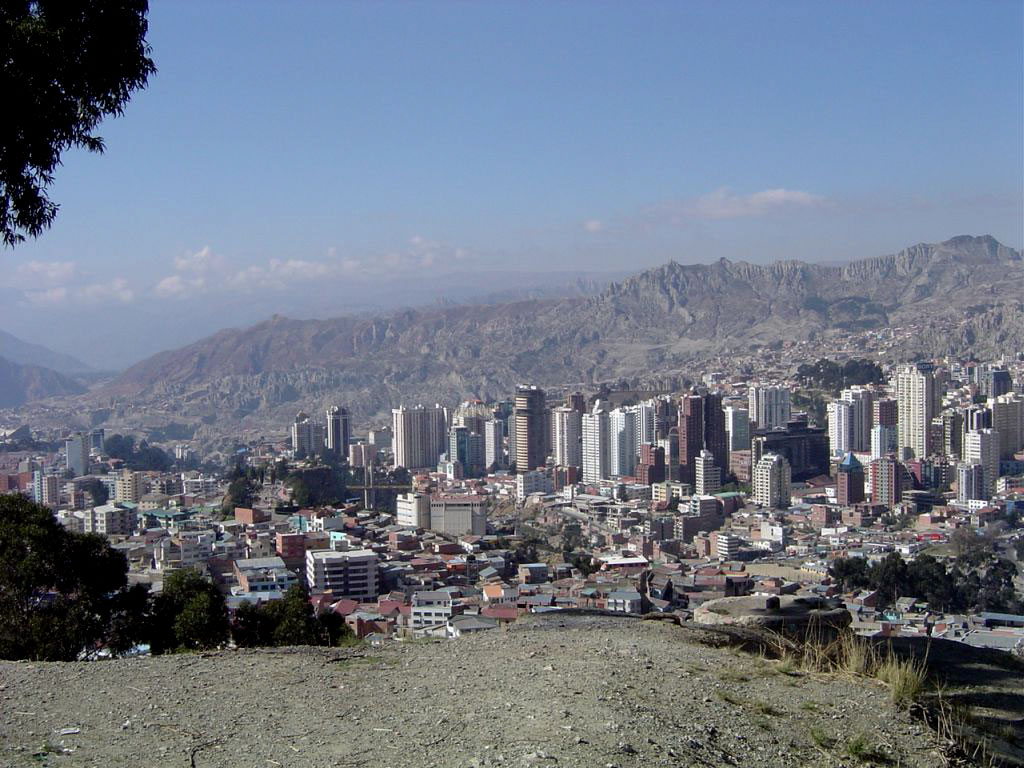
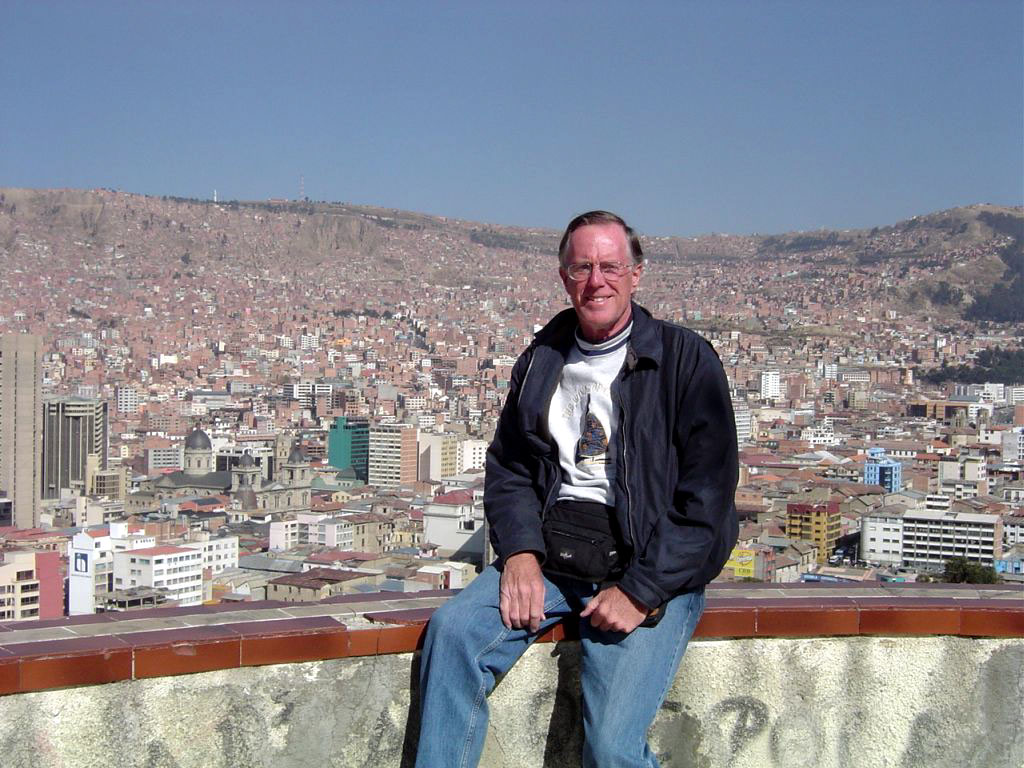
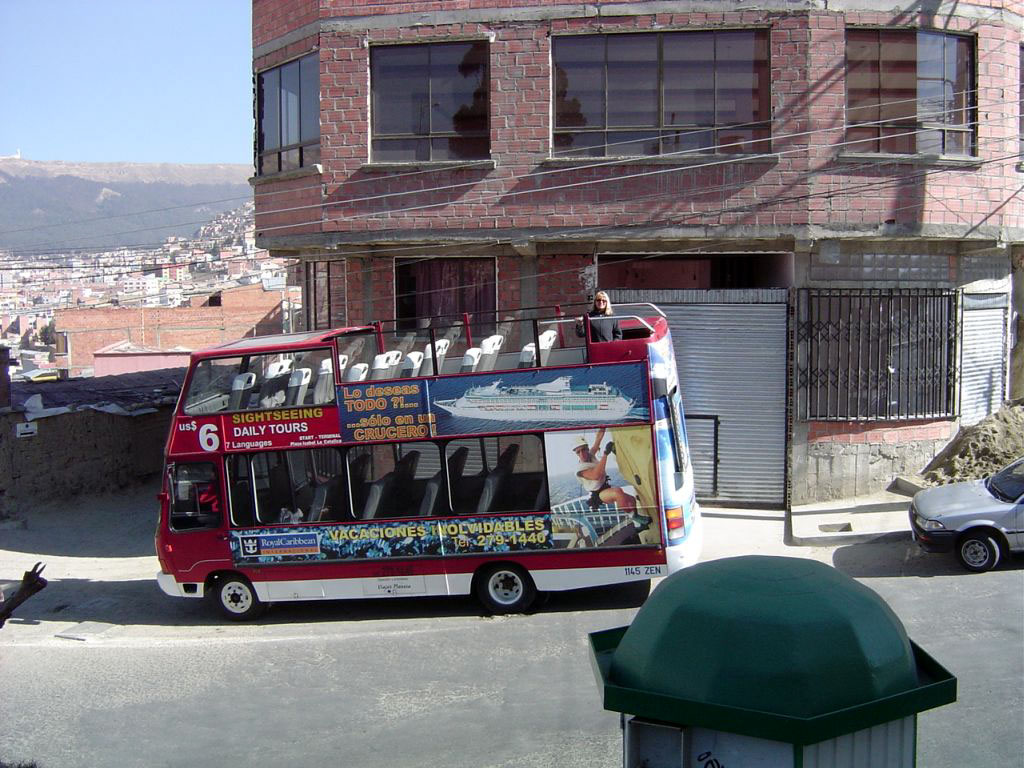
Bus Tour for $6.00 US
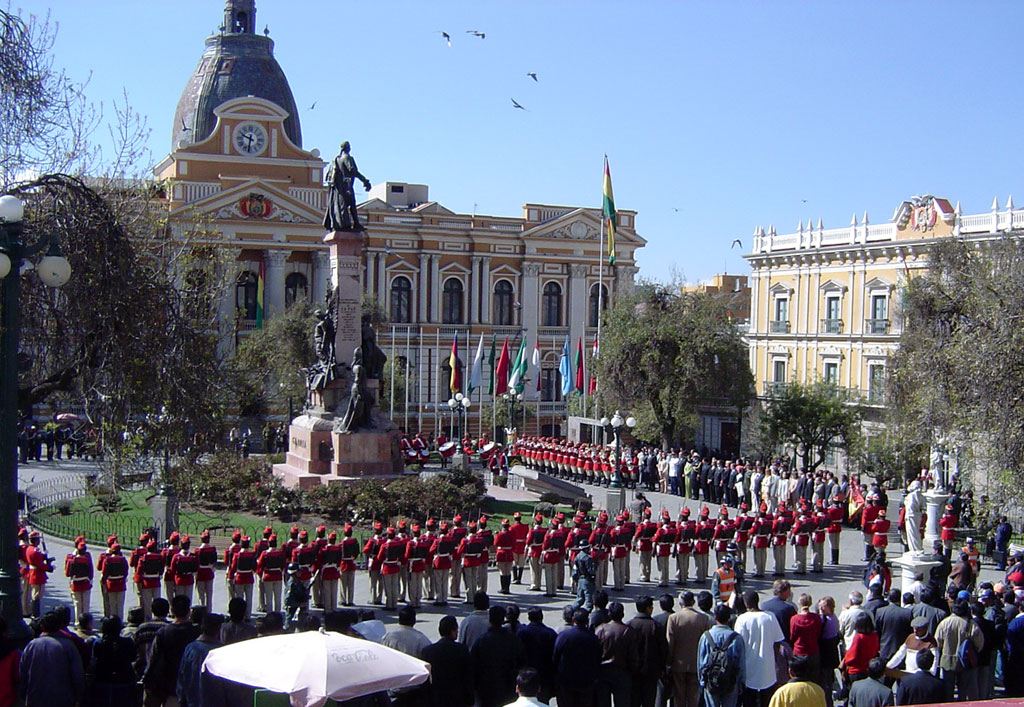
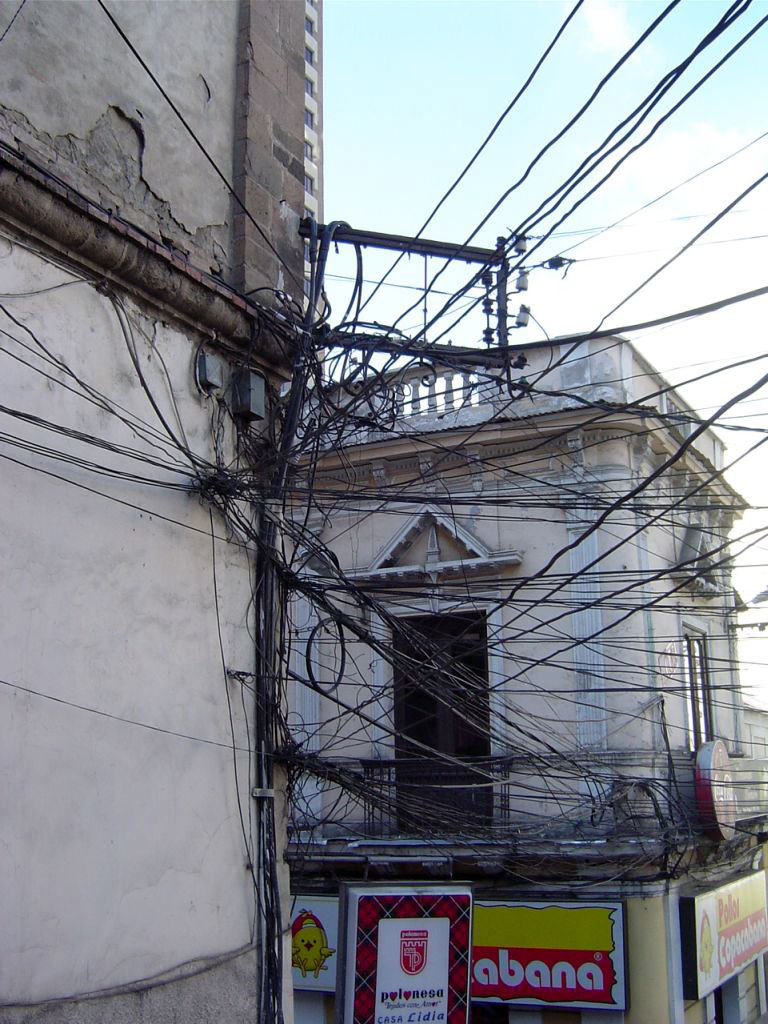
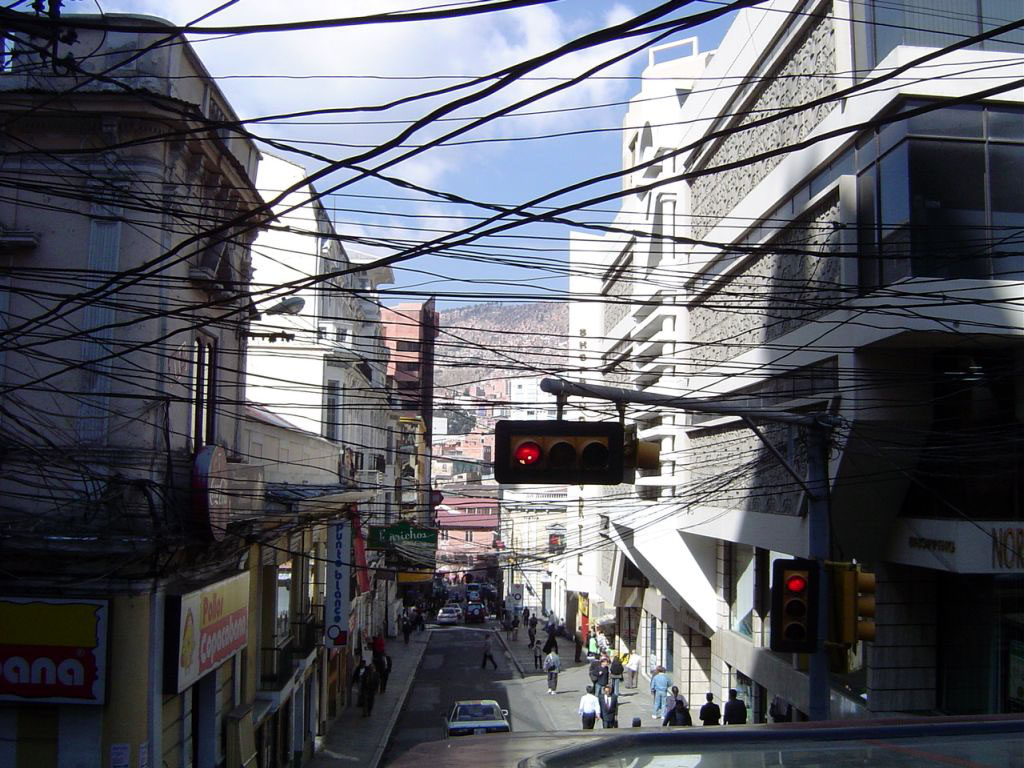
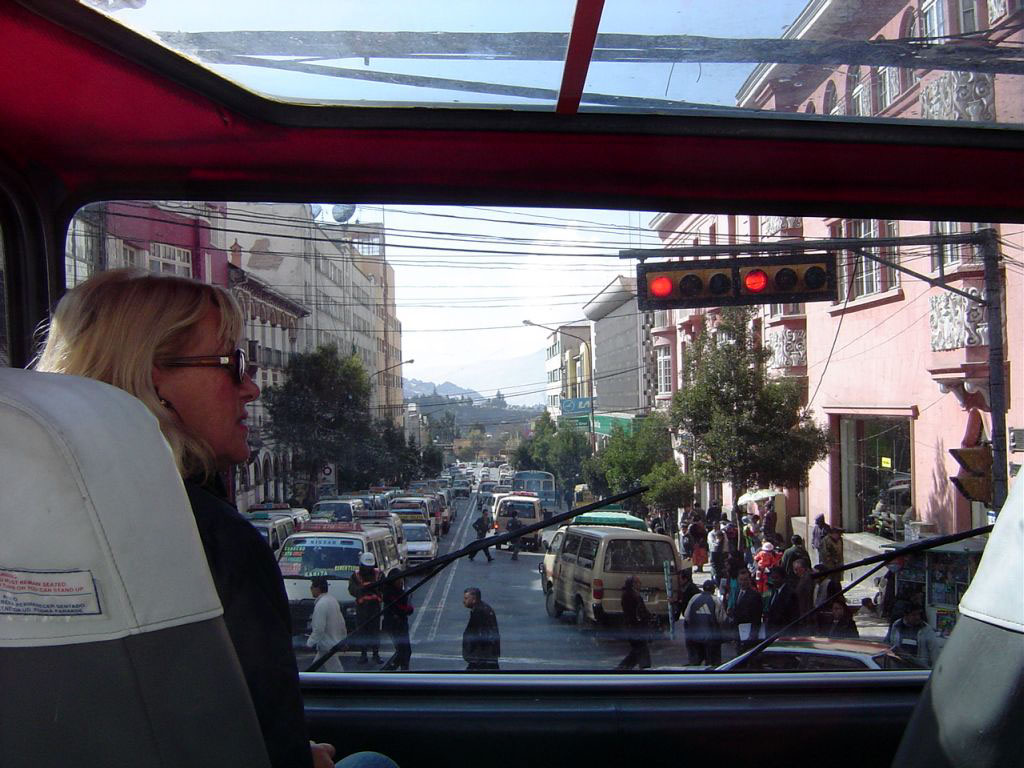
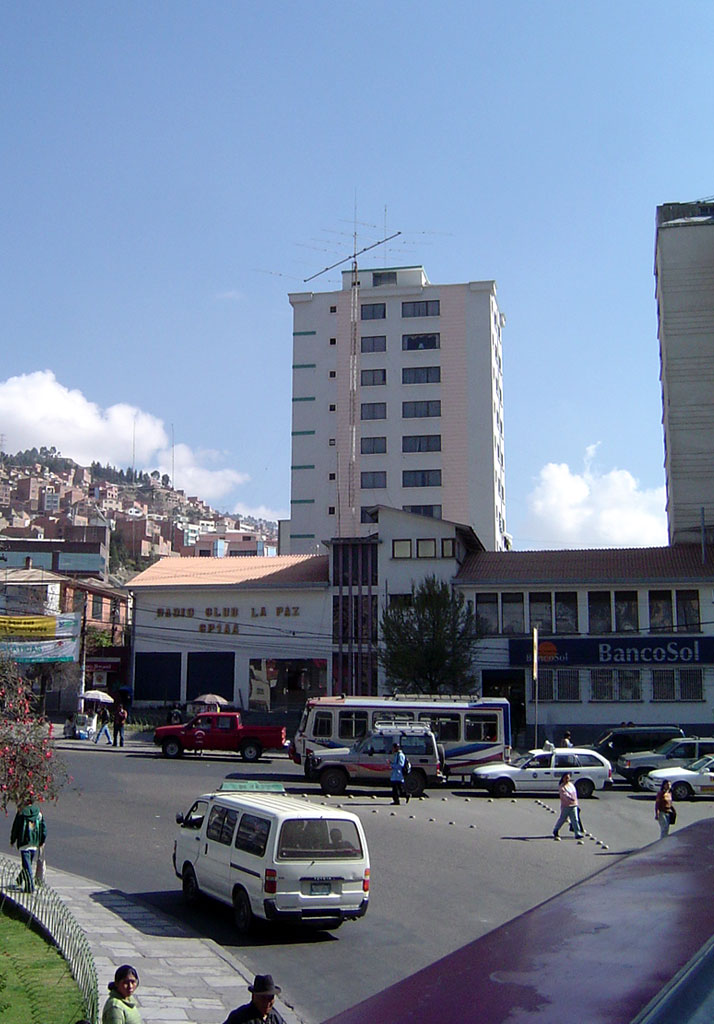
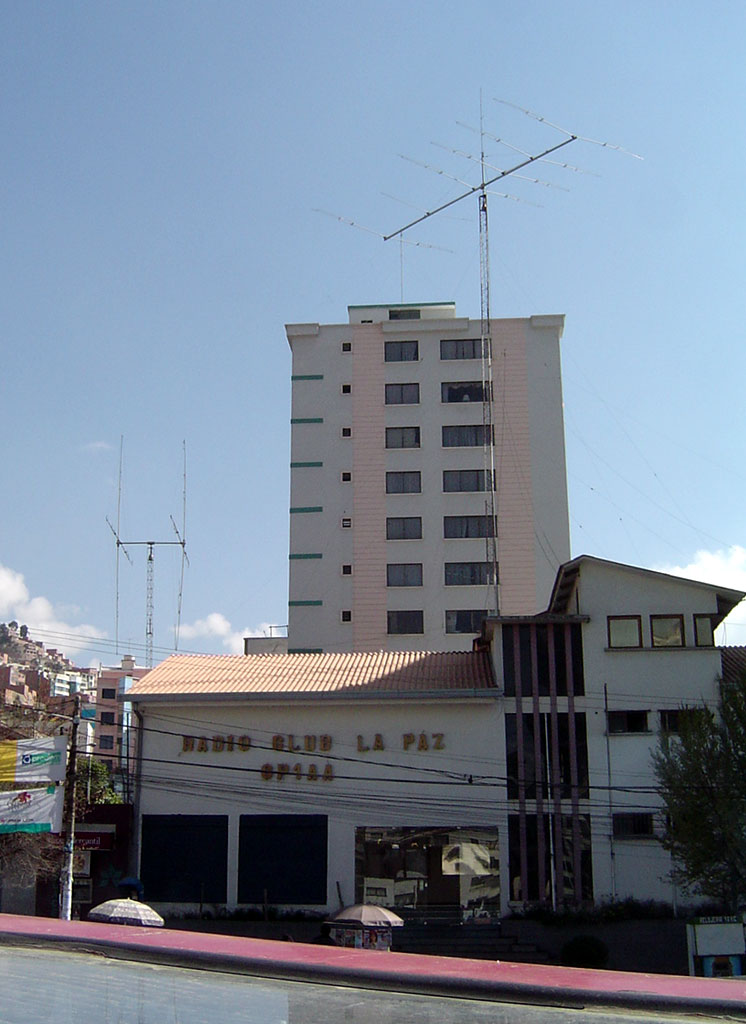
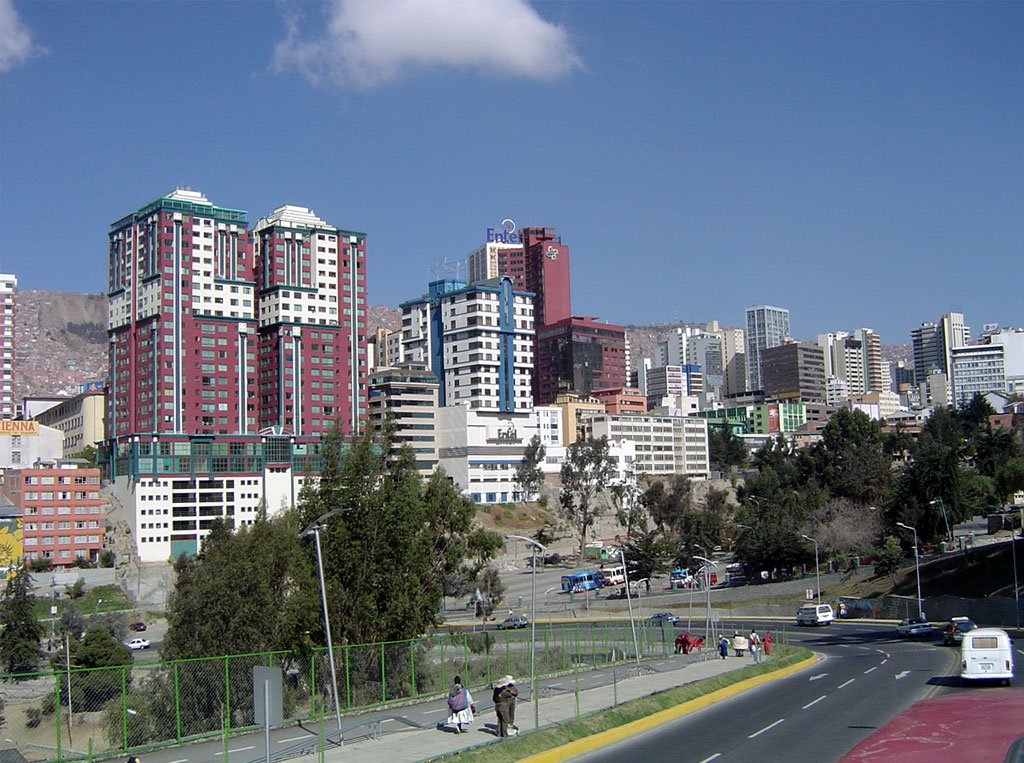
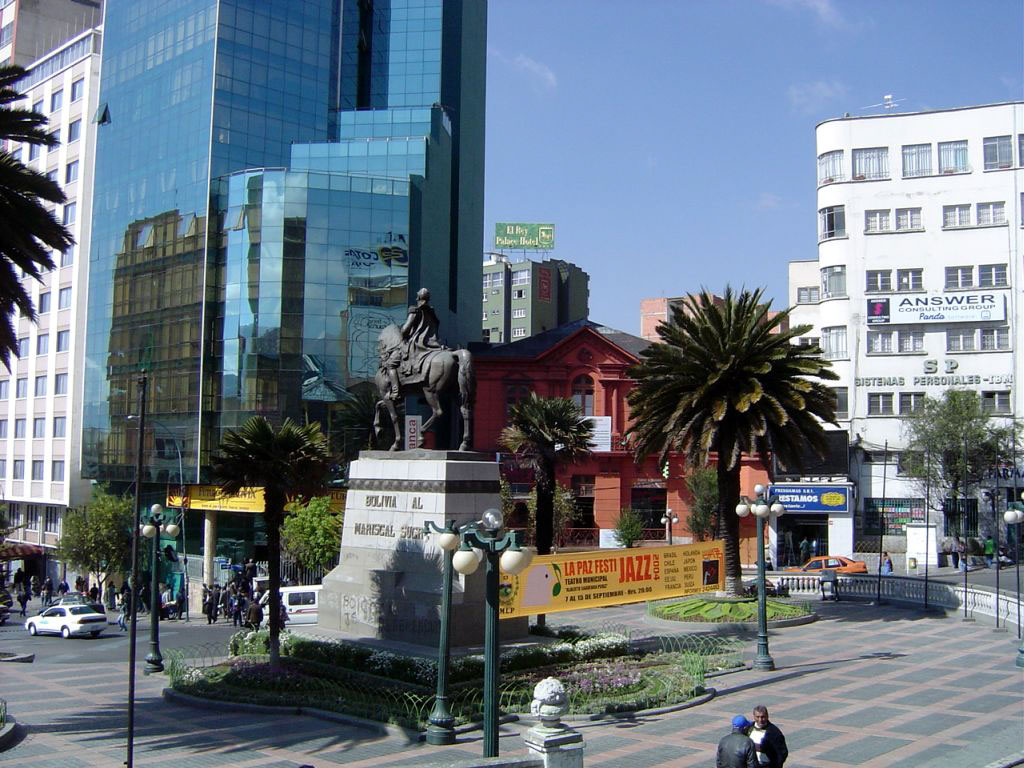

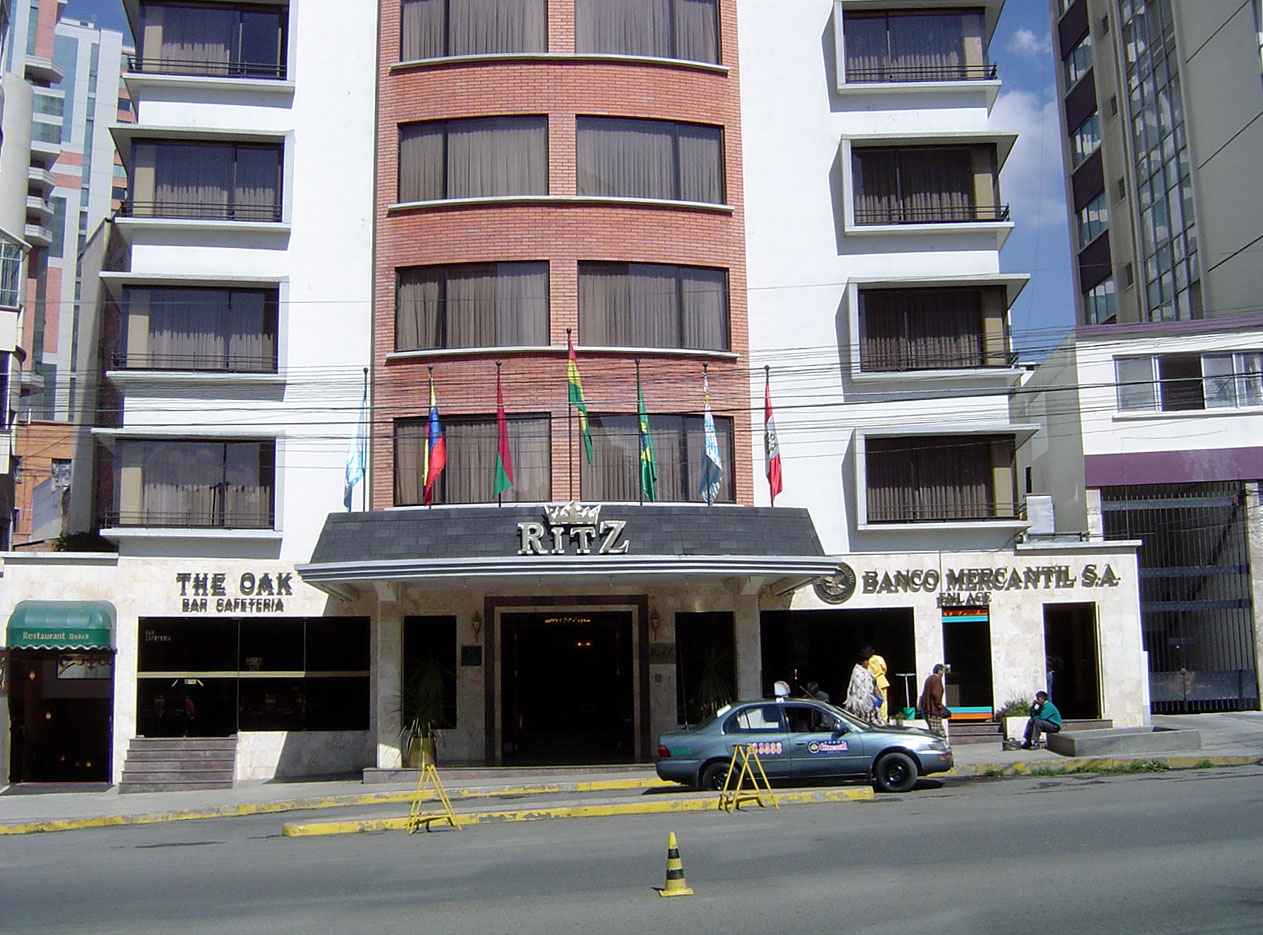
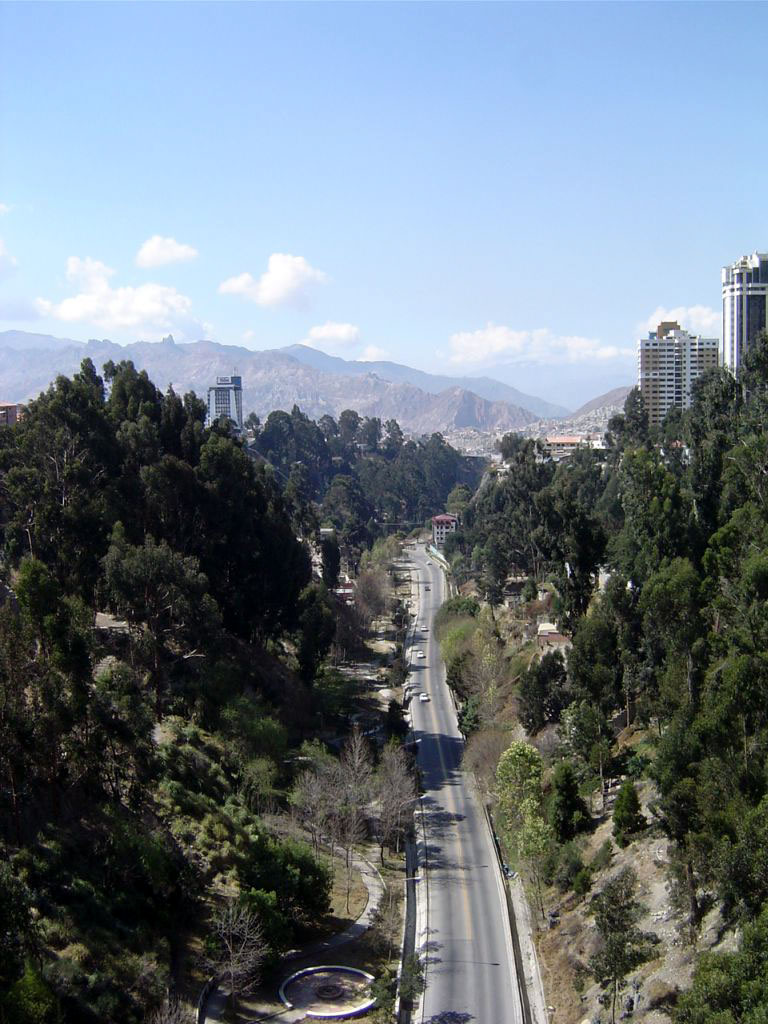
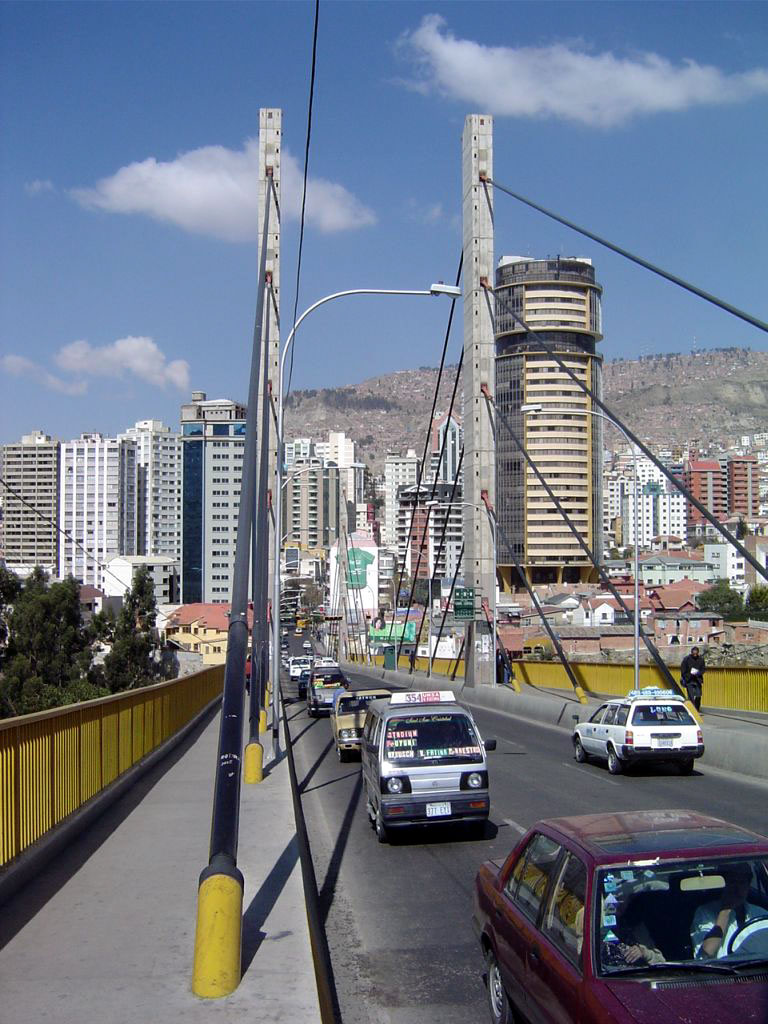
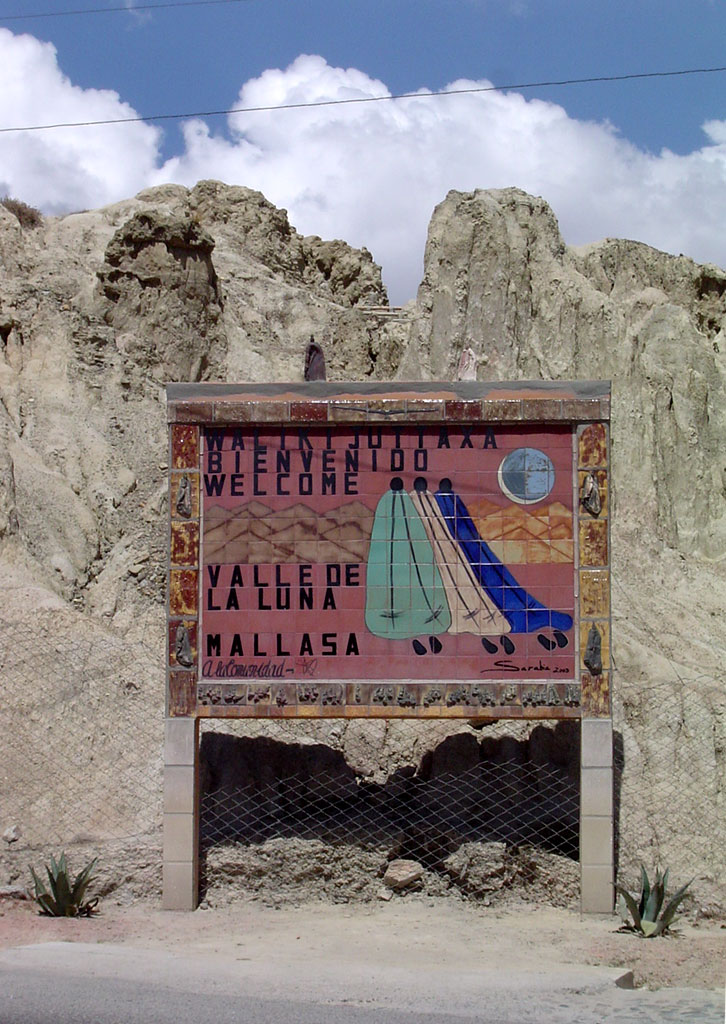
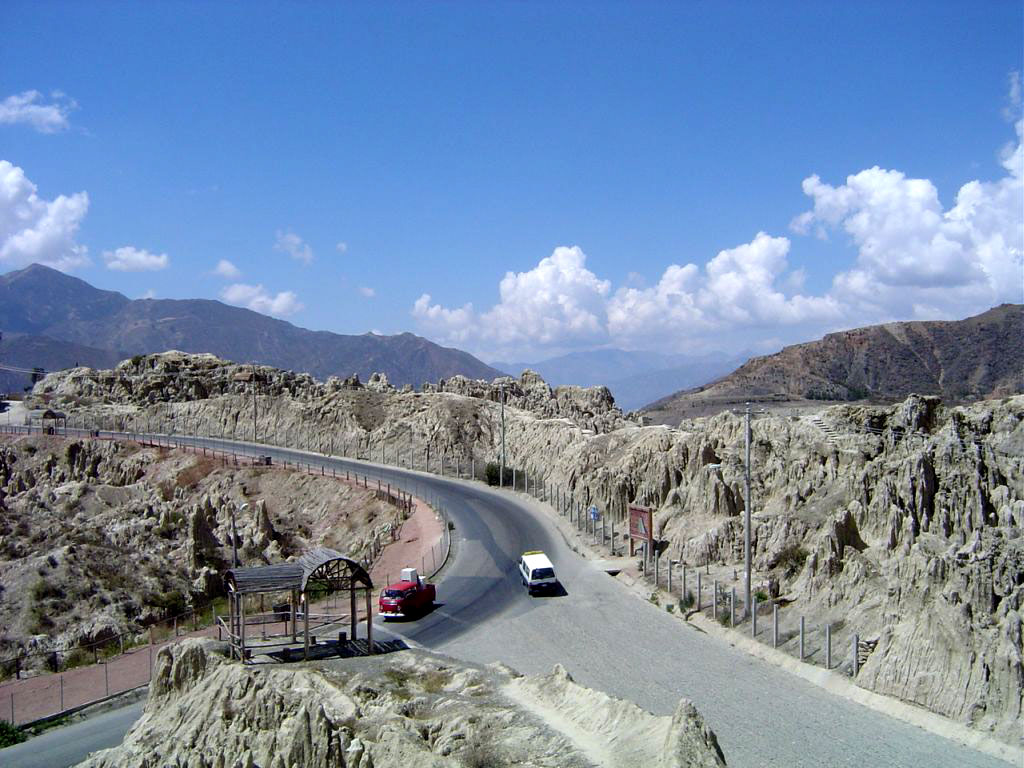
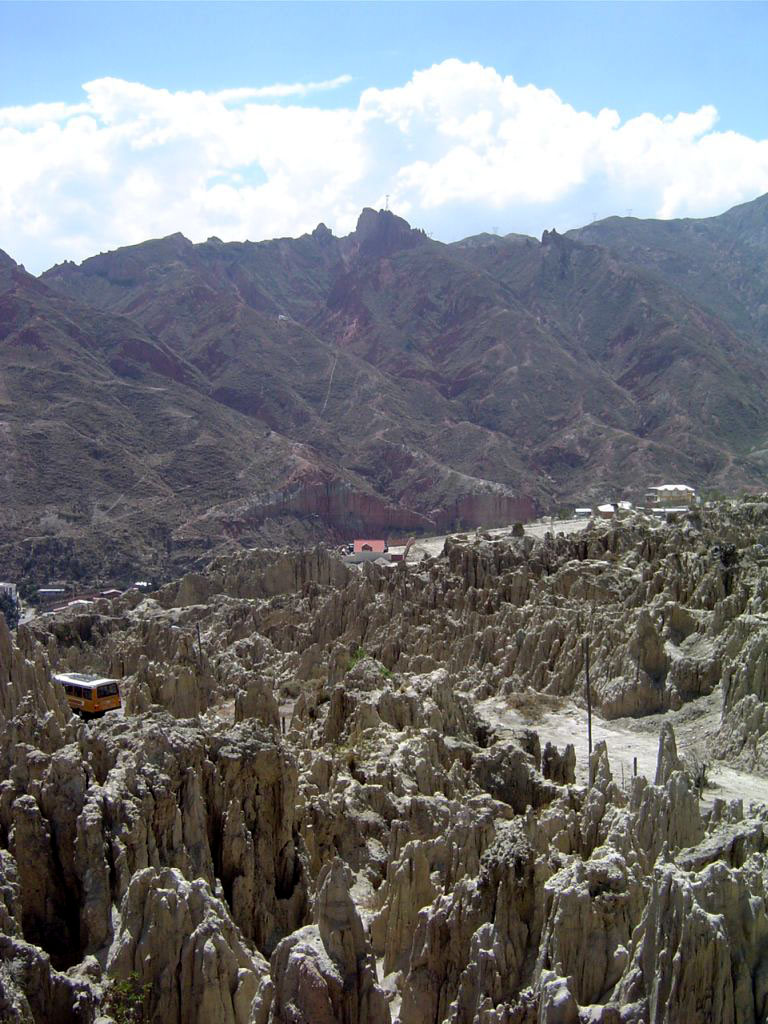
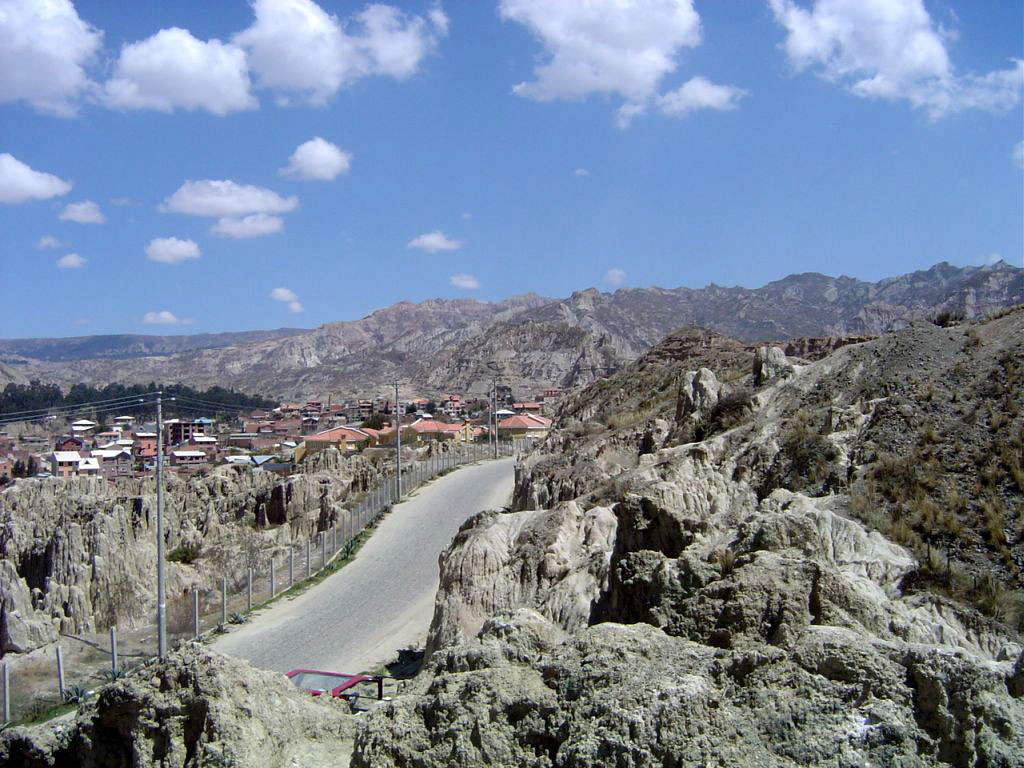
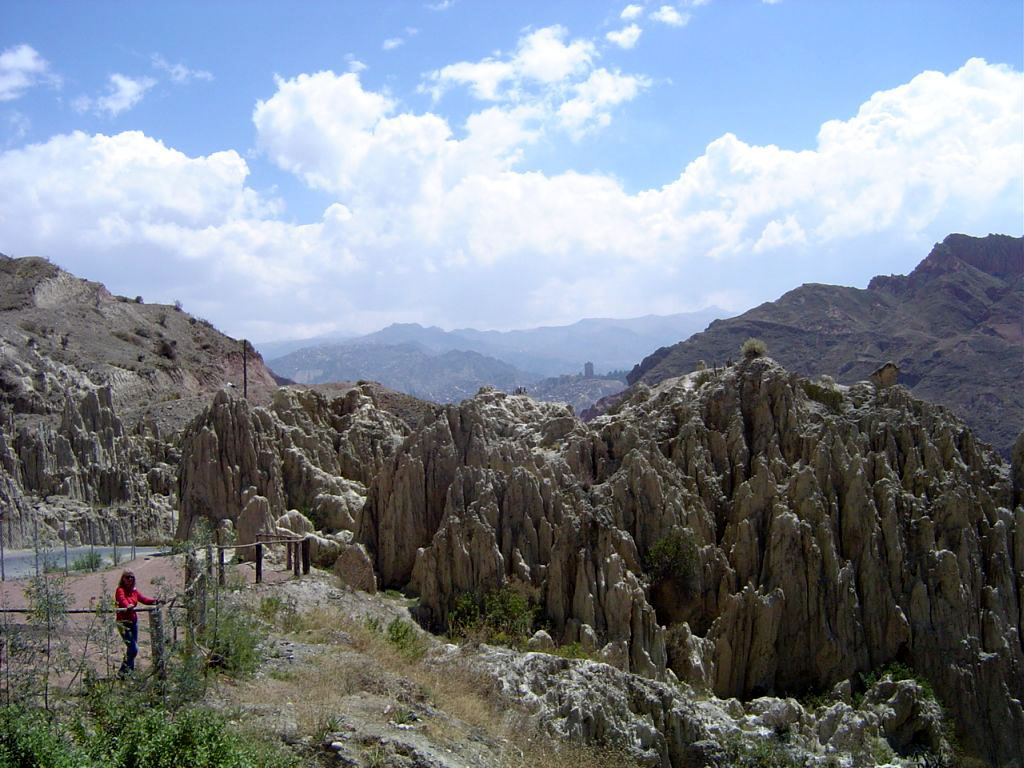
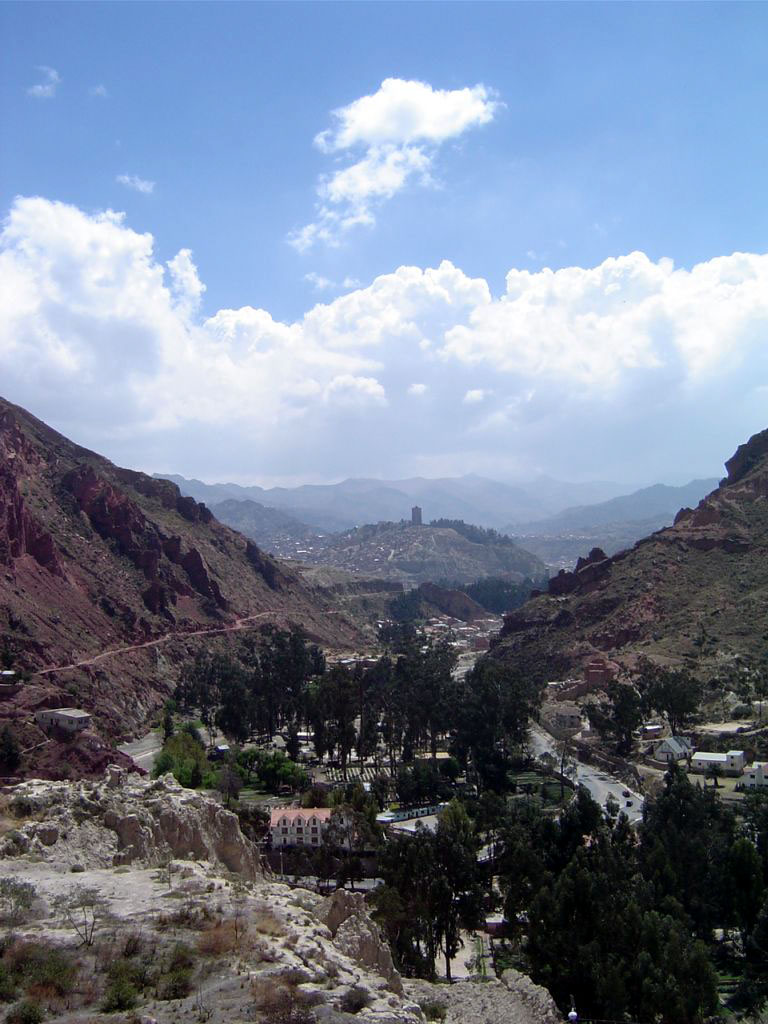
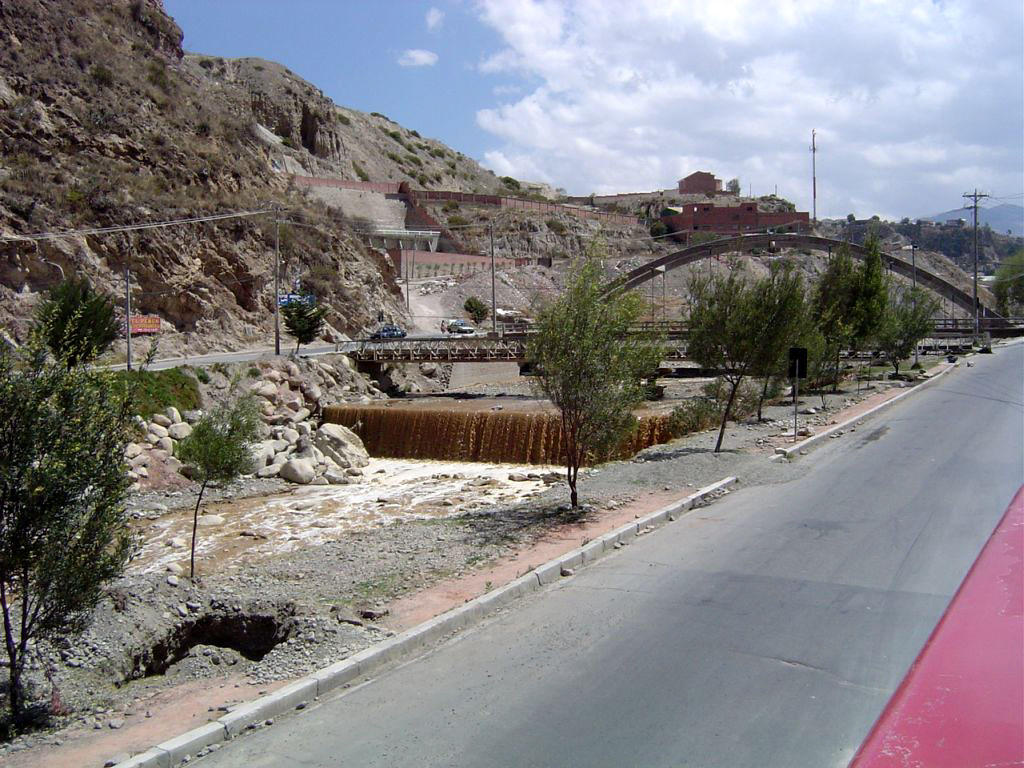
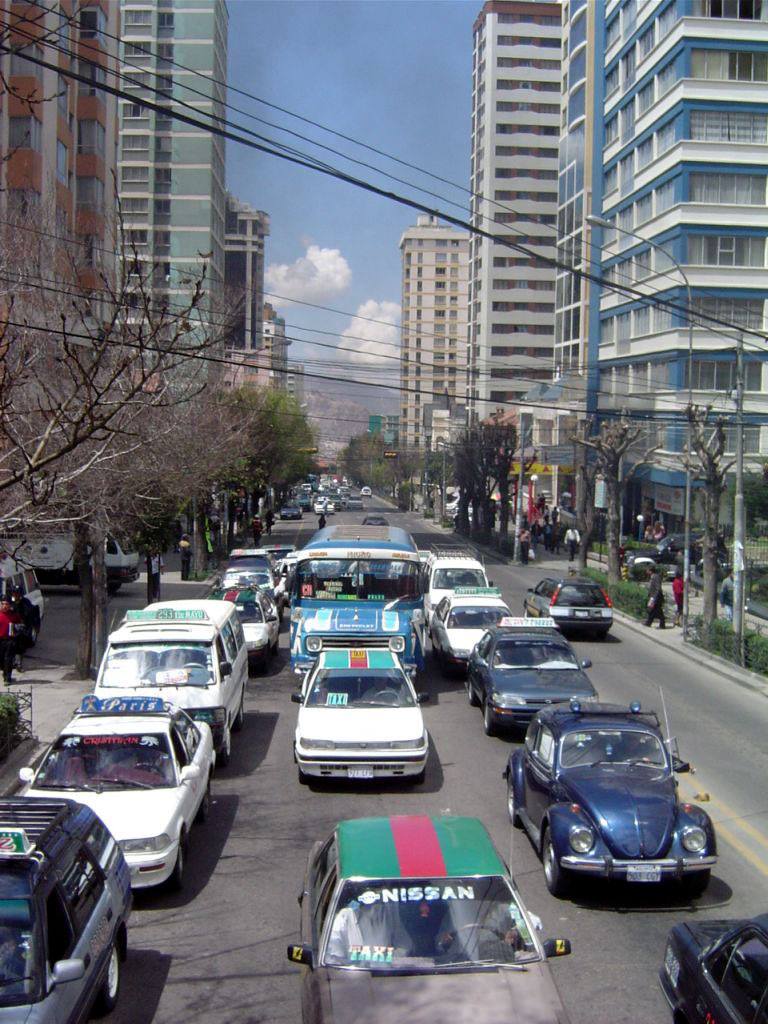
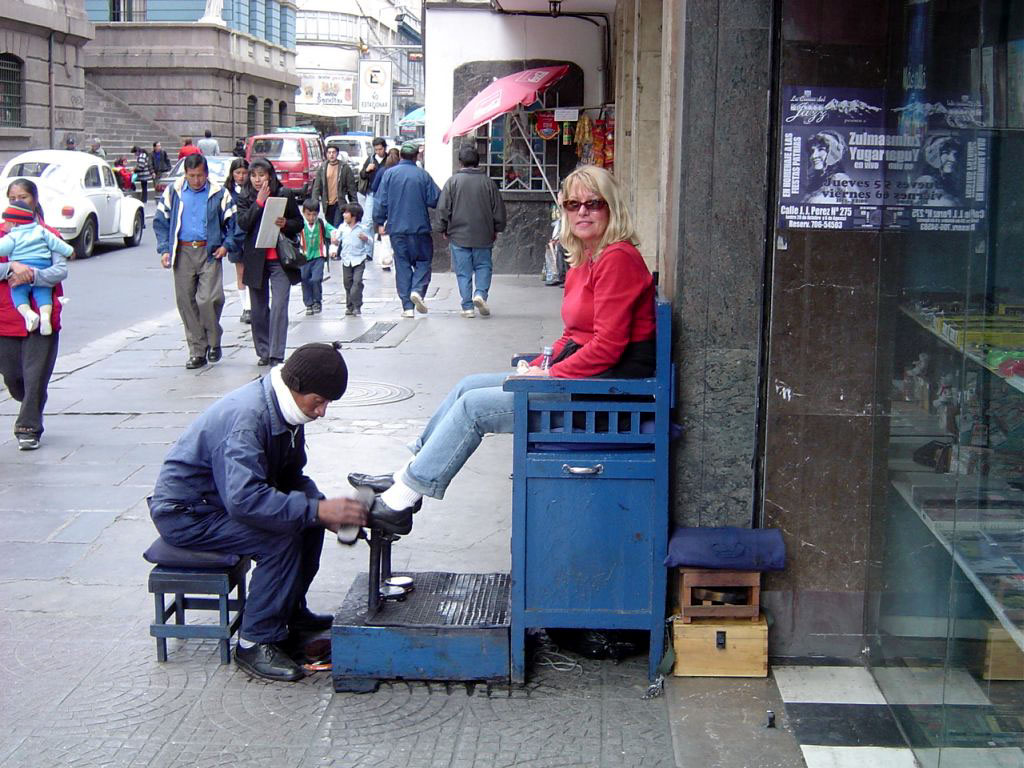
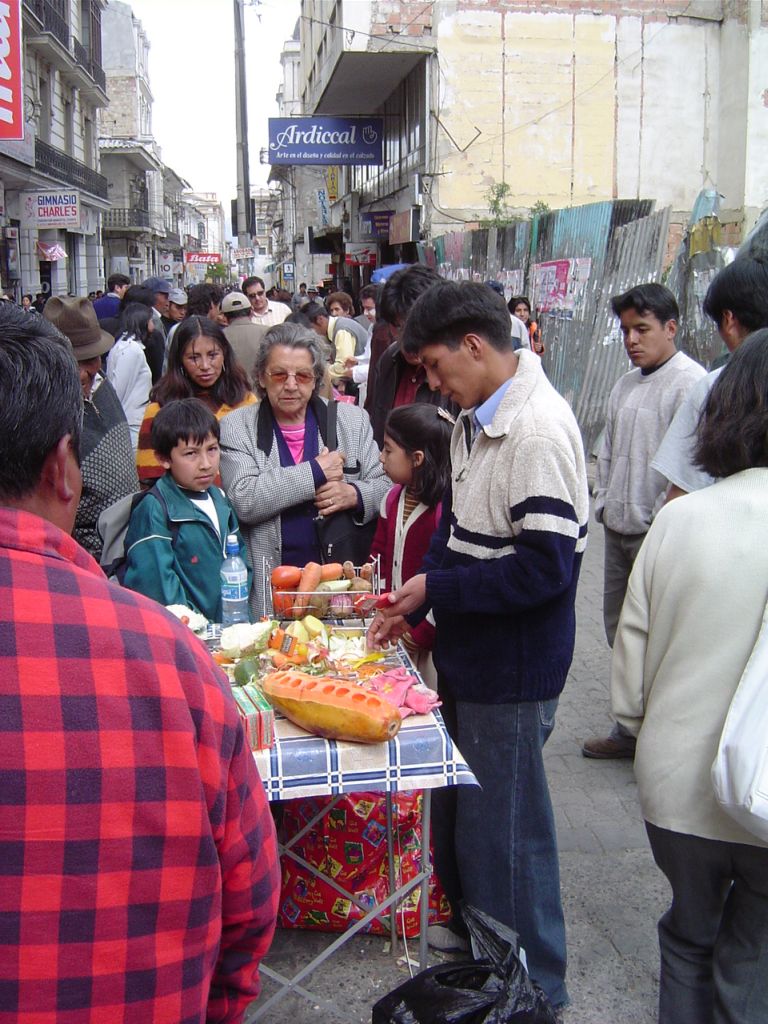
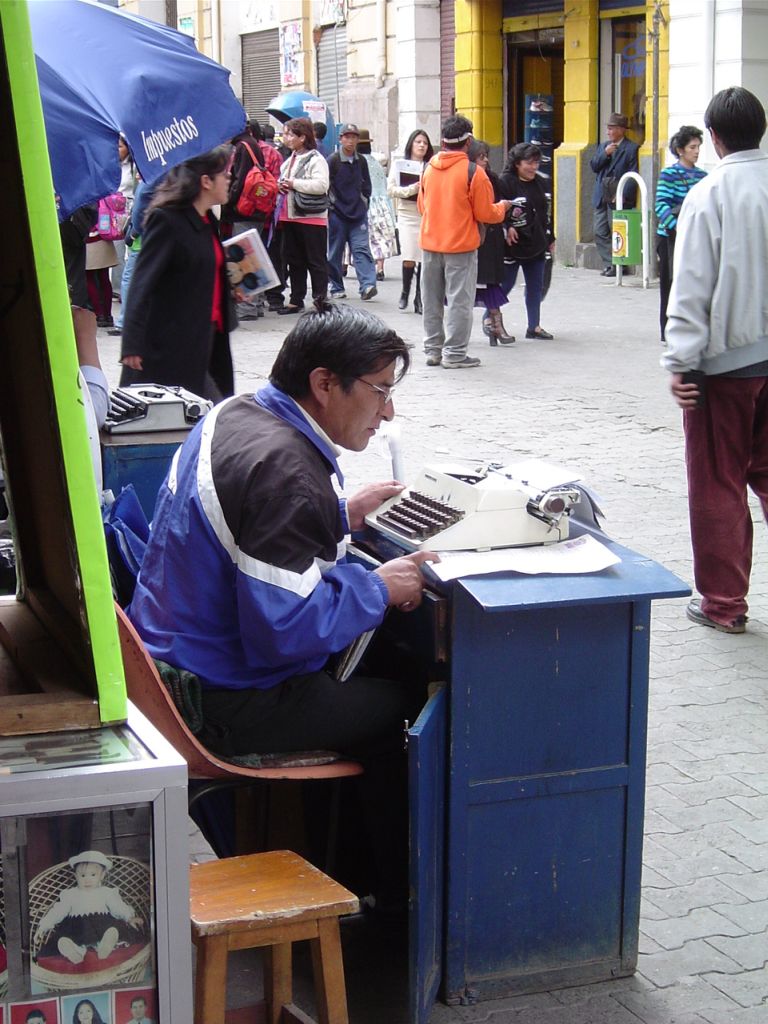
September 8th
The hotel taxi driver was only too happy to take me to the LaPaz Airport, a trip I had to make, to visit the world's highest commercial airport. The ride involves climbing out of the bowl in which LaPaz is located, to the closest flat area, several thousand feet higher. Hoping to be able to visit the control tower and take a few pictures before returning to town, I stopped at the security office to ask how to proceed. Luis, Jefe de Aeropuerto and a fellow pilot, took me under his wing for a complete tour. The first stop was the air-traffic control center for all of Bolivia, located in the base of the tower. Isabel, the ATC supervisor, introduced me to the controllers on duty and explained how they handled traffic without radar. The tower cab, five floors up, looks out over a runway 4000 meters (almost 2.5 miles) long. With a field elevation of some 13,300 feet, mountains reaching more than 20,000 feet towered above. Luis radioed the tower for permission to drive out on the active runway and it was immediately granted. With 30 flights per day, there was time before the next arrival to drive from one end to the other and back again. The amount of tire rubber deposited on the end of Runway 28 was much more than that on the other end, Runway 10, Luis explained, because most flights land using the ILS installed on that end. Some of Luis' friends were working on a C-46 aircraft, so he stopped to introduce me to the mechanics. Still flying after some 60 years, the aircraft was in fine condition, though the DC-3 and two DC-6's parked nearby will never fly again.
My driver waited patiently while my "media hora" (half hour) turned into a "hora y media" (hour and a half). Back down into the bowl we went, in pursuit of the Radio Club La Paz, a ham-station located during the city tour the day before. Fortunately, two hams were in the building when I arrived, as earlier phone calls had elicited no response. I was given a tour of the club's dining hall, conference room and "shack" by David, CP1WG. Once again, hams stick up for one of their own.
Our bus tickets for the return to Peru indicated a 3:30 PM departure. That's not the time the bus leaves, that's the time they want you to show up so they can leave at 4:00 PM. Taking the "back way" home put us into Desagadero, the border town, at sunset. All passengers left the bus to trudge through the immigration process while dodging trailer-trucks and other busses on the dirt road. Considering the length of the line of trucks, we were through in a surprisingly short time and boarded our bus again to receive another surprise, a hot meal. Lightning, thunder and rain followed us into Puno.
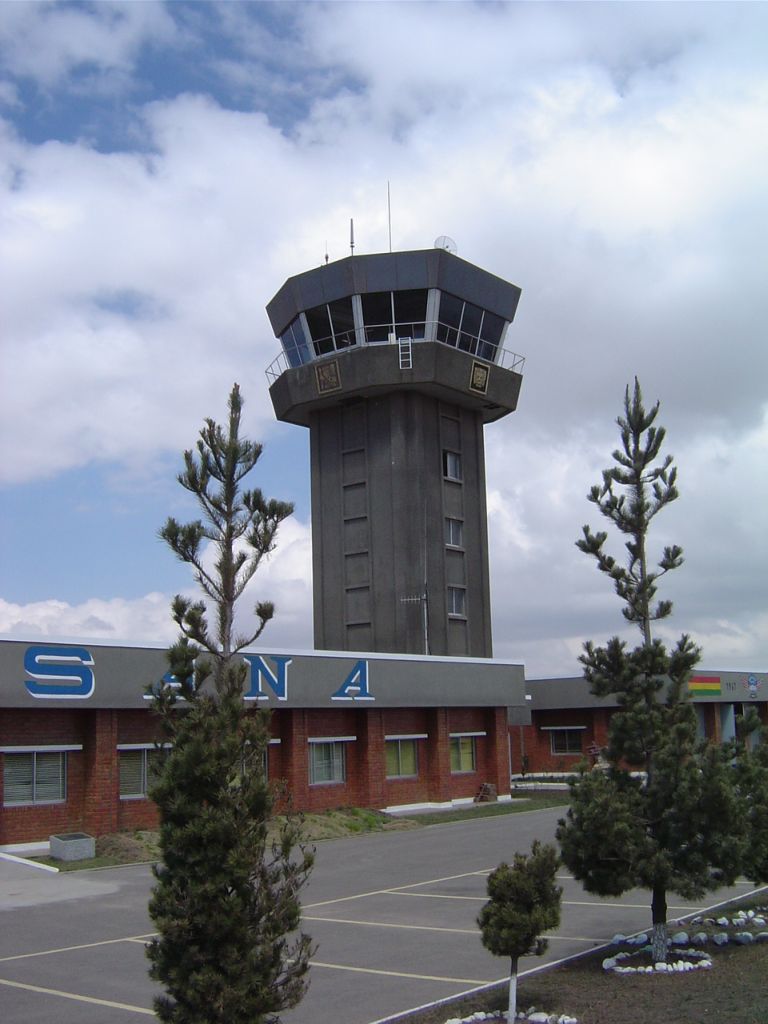
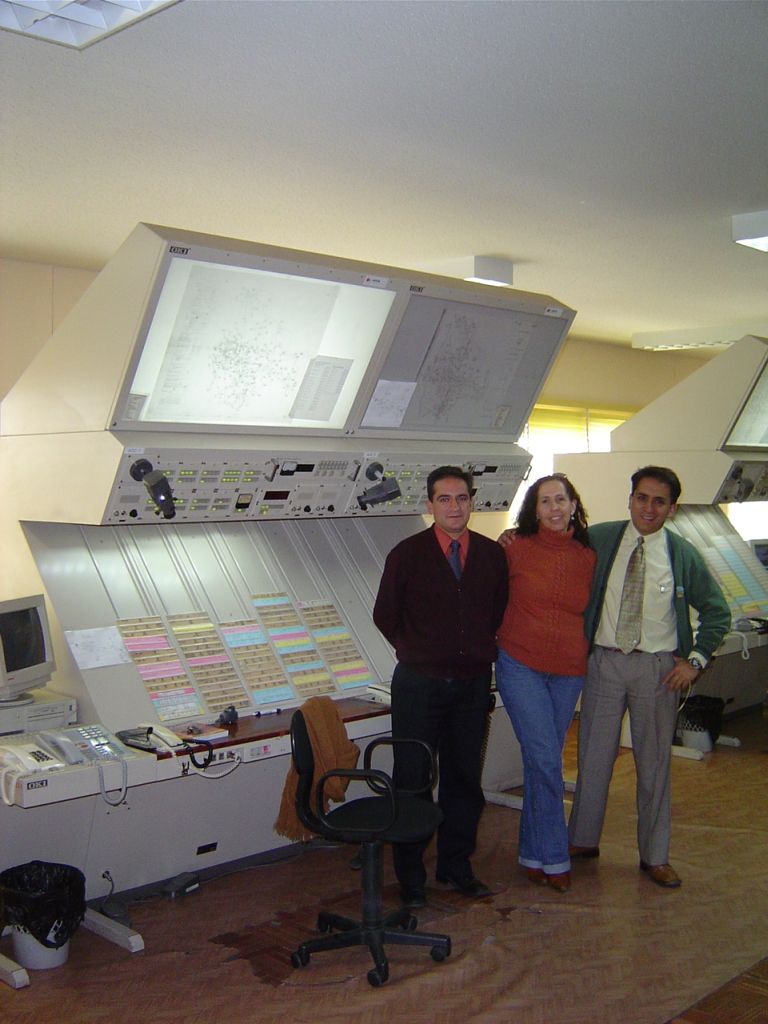
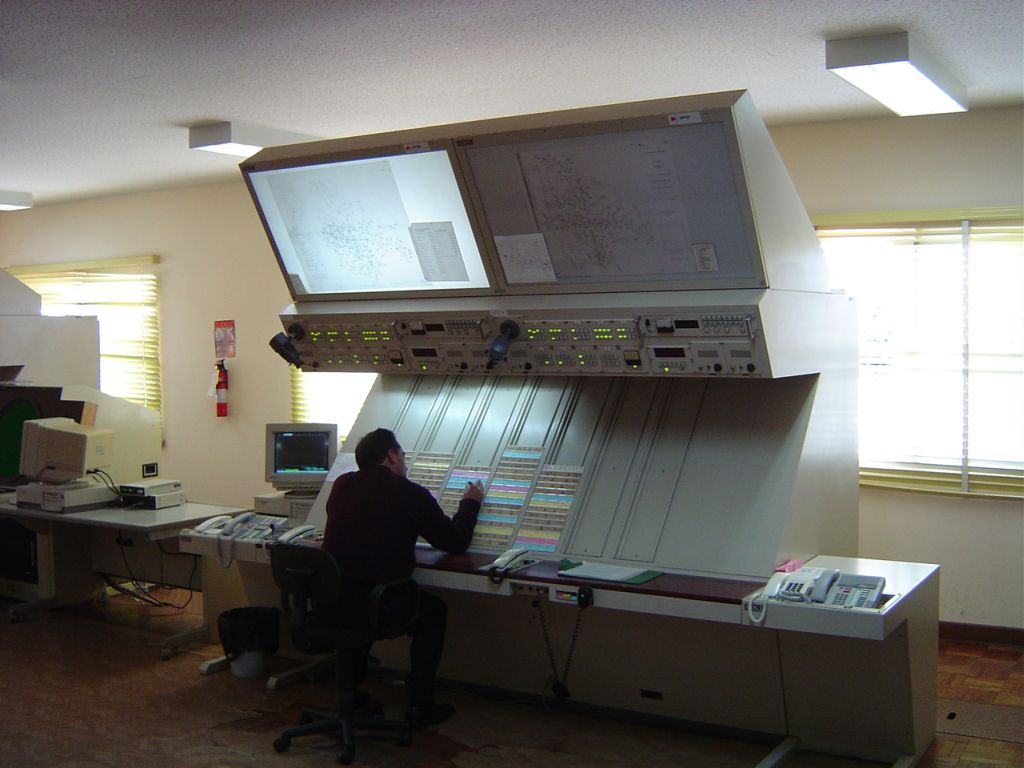
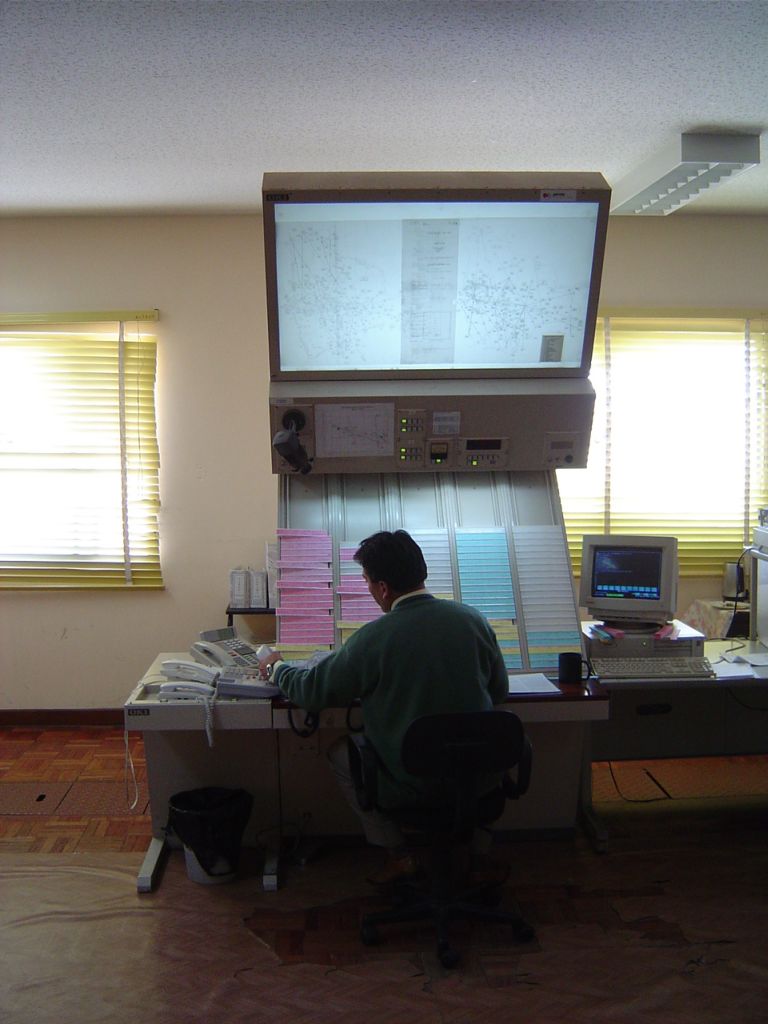
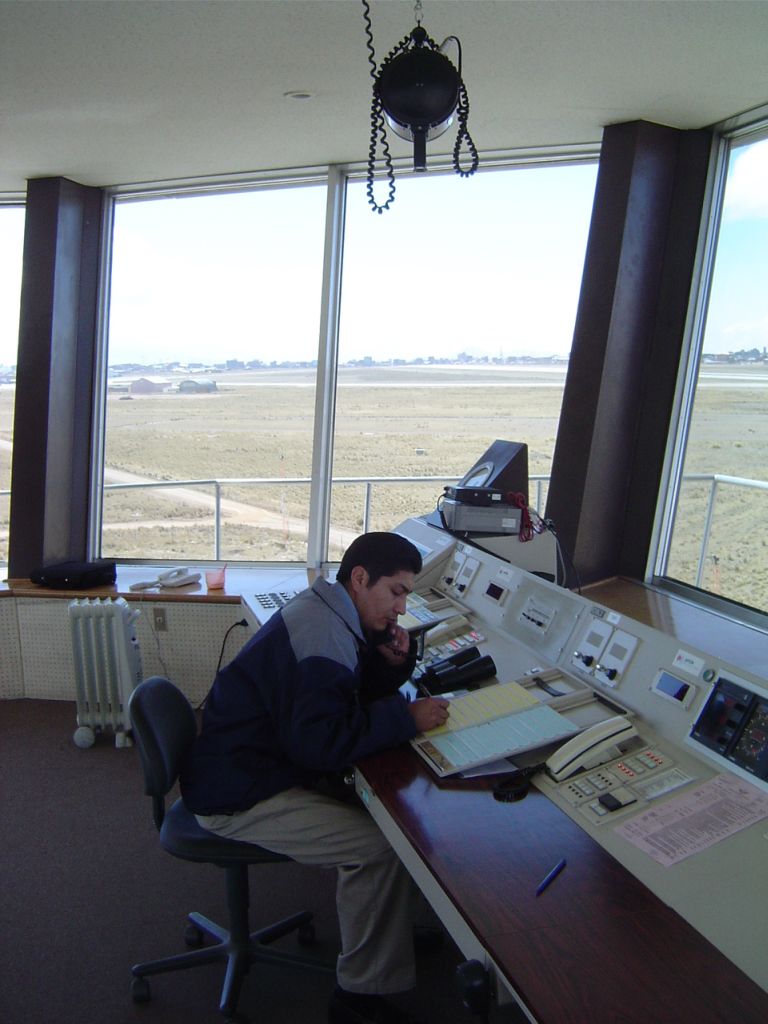
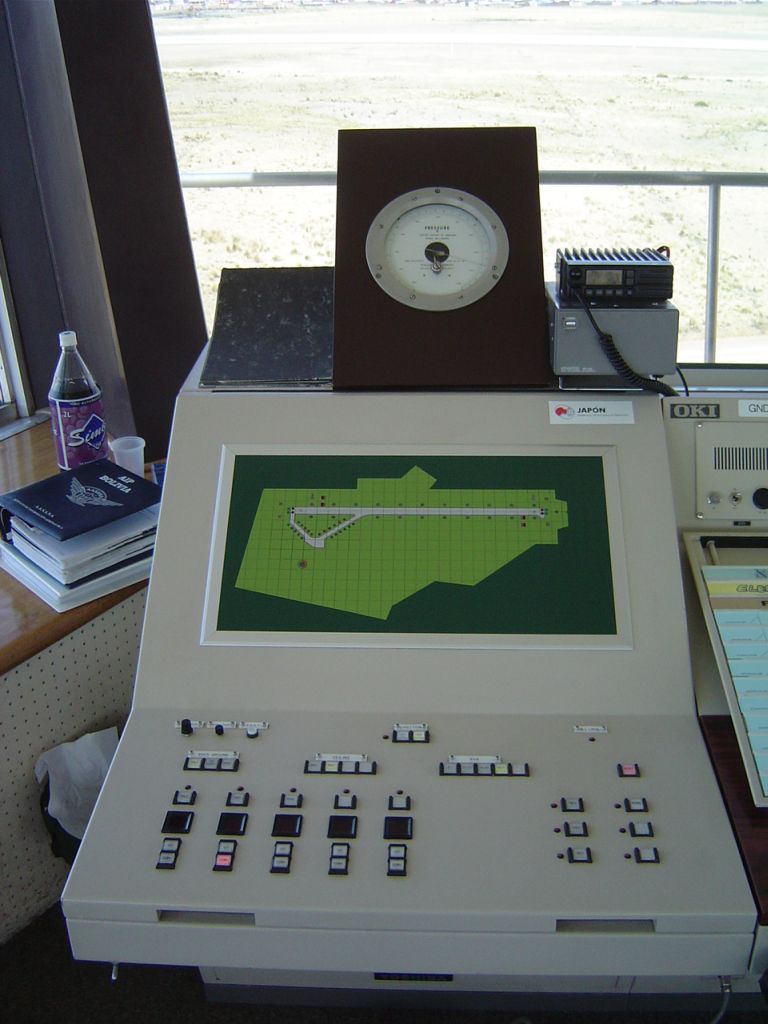
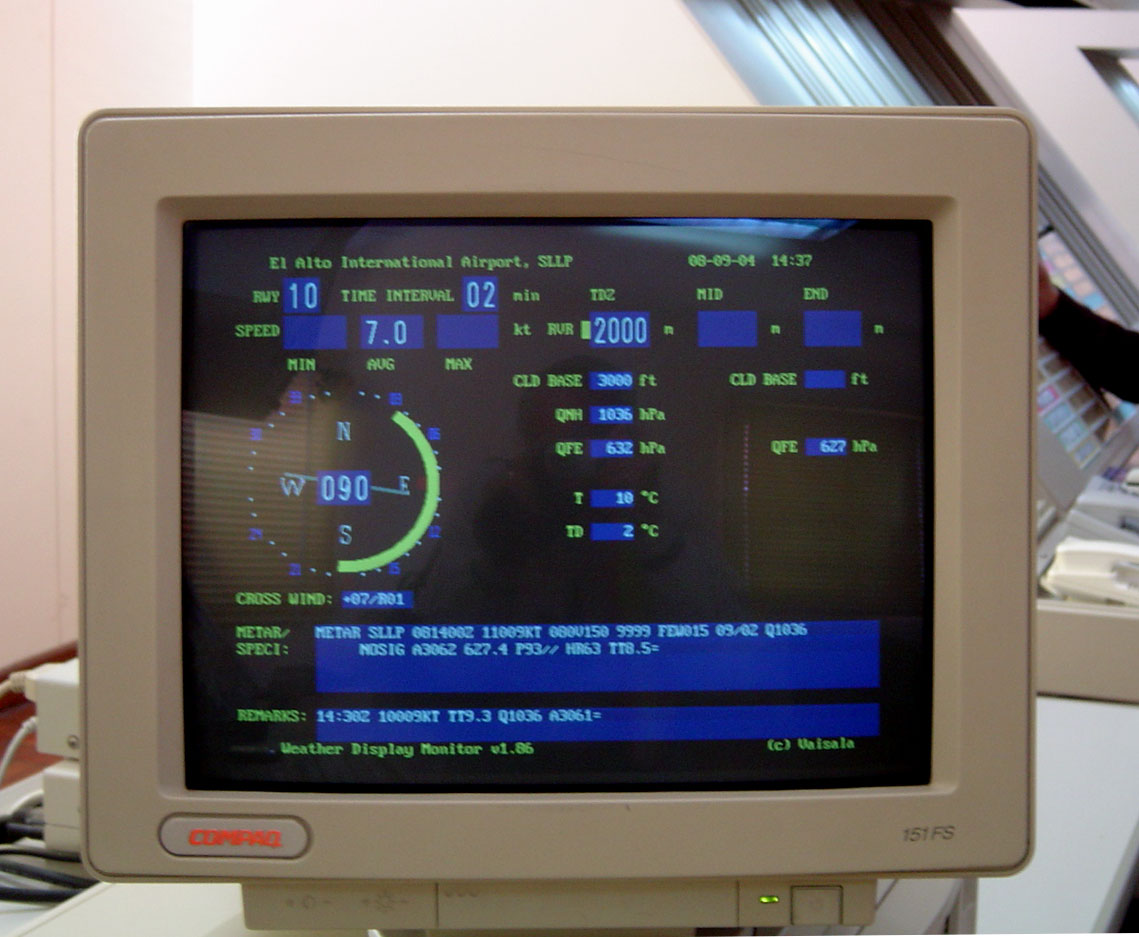
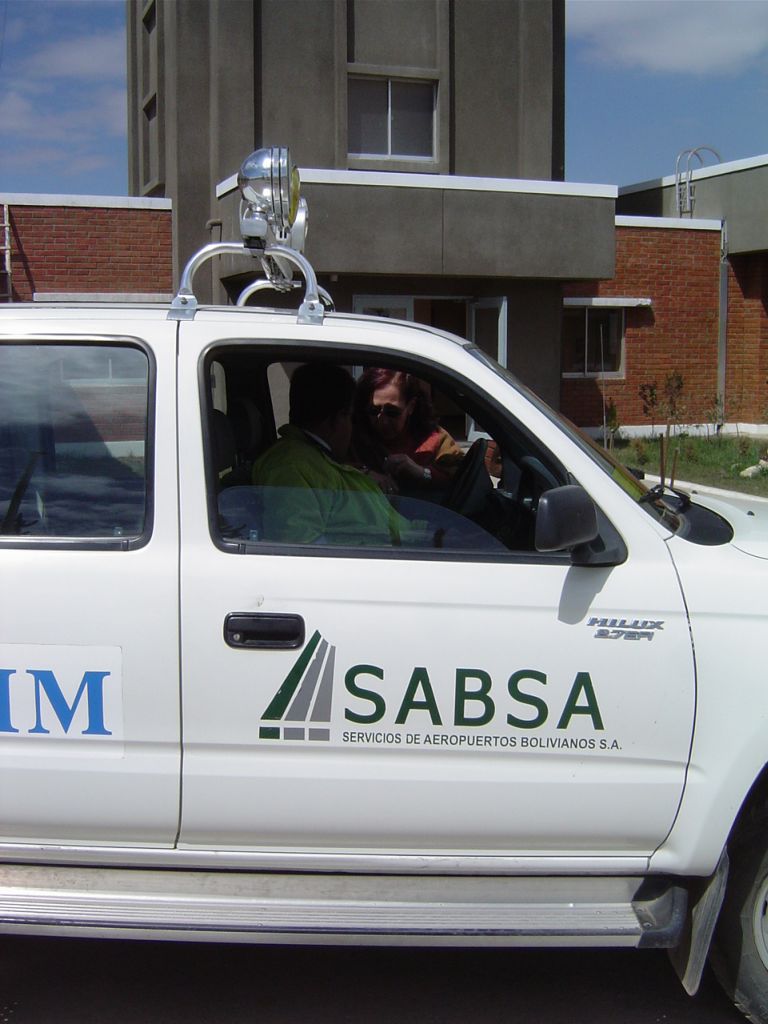
Going for a runway inspection
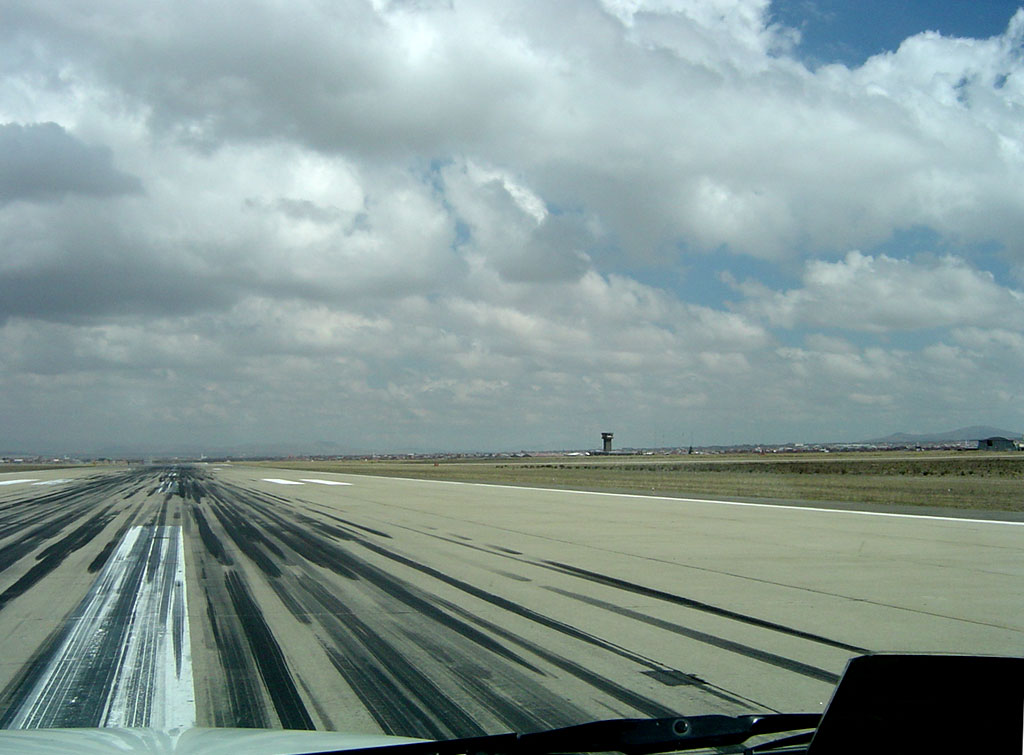
Runway 28 isn't often used...
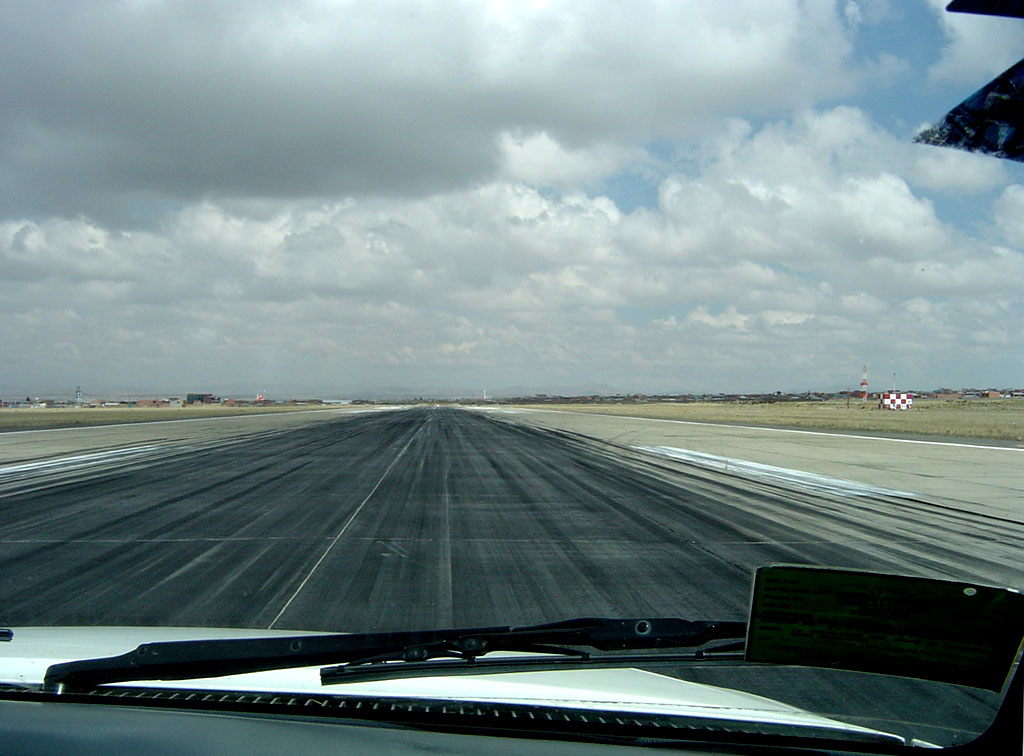
Runway 10 takes a beating !
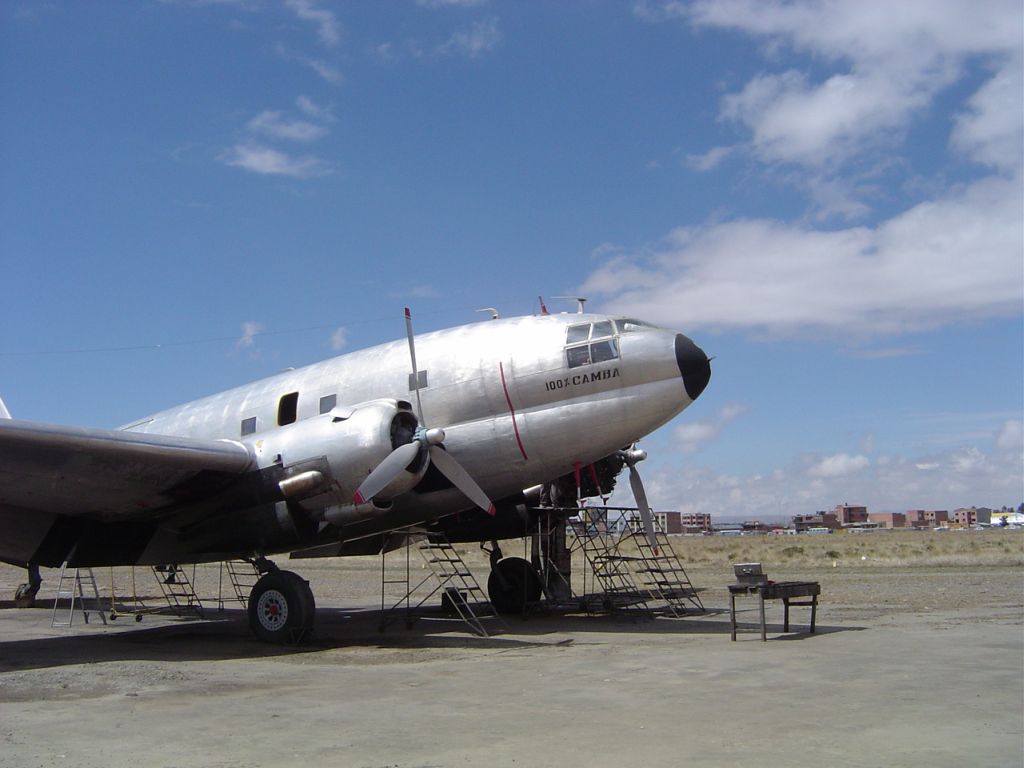
Curtis C-46F registered as CP-1319
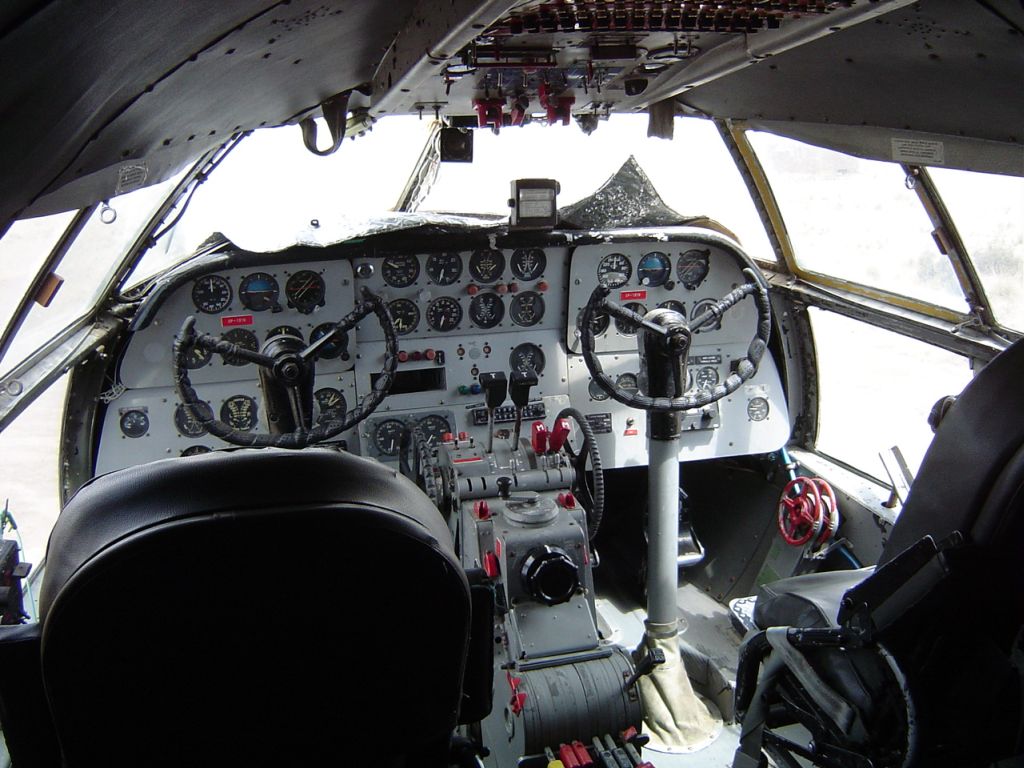
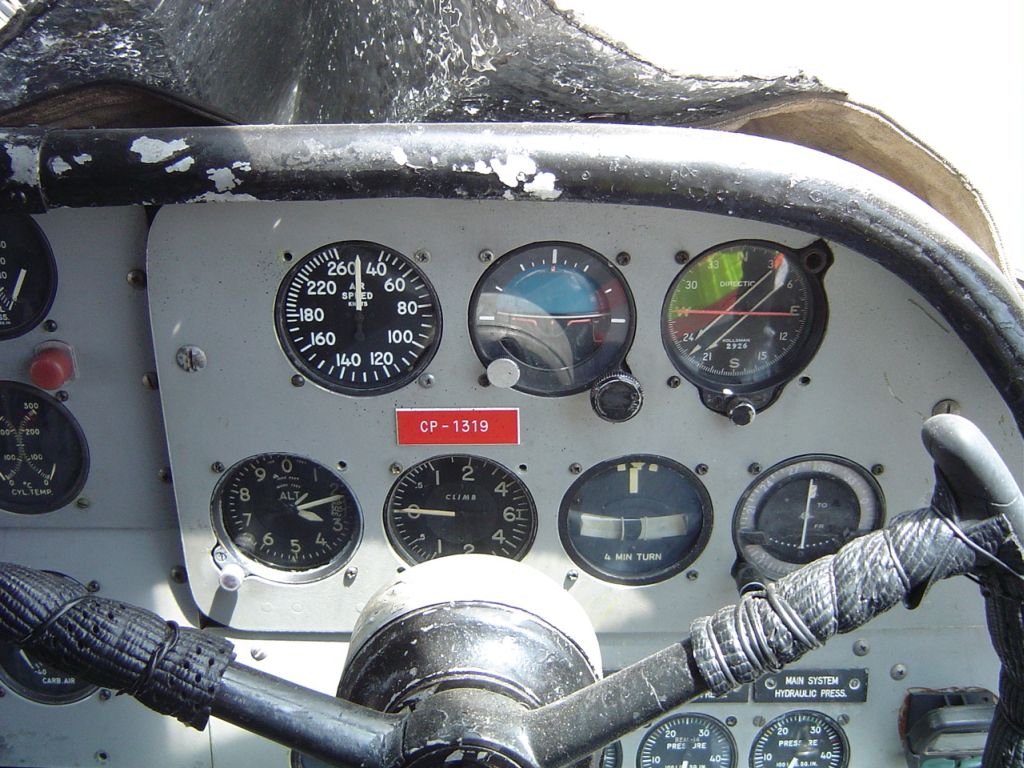
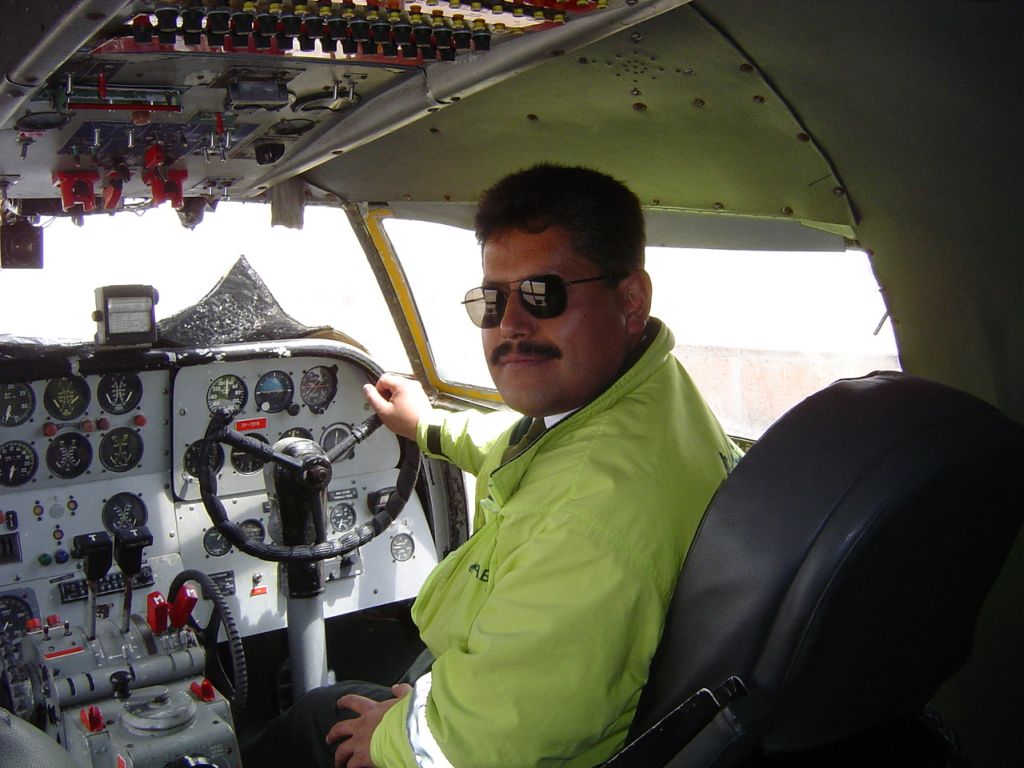
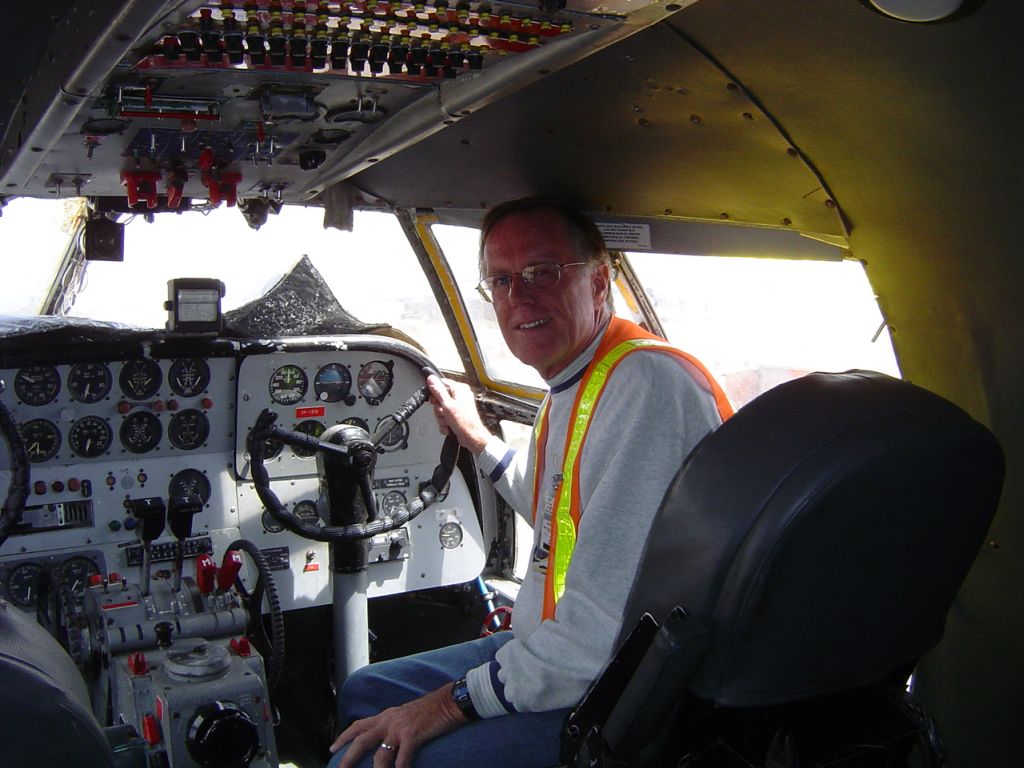
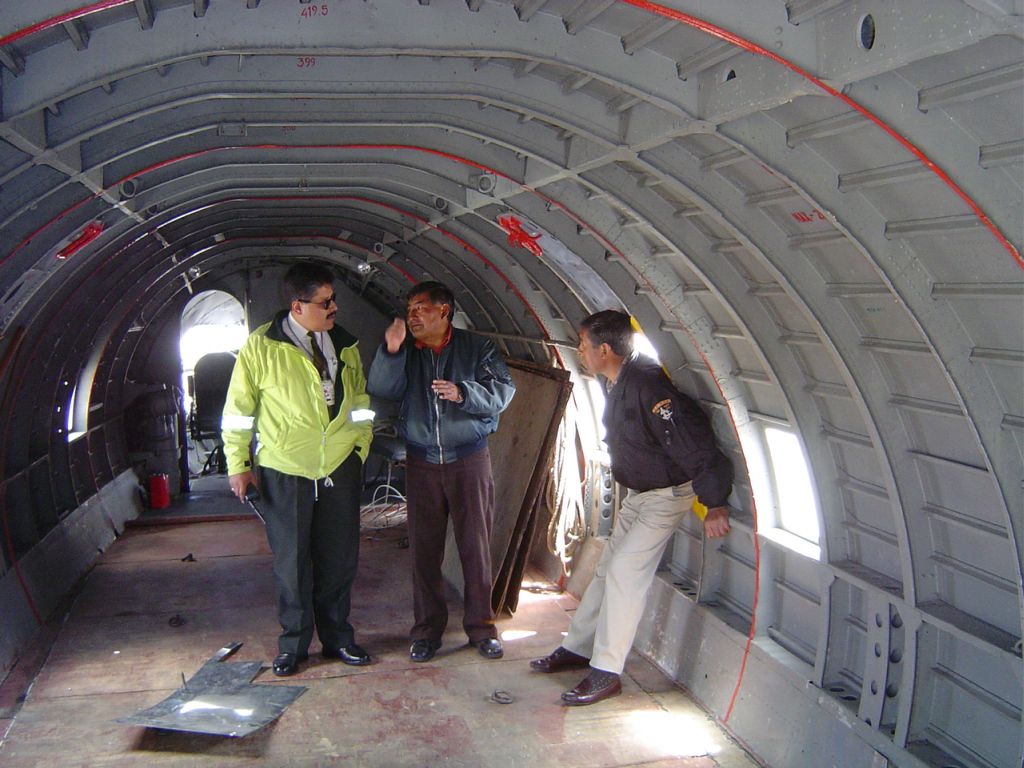
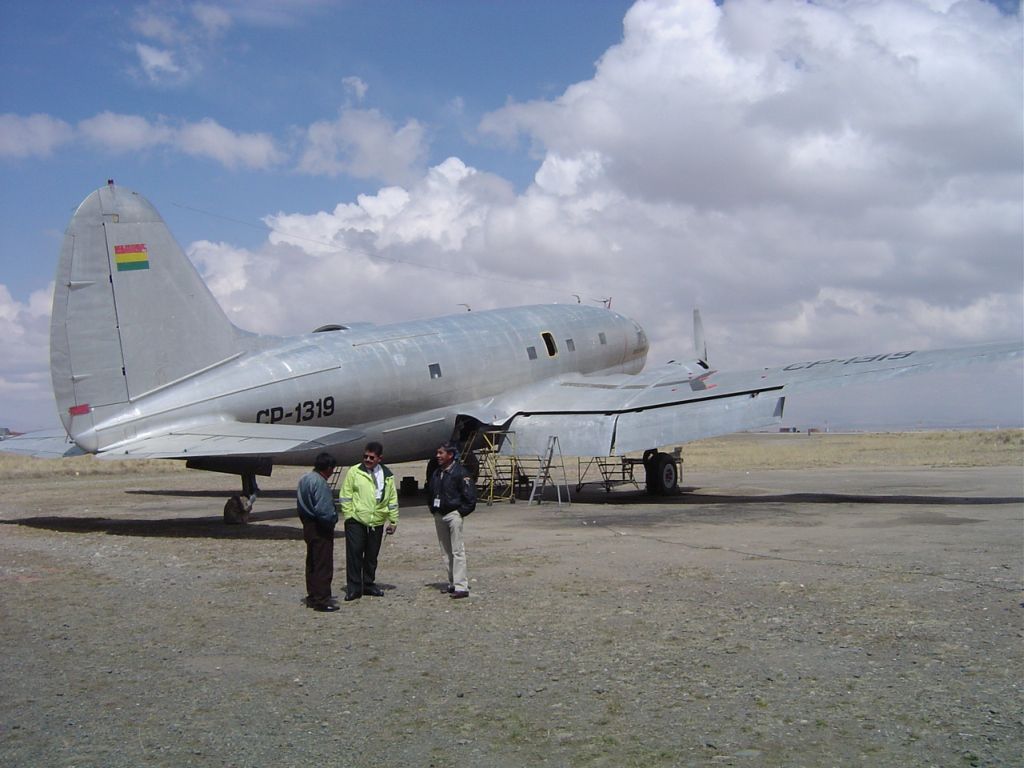
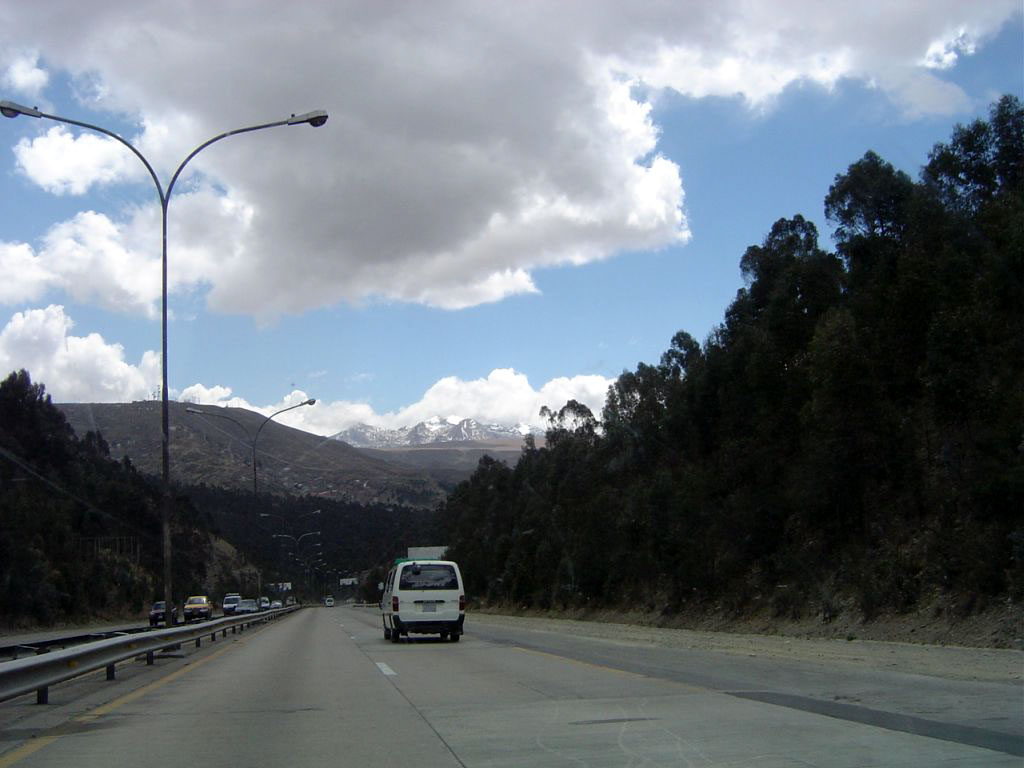
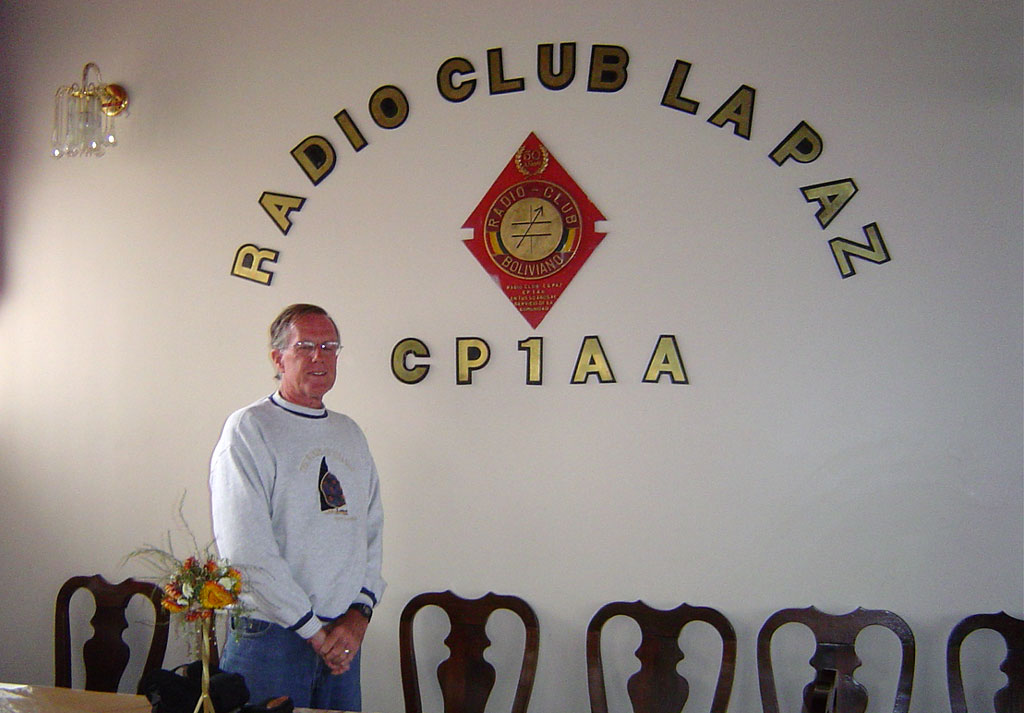
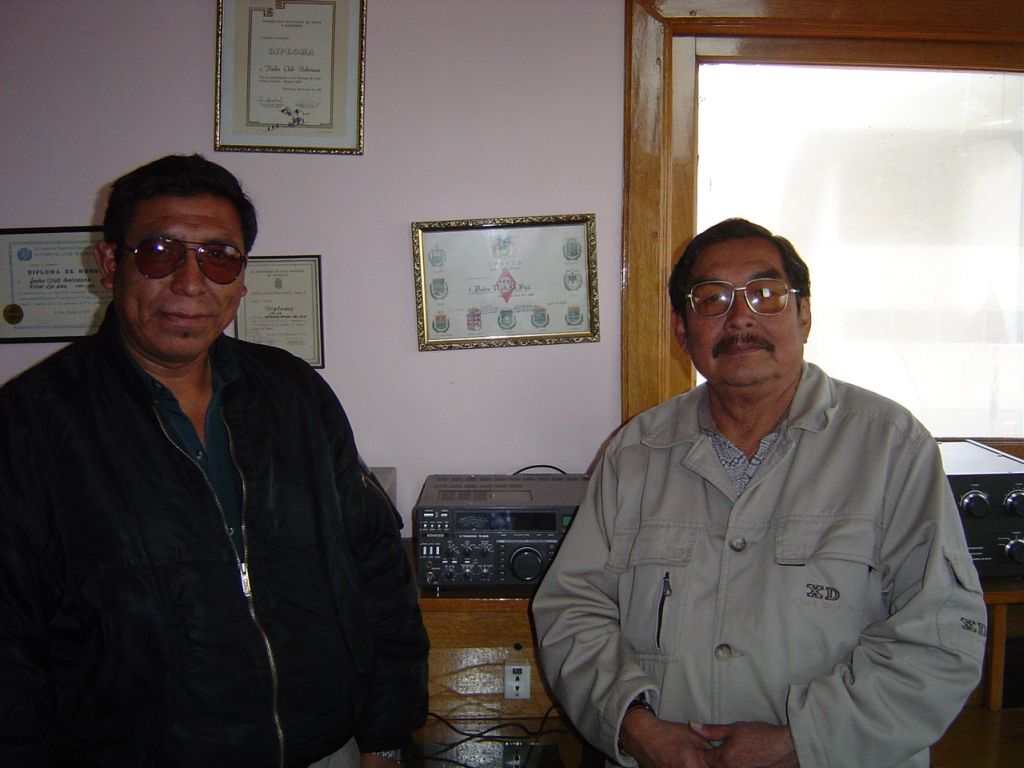
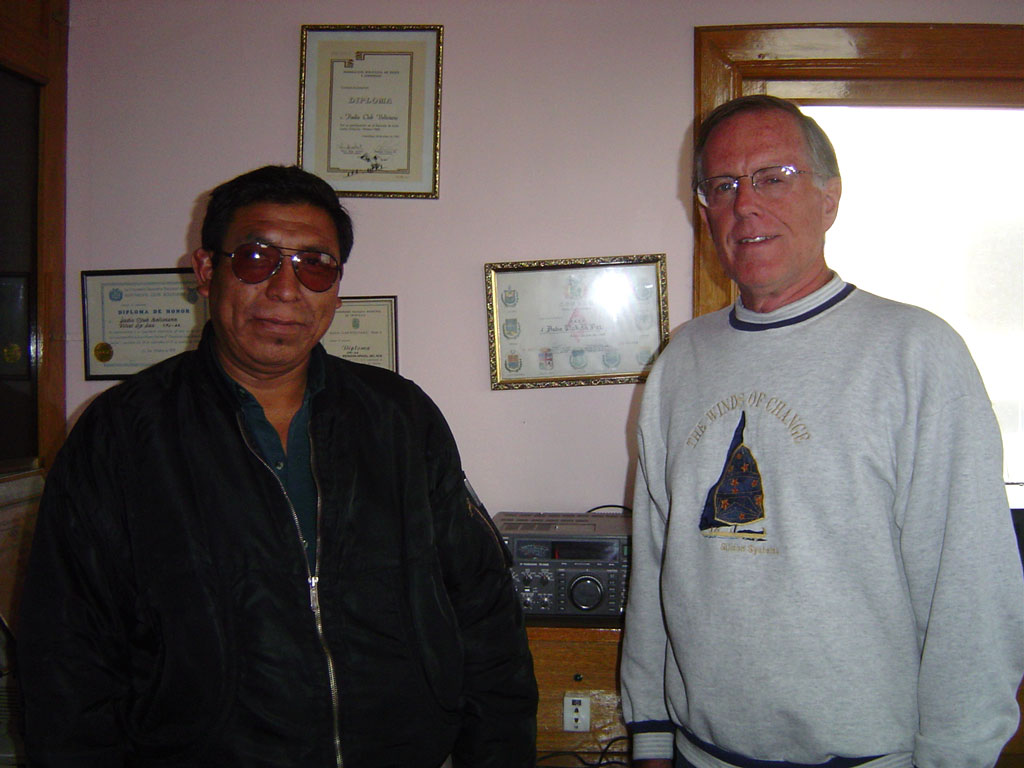
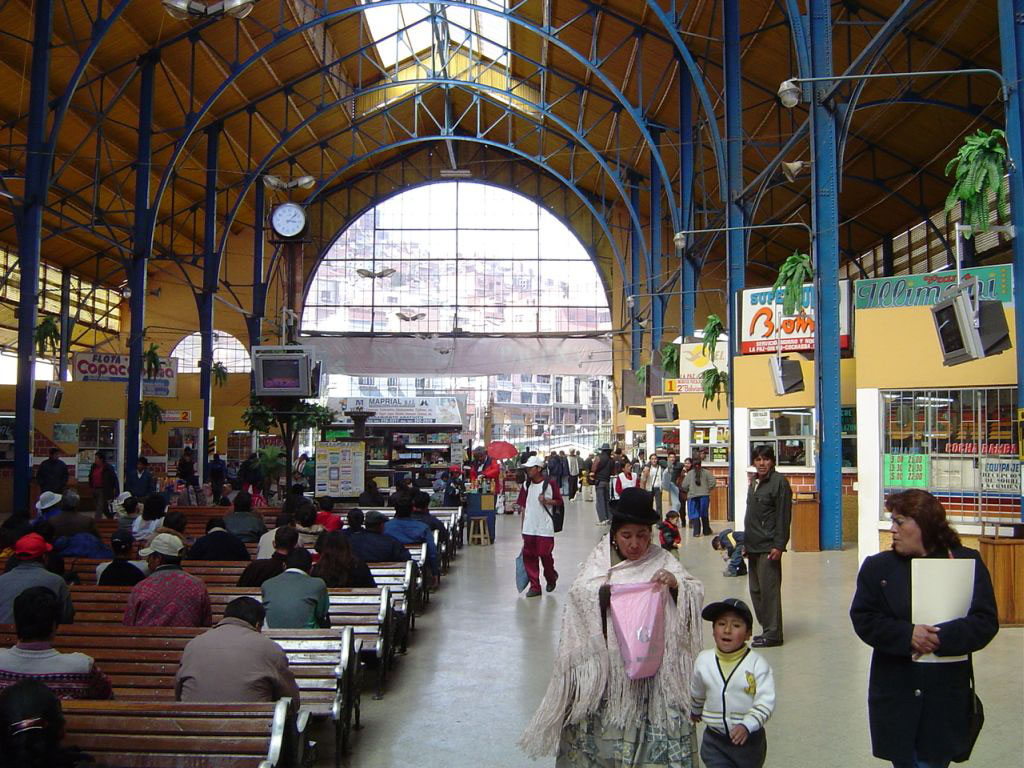
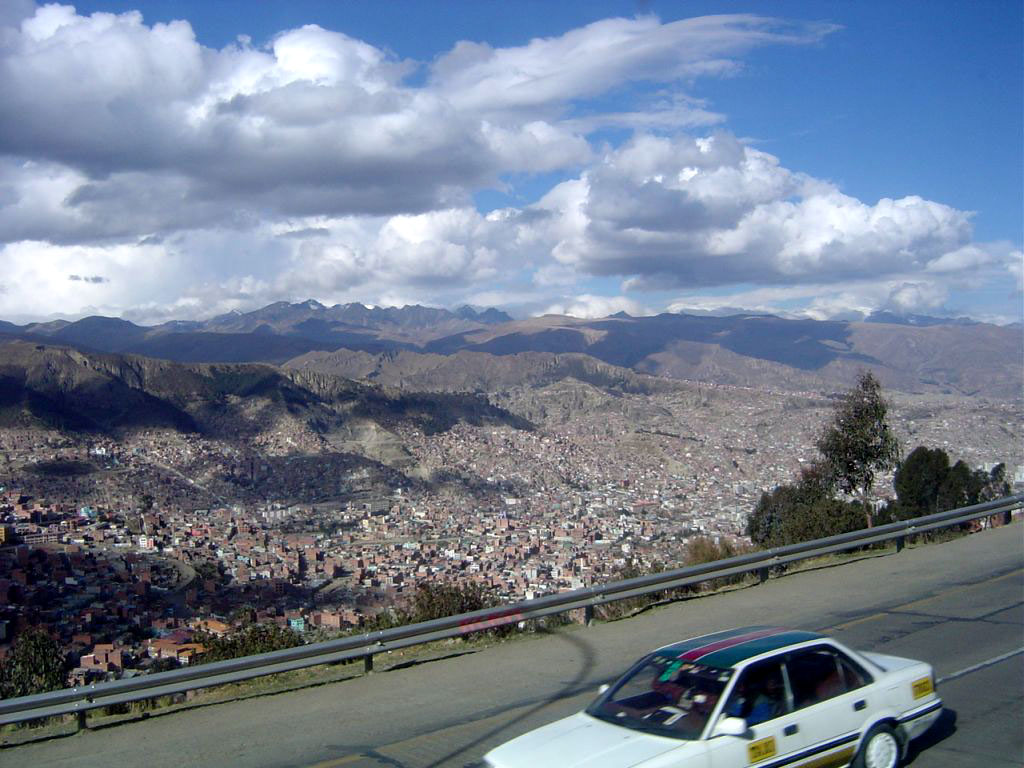
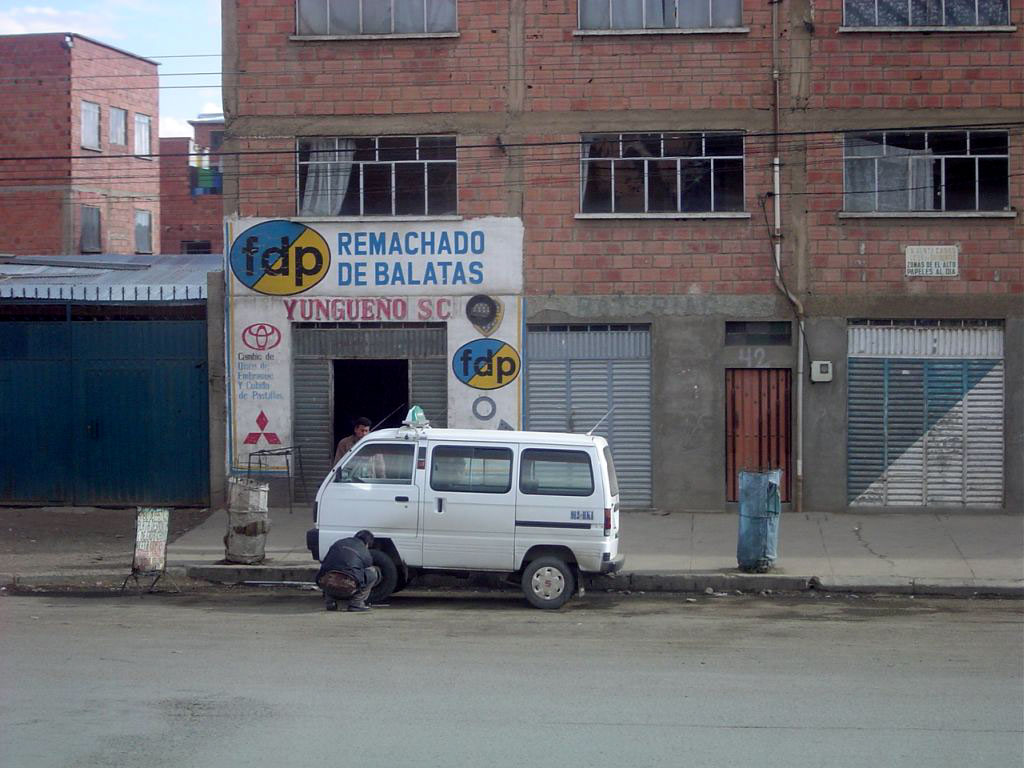
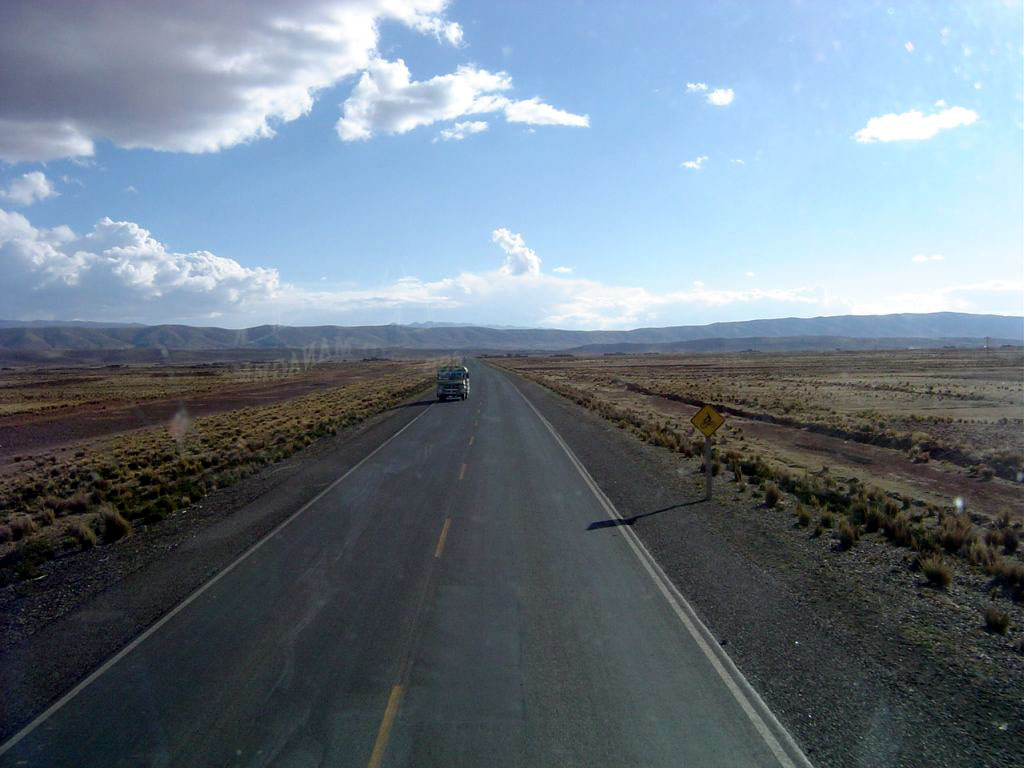
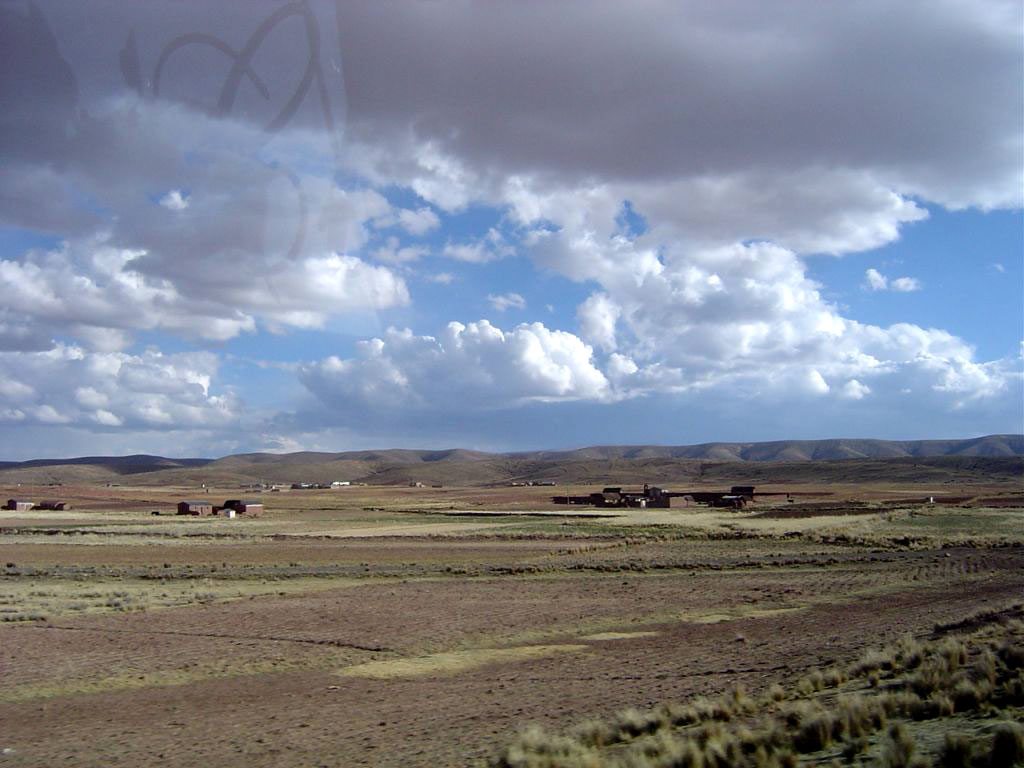
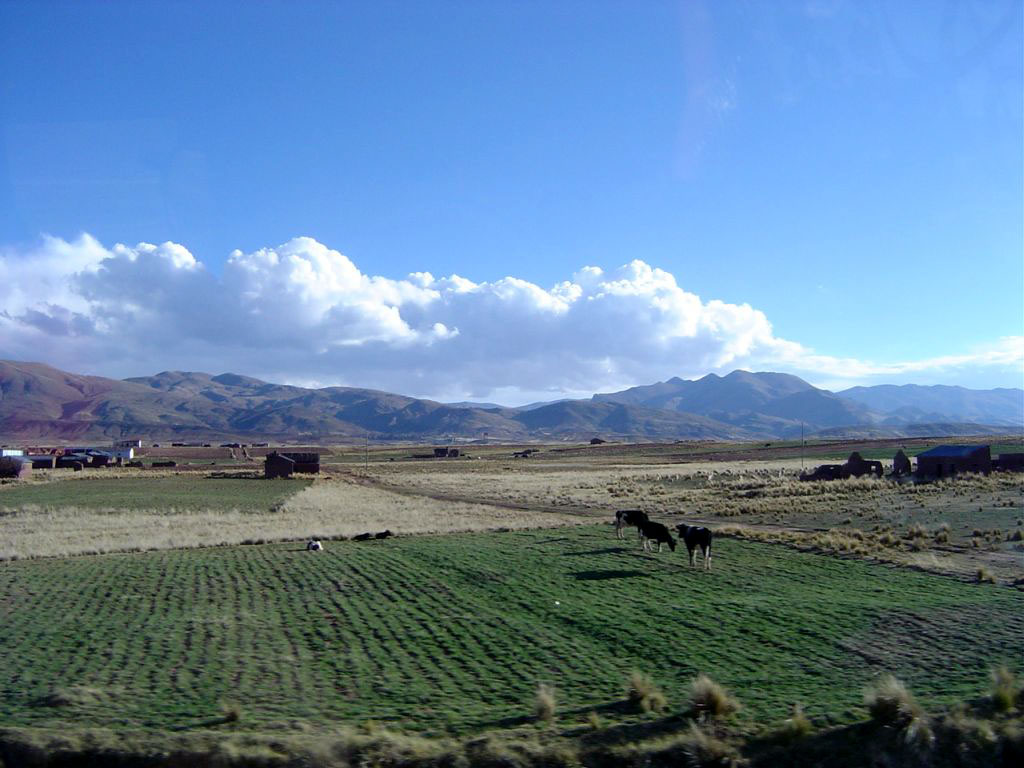
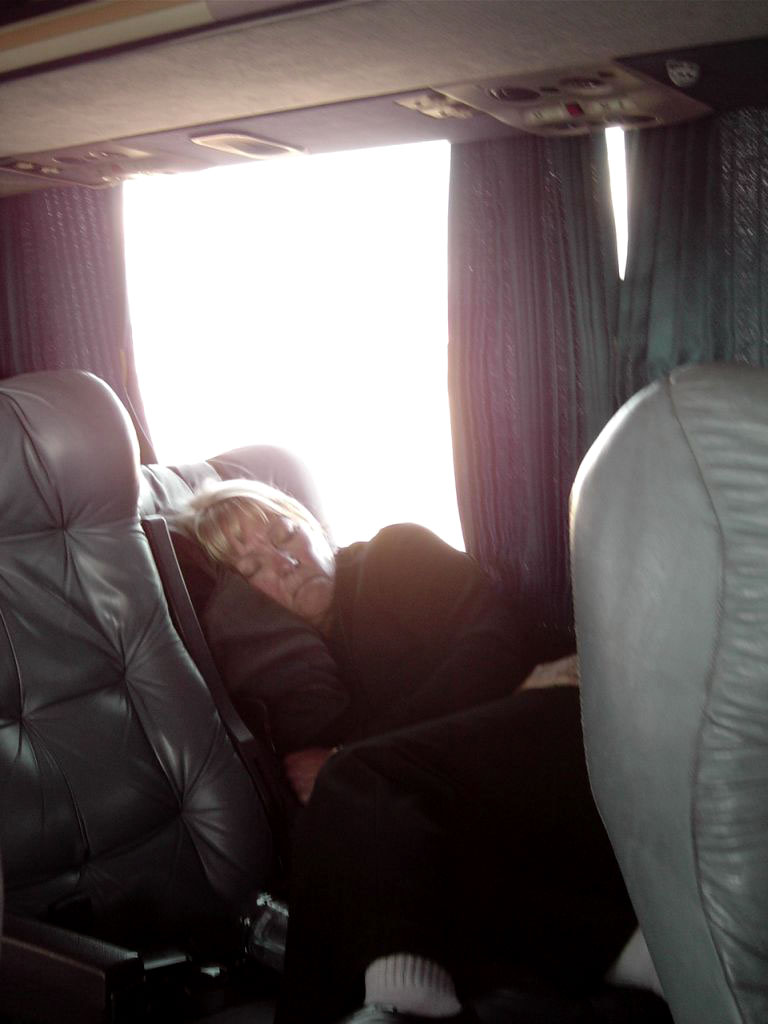
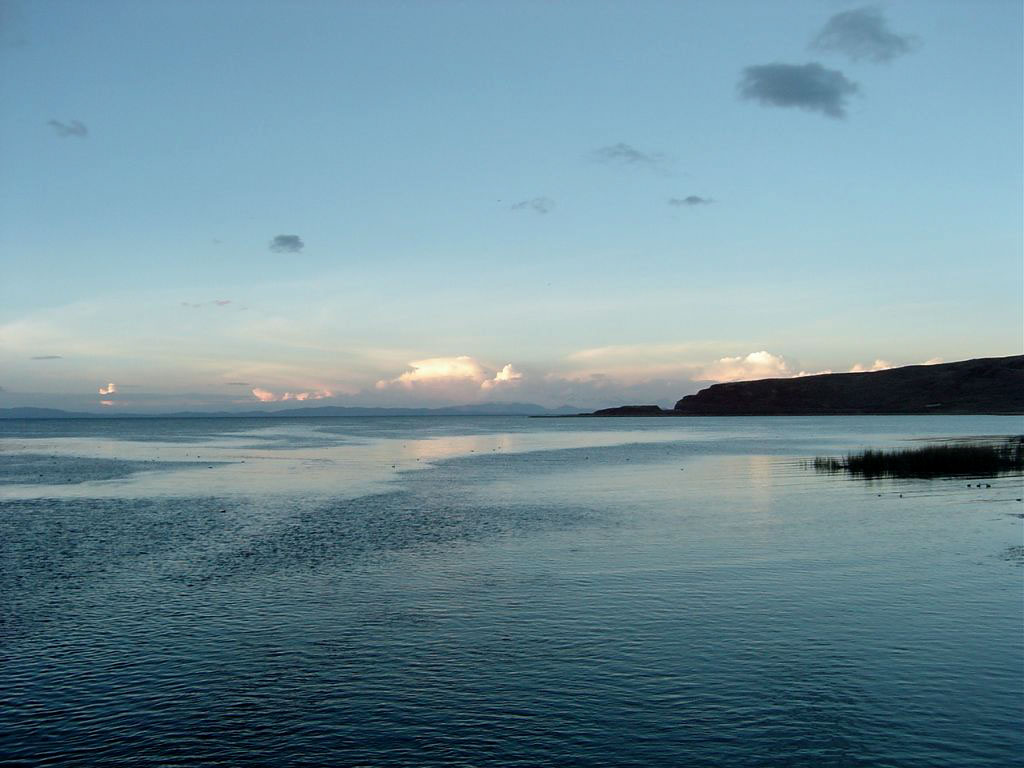
Back in Puno for the night
September 9th
Puno to Arequipa
There are two roads from Puno to Arequipa. Alas, the better one passed through Juliaca, the town we so fervently wished to avoid seeing again. Naturally, there are no signs to indicate the proper turn. Our tried-and-true process of asking every village idiot and taking the most popular answer worked again.
The vicuna is far more dangerous than the llama when it comes to being a road hazard. Llamas stand at the roadside, watching peacefully, while vicunas run along the road, pacing themselves with the cars, then swerve unpredictably, crossing in front of them.
Alpacas and llamas are similar in size; alpacas carry their tails downward and llamas carry their tails up. Vicunas are smaller and quite sleek looking. Haven't figured out where the fourth member of the family, the guanaco, fits in.
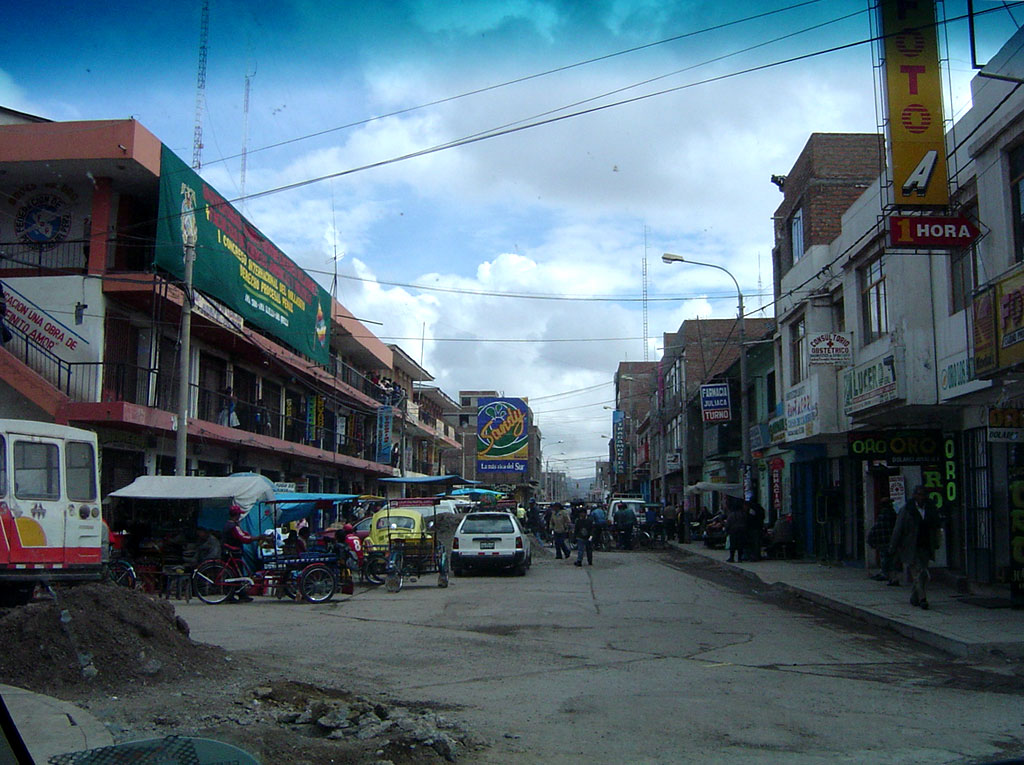
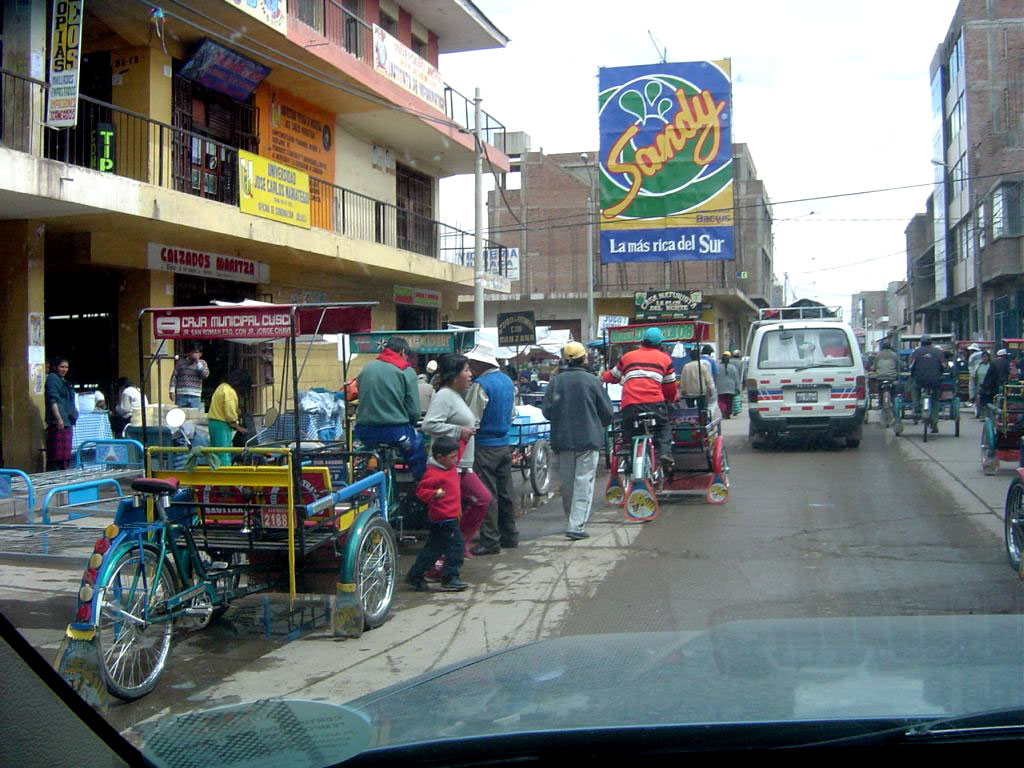
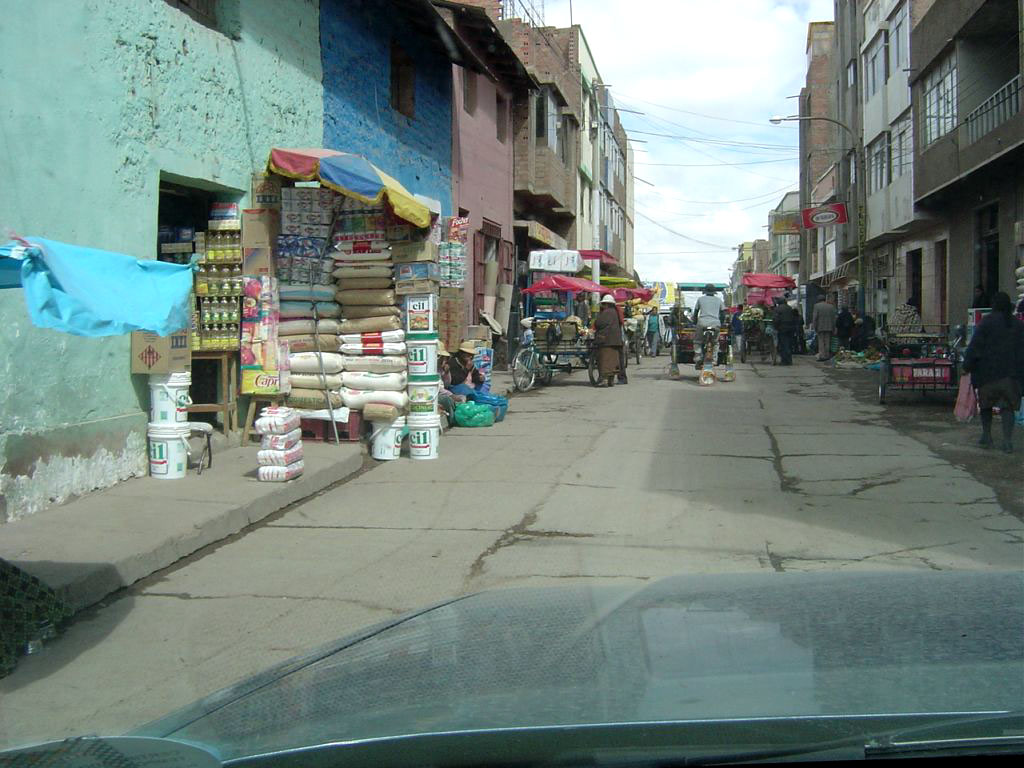
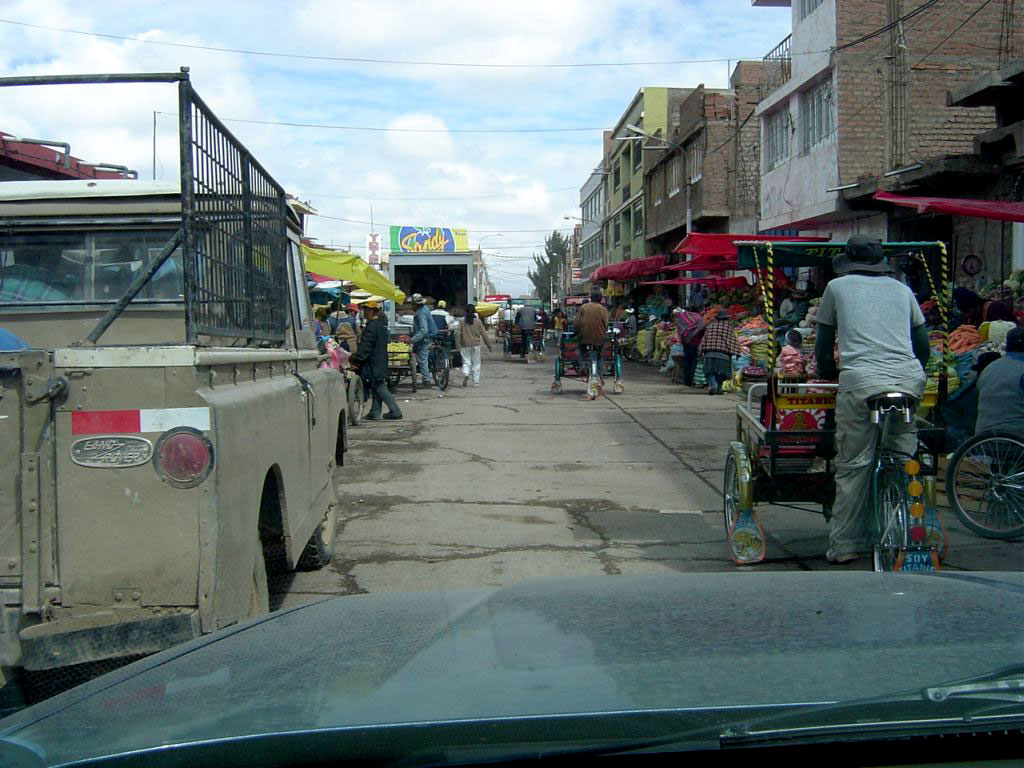
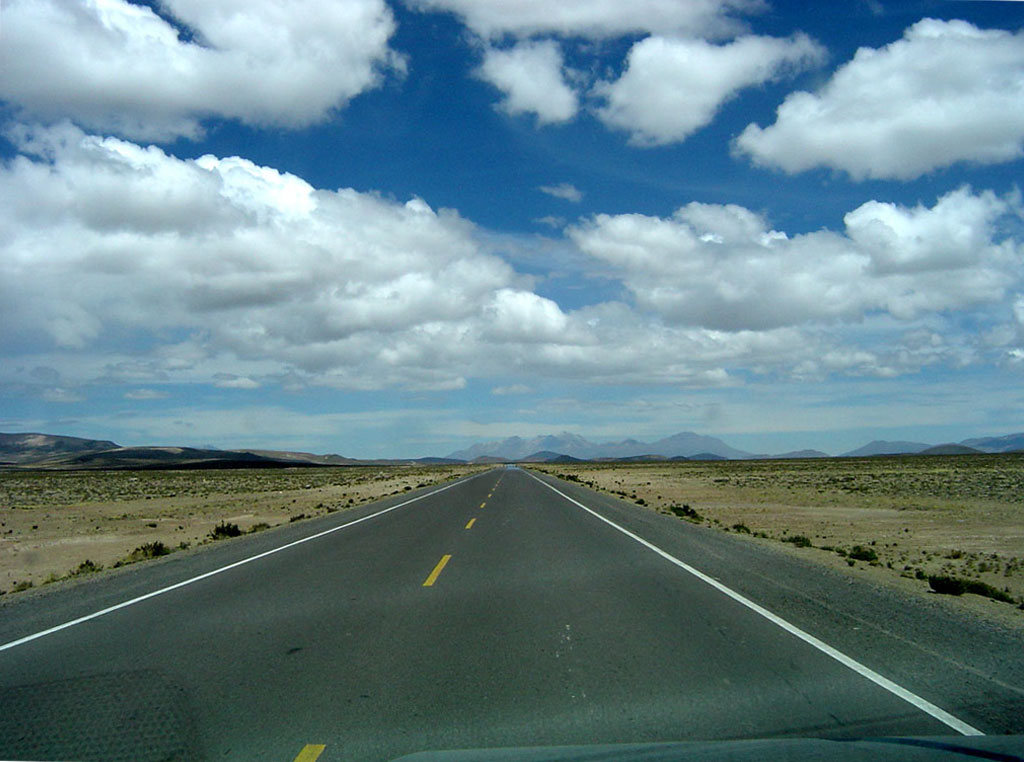
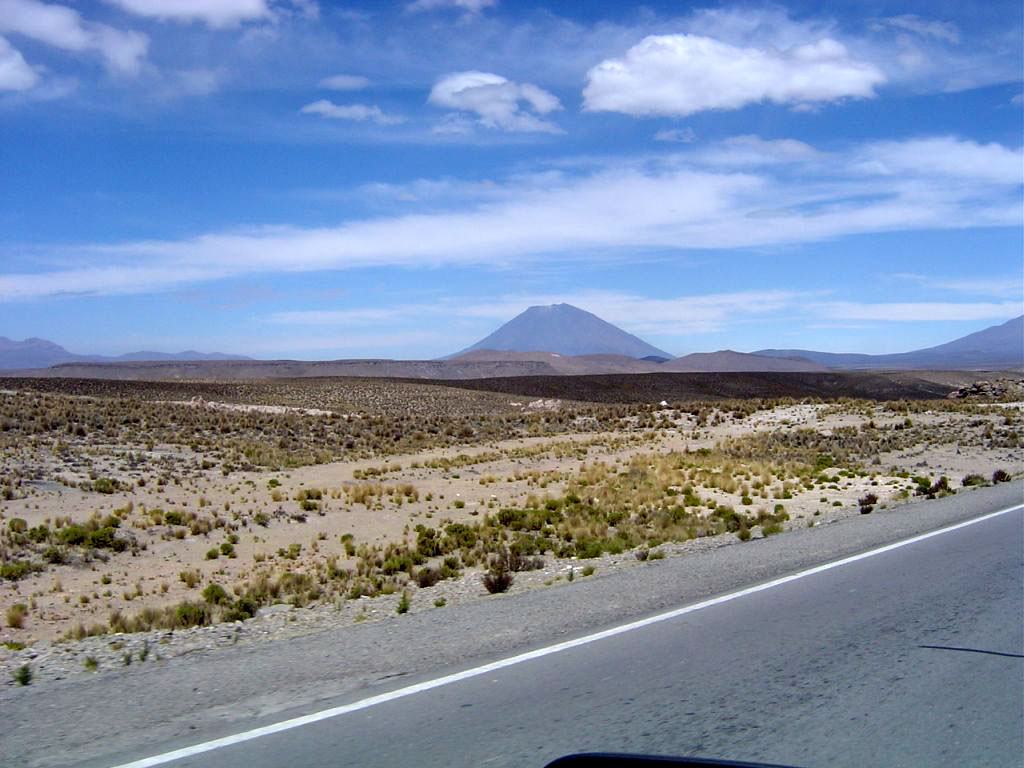
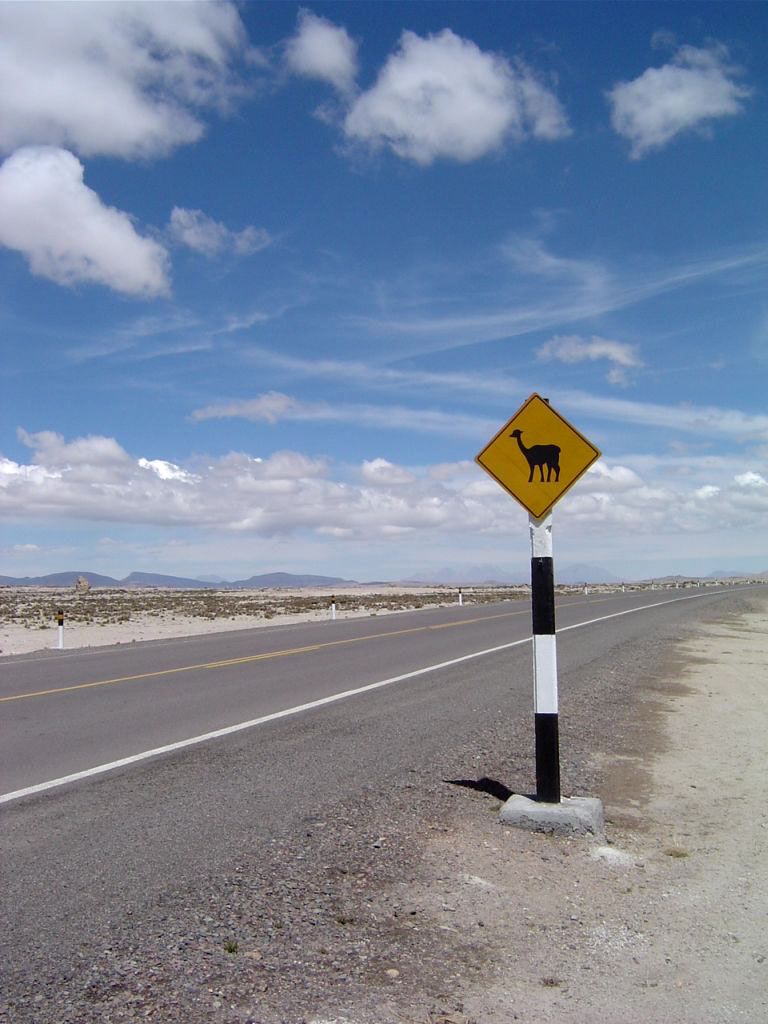
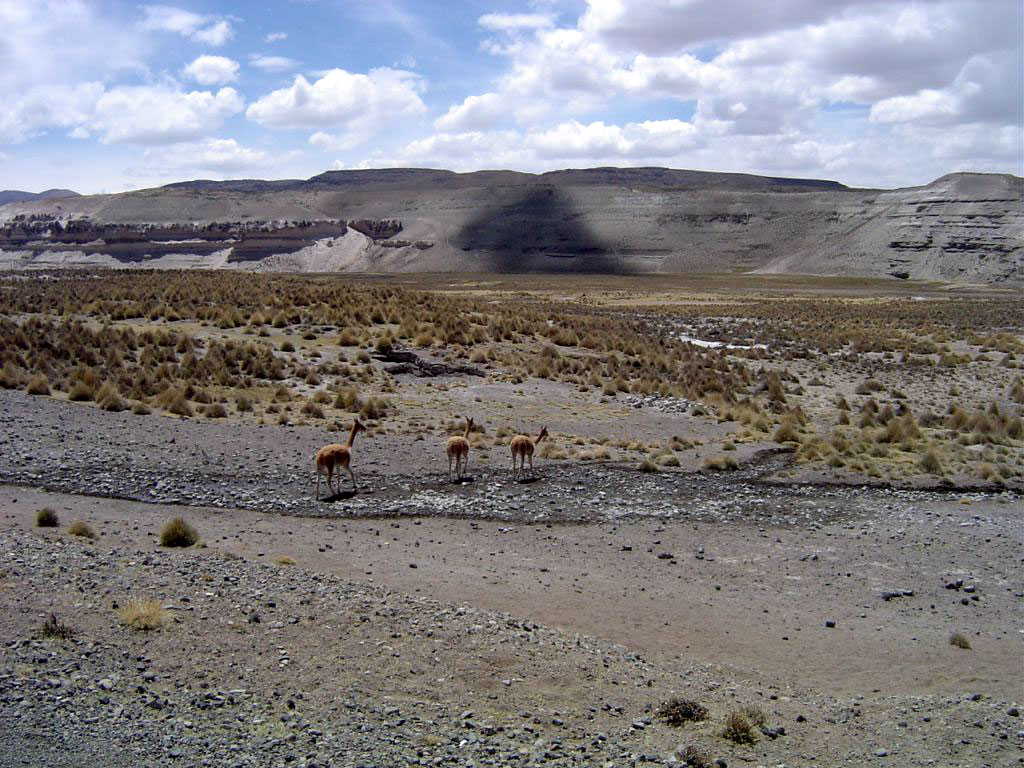
Arequipa, Peru
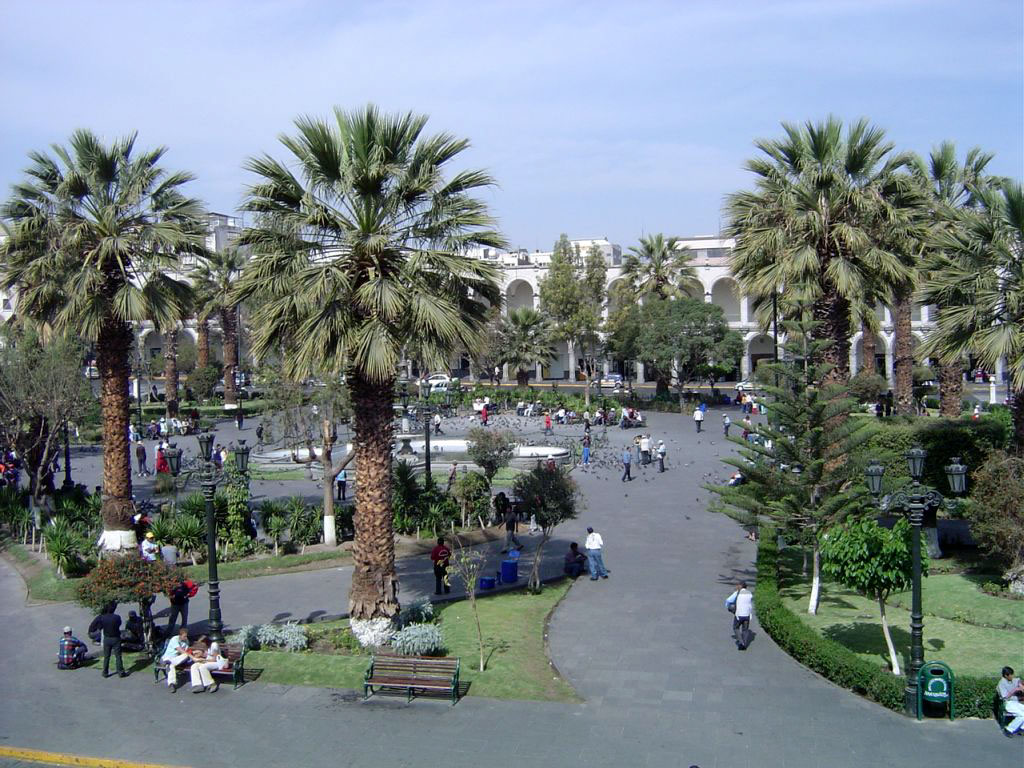
September 10th
Two Goodyear tires on the Jeep got the heave-ho in Arequipa. A very simple test, removing the tires from the car and rolling them on the sidewalk, showed that they weren't round; they wobbled along like a drunken sailor. We should be set now for the Atacama Desert of northern Chile
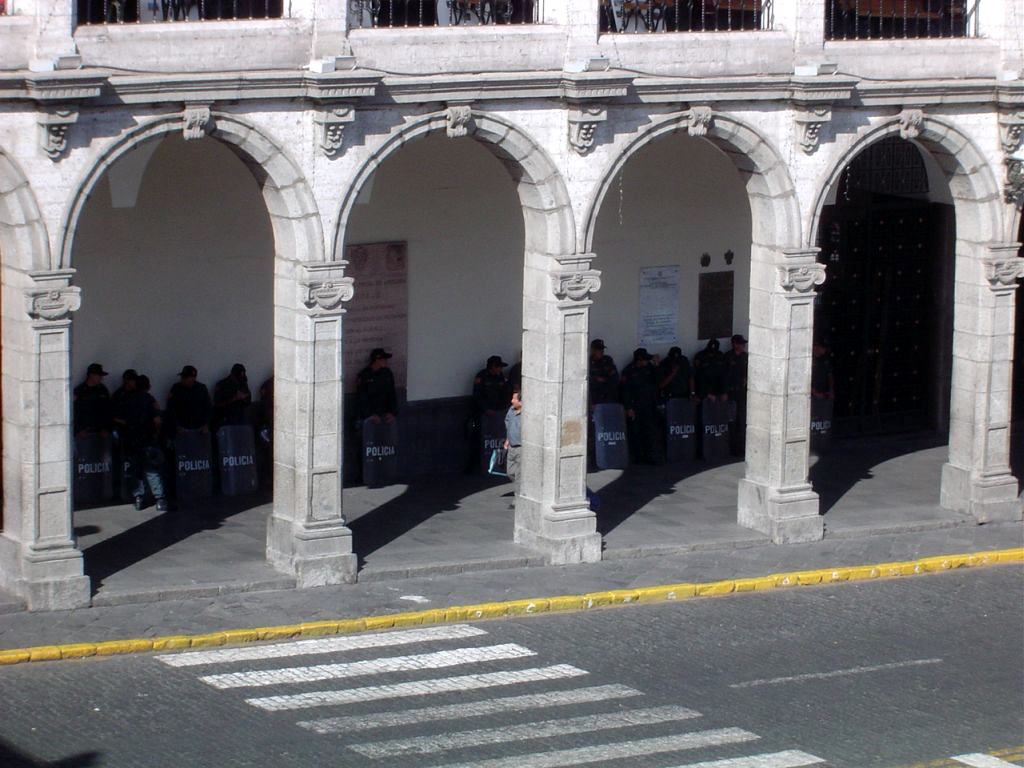
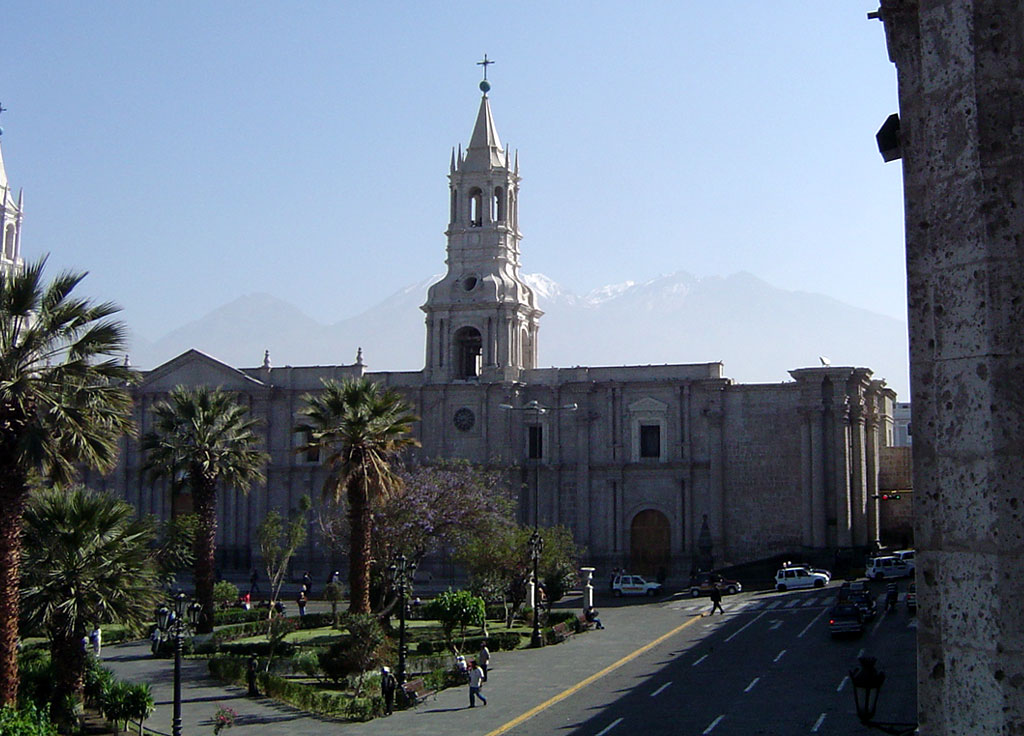
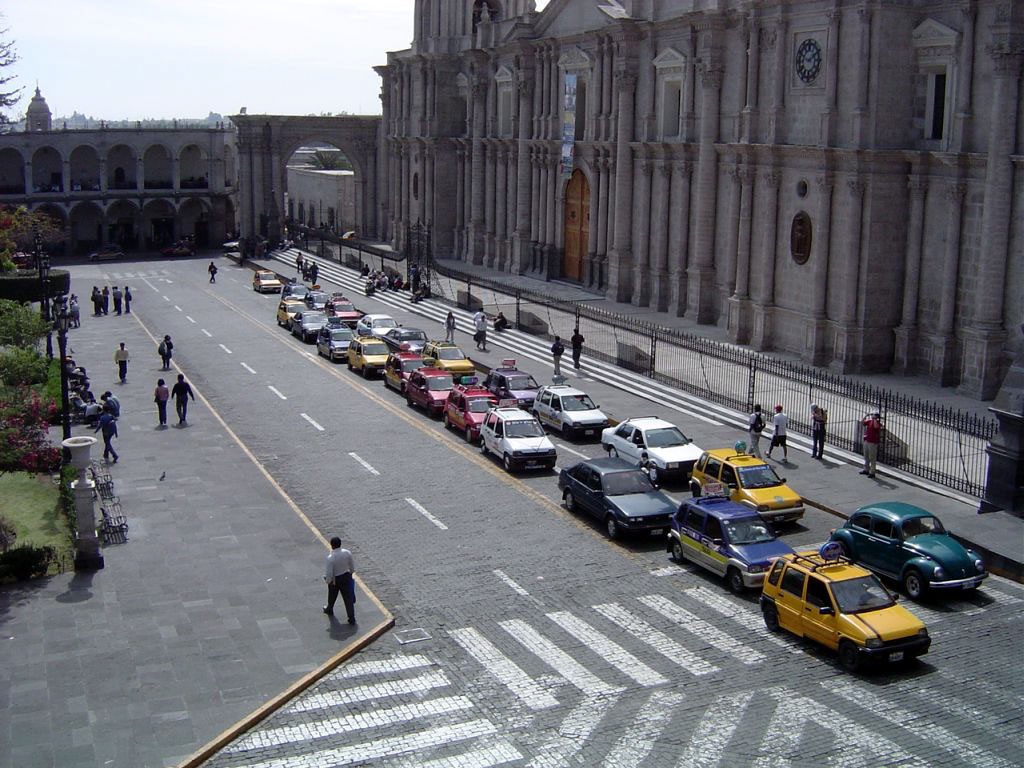
September 11th
A day off, catching up on sleep, web-pages and e-mail